- Share full article
Advertisement
Supported by

Hotel Workers Just Went on Strike in the Northeast. How Will That Affect My Trip?
Though hotel chains say they’ll continue to operate normally, travelers could see disruptions as 1,100 employees walked off the job. Here’s what to know.

By Derek M. Norman
Nearly 1,100 front-desk workers, housekeepers and other employees at about five hotels in two cities walked off the job on early Sunday after failing to come to an agreement in contract negotiations.
The strikes were called at Fairmont Copley Plaza, Hilton Boston Park Plaza, Hilton Boston Logan Airport and Hampton Inn Boston Seaport District in Boston, and the Hyatt Regency Greenwich in Connecticut. They are scheduled to last three days. More hotel workers in other cities could also soon announce strikes.
The strike comes as thousands of workers at Hilton Hotels, Hyatt Hotels, Marriott Hotels & Resorts, and Omni Hotels & Resorts properties across the country — in about 12 cities stretching from Honolulu to Boston — have been engaged in contentious talks since at least May.
The workers, members of Unite Here , which represents many segments of the hospitality industry, have been pushing for higher wages and to address pandemic-era staffing and service cuts that have left some employees feeling overwhelmed.
“The hotel industry has rebounded from the pandemic, and room rates are at record highs,” Gwen Mills, Unite Here’s international president, said in a statement before the strike. “But hotel workers can’t afford to live in the cities that they welcome guests to. Too many hotel workers have to work two or sometimes three jobs in order to make ends meet.”
The affected hotels say they plan to stay open, perhaps with modified services, but they may not always notify travelers that a strike is happening. So inquire ahead of time, or you may be surprised to find a spirited picket line in front of your hotel when you arrive.
Here’s what else you need to know.
There’s a strike at the hotel where I have a reservation. What should I do?
First, call the hotel and ask to speak to a manager to confirm that a strike is taking place at that property. Unite Here has also created a website, FairHotel.org , that offers an updated map of which properties are experiencing labor disputes. Ask the manager which services are being affected by the strike, and ask about the hotel’s cancellation policy.
Then decide if you still want to stay at the hotel.
Besides weighing the effect on services, consider your feelings about the dispute itself, said Bjorn Hanson, an adjunct professor at the New York University Jonathan M. Tisch Center of Hospitality. Some travelers like to support the business and keep their reservation at the property, Dr. Hanson said. Others prefer to support the striking workers by not crossing a picket line.
If you choose not to stay at the affected hotel, he said, you should first book new accommodations and then call your original hotel as soon as possible to cancel.
In the case of past strikes, Dr. Hanson said, “Individual hotels have some discretion, but the hotel company policy was: Whatever our cancellation policy is, is the policy we will maintain during the strike. So at the very least, that is what the regular, average traveler should keep in mind and plan around,” he said.
The cancellation policy at Hilton , Hyatt , Marriott and Omni hotels generally depends on your specific rate and dates of your stay, so you’ll need to look up your reservation on their app or website.
Will my hotel stay open during the strike?
In general, hotels say they are prepared to operate without disruption.
Representatives for Hyatt, Hilton and Omni all said that they had contingency plans to minimize any strikes’ impact on hotel operations. Marriott did not respond to request for comment.
While the chains would not reveal details of those plans, it is likely that they would use nonunion employees, Dr. Hanson said. They might also, for example, substitute a grab-and-go buffet for table service. And outside contractors may be hired to perform services that hotel staff would typically perform.
During the most recent major hotel strike, last summer in Los Angeles, thousands of hotel workers walked off the job just as travelers were gearing up for the Fourth of July. That first strike was resolved after three days . Sporadic walkouts at other properties throughout the summer affected housekeeping services for some guests and caused disruptions after event organizers canceled events .
What are the sticking points in the negotiations?
Hotel workers are calling for higher wages, as well as the reversal of Covid-era staffing and service cuts. Housekeepers at the Hilton Baltimore Inner Harbor , for example, are asking for a raise to $20 an hour from $16.20 now.
During the pandemic, the union said, many hotels cut staffing and guest services like daily housekeeping and room service , which caused some workers to lose income and also created a heavier workload for the remaining workers.
Could there be additional strikes?
Unite Here members at hotels in 12 other cities have all voted to authorize a strike, though a strike authorization does not necessarily mean that workers will walk off the job.
For example, as many as 4,500 hotel workers at other hotels in Boston and Cambridge, Mass., could end up striking at properties like the Omni Boston Hotel at the Seaport and the Sheraton Boston Hotel, which is owned by Marriott. Nearly 5,000 workers in Honolulu, at properties such as the Waikiki Beach Marriott Resort & Spa and the Royal Hawaiian Resort are ready to strike. Labor actions could also affect hotels in cities like Baltimore, San Francisco and New Haven, Conn., among others .
Follow New York Times Travel on Instagram and sign up for our weekly Travel Dispatch newsletter to get expert tips on traveling smarter and inspiration for your next vacation. Dreaming up a future getaway or just armchair traveling? Check out our 52 Places to Go in 2024 .
Derek M. Norman is a senior news assistant for the International section of The Times. More about Derek M. Norman
Spring Valley Your Local News for Spring Valley, New York
Man Asleep In Car In Travel Lane In Spring Valley, Wakes Up, Crashes Into Cars: Police
Aman who was allegedly asleep behind the wheel of his car on a roadway in the Hudson Valley woke up when police arrived, crashed into numerous vehicles, and attempted to flee, injuring several people.
A Yonkers man is in the hospital for evaluation after allegedly falling asleep on Route 59 and then waking up and crashing into numerous vehicles as he tried to flee.
The incident occurred in Rockland County in Spring Valley at 6:50 p.m. on Wednesday, Aug. 28.
According to Spring Valley Police Det. Matt Galli, an officer en route to another call for service, found Westchester County resident Nelson Torres, age 54, of Yonkers, asleep at the wheel on Route 59.
Galli said the officer positioned his patrol car in front of the other vehicle to protect the driver and the public, called for additional officers, and then attempted to get into the car to render aid to the driver.
When officers could not rouse the driver or get into the car due to the locked doors, they attempted to break a window to gain entry, Gallie said. At this point, Torres woke up, tried evading officers, and fled westbound on Route 59.
Gallie said Torres intentionally crashed his car into unoccupied and stopped police cars and multiple other occupied vehicles of people traveling on the roadway in his attempt to get away.
The vehicle then became disabled a few hundred yards down the road from all the accidents and was penned in by police cars; at this point, he was removed from the vehicle and taken into custody.
Torres, two police officers, and several people from vehicles that were struck were taken to local hospitals with minor non-life-threatening injuries, Gallii said,
Torres was taken to Nyack Hospital for medical and psychological evaluation, where he remained as of Thursday, Aug. 29.
He was charged with:
- Reckless endangerment
- Unlawful fleeing of a police officer in a motor vehicle
- Reckless driving
- Leaving the scene of a personal injury accident
- Driving while ability-impaired
- Driving while ability impaired by drugs
- Numerous vehicle and traffic offenses.
This is a developing story. Check back to DailyVoice for updates.
Click here to follow Daily Voice Spring Valley and receive free news updates.
SCROLL TO NEXT ARTICLE

6 Careers That Combine Your Passion for Travel and Photography
- June 1, 2020
- Career Guidance
Do you have a creative brain along with a sense of wanderlust? Well, travel photography could be an ideal career path for you. It’s one of the most upcoming unconventional careers these days. Travel photography offers a wide range of career opportunities that can take you and your camera heading off for endless adventures around the world. In this post, we will look at the top career paths that can help you to combine your passion for travel and photography .
6 Top Careers in Travel Photography
By Rosana Beechum
Travel photography offers a wide range of potential career options, where you can head off for countless worldwide adventures around the world. Whether you want to capture photos of happy families at resorts or onboard cruise ships or follow a path as a photojournalist, there are several ways to combine your passions for both photography and travel if you have the right amount of talent and determination.
There are employment opportunities available, but turning your dream into a reality by starting your own business as a travel photographer is often the best way forward. The sky really is the limit, and there’s such a growing need for photographic content these days that you’ll never be short of things to take pictures for and companies and individuals to sell your snaps to.
To get started, you’ll need to:
- Put together an online portfolio of your work
- Find a niche or specialty
- Learn how to market your work and perfect your pitch
- Be flexible; you could be working away from home at any given moment
- Invest in high-quality camera equipment
So, once you’ve got all the basics covered, it’s time to consider which travel photography job is the best option for you.
Travel Blogger
Do you enjoy writing as much as you do taking photographs? If you want to be able to take full control of your career, decide where to visit next, and release all your work to the world without having to wait for them to be approved, travel blogging could be the ideal choice for you.
And, travel blogging isn’t always about writing and photographing where you’ve visited, and talking about the best attractions, although you can certainly do that if you like. You can turn your travel blog into a publication that focuses on almost any niche that you want, such as environmental images and articles highlighting climate change issues, or you might even want to publish political pieces and cover destinations affected by war.
Freelance Travel Photographer
Going freelance as a travel photographer is another great option if you’d like to retain most of the control regarding where you work and what you photograph, but it does require a lot of patience, determination, and organization. You’ll be essentially running your own business, so you will need to dedicate the time to finding clients and work, and marketing your business alongside producing high-quality content and keeping a track of your finances.
Since so many brands, publications, and businesses are always in need of photo content, you can work for multiple clients at a time with endless opportunities to make money. You’ll need a strong portfolio to market your business and land those top clients; check out Format – this site allows you to easily build an interesting, professional photography portfolio that you can immediately start sharing with your potential clients.

Cruise Ship Photographer
If you would rather find an employer than run your own business, consider applying for a photographer job on a cruise ship . You’ll be visiting a number of different ports around the world, but there’s a lot of time spent on the cruise ship itself, so you’ll need to make sure that you can handle often repetitive working conditions and small staff cabins. Typically, you’ll be capturing portraits of guests onboard the ship, at dinners and events, taking part in activities, and more. Most of the work is focused around what happens on the ship itself, but if you’re lucky, you may also be able to enjoy some adventures off the boat when it docks. The size of the ship can differ; you could work on a luxury yacht or a massive cruise liner.
Photojournalist
Photojournalists are some of the most well-respected professionals in the world of travel photography, and while the position is quite similar to working as a freelance journalist, you’ll be more likely to get commissioned work from clients or publications. Typically, you will be taking photographs that relate to the coverage of an issue, event, subject, or location that helps to provide more information and tell a story for a magazine, newspaper, online publication, or NGO.
Unsurprisingly, many photojournalists are also trained journalists who can provide in-depth captions for their images or even write a supporting story. It’s a very competitive market, so you’ll want to gain a lot of experience before you approach editors or apply for jobs. You might want to consider internships, or starting your own website or blog where you can publish your own stories or photo features. It can also be helpful to study journalism and find a niche or a certain issue that you are passionate about.
Destination Wedding Photographer
Photographing destination weddings is a great opportunity to travel to some of the loveliest places in the world and spend your time producing unforgettable, precious images for couples on their big day. As a destination wedding photographer, you could work in employment for an overseas wedding planning company or venue, but more often than not, wedding photographers are self-employed giving them the freedom to choose which weddings they want to work at.
Typically, you will be booked by a couple to photograph their wedding day; they might be traveling to get married somewhere close to where you are based, or you could travel abroad with them to photograph their big day. Many destination weddings take place in some gorgeous locations and this job could see you traveling to France, Italy, the Greek Islands, Thailand, and many more beautiful countries. If you’re equally passionate about both wedding and landscape photography, this is the perfect gig that allows you to combine the two.
Resort Photographer
Whether they’re a beach, island, ski, or theme park resort, many resorts will have photographer positions available. Typically, photographers are hired during the high season, making it a great way to work your way around the world in a variety of different places as you can find work at different resorts during the different seasons. Since the peak seasons tend to differ at different places around the world, it’s entirely possible to find work as a resort photographer all year round. Plus, you will enjoy a reliable, fixed income and most resort photographers are offered discounted staff accommodation, which can feel like you’re on vacation.
Most of the time, the positions will be quite casual and you’ll be required to put in a few hours of work each day photographing people enjoying activities around the resort or taking part in events. You might also be booked for family portraits and work in the photography store on-site. While it’s probably not the best job to go for if you want to earn a lot of money in a short amount of time, it can be a huge amount of fun and a fantastic way to gain travel photography experience and improve your skills while getting to explore a gorgeous destination at the same time.
Related Articles:
Careers and Jobs in Travel and Tourism
How to Become a Freelancer
Top 5 Creative Careers in India to look forward to
Combining your love of travel and photography is easier than you might think, with plenty of positions to consider. Whether you want to work as an employee for a large travel company, cruise ship or resort or start your own business taking photographs around the world, the opportunities are endless for anybody with the drive to succeed.
Featured Image Source: iStock
Note: This is a Sponsored Post!
Share this:
Discover more from stoodnt.
Subscribe now to keep reading and get access to the full archive.
Type your email…
Continue reading

Our Expert Guide to the BEST Travel Cameras in 2024
- Last Updated: December 13, 2023
We’ve spent years working as professional travel photographers, and are proud to have put together this definitive guide to the best travel cameras in 2024 for every budget, based on actual hands-on experience.
One of the best souvenirs you can bring home from your adventures abroad is photographs.
As the old saying goes, pictures are worth a thousand words, and nothing brings back the excitement and thrill of holiday memories quite like looking back at your photos.
These days almost everybody has a decent camera in their pocket, thanks to the wonders of modern smartphones. And while these are fine for the average person, if you really want great image quality, you’re going to have to invest in something better.
People say, “It’s not the camera that takes good photos, it’s the photographer”, and this is completely true. Yet there’s a reason professionals use expensive gear – they are better for the job.
Never fear though, that doesn’t mean you need to go out and spend $10k on a set-up! Definitely not.
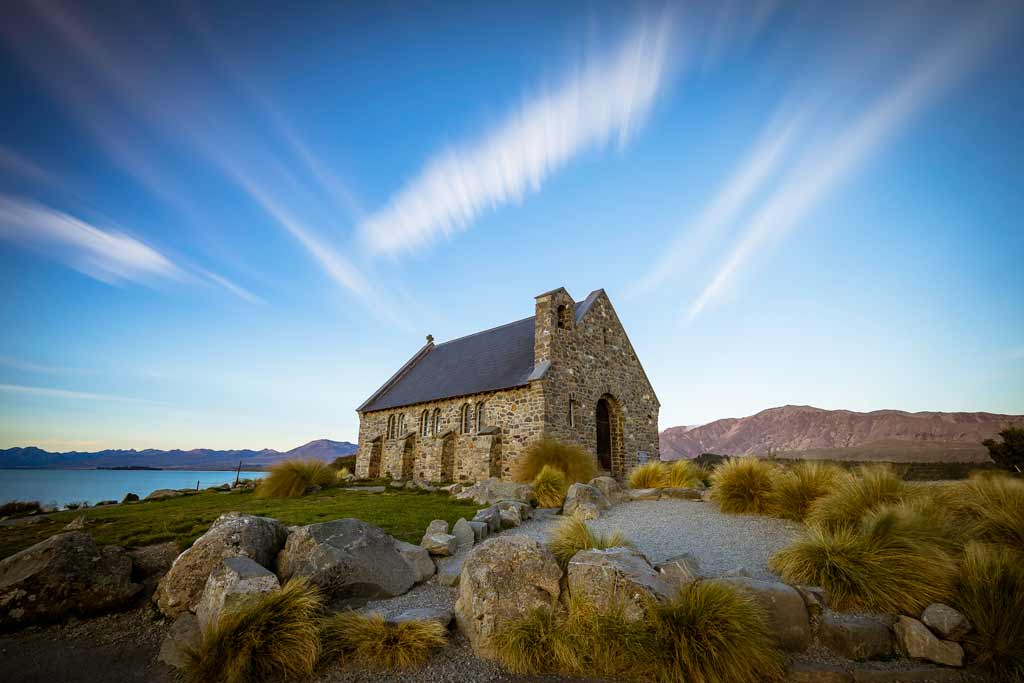
In fact this article is going to save you time and money by diving straight into the best travel camera for every budget.
So why listen to us?
We’ve been working as professional travel photographers for almost a decade, and have been fortunate enough to put hundreds of cameras to the test during our career.
Based on our personal experience, we’ve been able to narrow down the absolute top choice in every category.
Whether you are a beginner, intermediate or professional, or even if you know nothing at all, we’ll help you make the right choice so you don’t waste your money getting something that just isn’t up to the job.
READ MORE: Check out our comprehensive guide on how to take better travel photos .
Let’s dive into our comprehensive guide for the best camera for travel photography.
Table of Contents
Our Recommendation
Bonus: recommended lenses for sony a6600, bonus: recommended lenses for sony a7iv, size and weight, resolution/megapixels, interchangeable lenses, manual settings, weatherproofing, stabilization, mirrorless vs dslr, what camera do most professional photographers use, what camera is best for travel videos, what is the best small camera for travel, what is the best travel camera in 2024.
Without further ado, let’s get into the article!
Disclaimer – NOMADasaurus is a participant in the Amazon Services LLC Associates Program and the Amazon EU Associates Programme, an affiliate advertising program designed to provide a means for sites to earn fees by advertising and linking to Amazon.com and affiliated sites.
GoPro HERO12 Black – The Best Action Camera
Action cameras have come a long way since we bought our first one back in 2010.
They used to be reserved just for people who were into extreme sports – skiing, skydiving, motocross, scuba diving, etc.
Now they have become one of the top travel cameras on the market thanks to their durability, compact size and high quality.
The good ones shoot in at least 4K video (this one though actually goes up to 5.3k), are completely waterproof and even connect to your phone so can take great photos from any angle.
They also shoot time-lapse photography, which is great if you’re catching an epic sunrise or particularly busy urban scene.
Even if you are not interested in jumping off of cliffs or mountain biking through a jungle, having an action compact camera is still a brilliant tool to have in your suitcase.
They are especially awesome if you’re looking for the best cameras for adventure travel.
The undisputed king of action sports cameras is GoPro, and we’ve been proudly using them for over 13 years.
These epic cameras have insane image quality and shoot some remarkable video. They’re also extremely durable, waterproof and fit in your pocket.
Adding to the GoPro series is a huge range of accessories that makes getting footage limited by only your imagination.
Check out our brand new GoPro HERO12 Black review to see if it’s right for you!
Different mounts allow you to put them just about anywhere, extension poles get unique angles (perfect for selfies), you can stick a GoPro on a tripod and there are even filters available.
We’ve had just about every GoPro camera since the original HERO was released, and we’re super excited to share that the newest one on the market is by far the best ever.
Their latest camera is the GoPro HERO12 Black , following hot off the heels of the successful HERO11 (click the link to read our review of it), and it’s risen the bar once again.
When the HERO7 came out they introduced a number of revolutionary features, such as HyperSmooth (in-built image stabilisation), TimeWarp (awesome hyper-lapse videos) and SuperPhoto (HDR photos on steroids).
The HERO9 added a front-facing LCD screen, which really stepped things up a notch, especially for vloggers.
The HERO10 brought in the new GP2 processor, which made everything work, well, just better.
The HERO11 went bonkers with a brand new larger sensor, 10-bit colour and all new aspect ratio.
And now with the HERO12 the company has gone and made everything more refined with a host of new features and upgraded battery life.
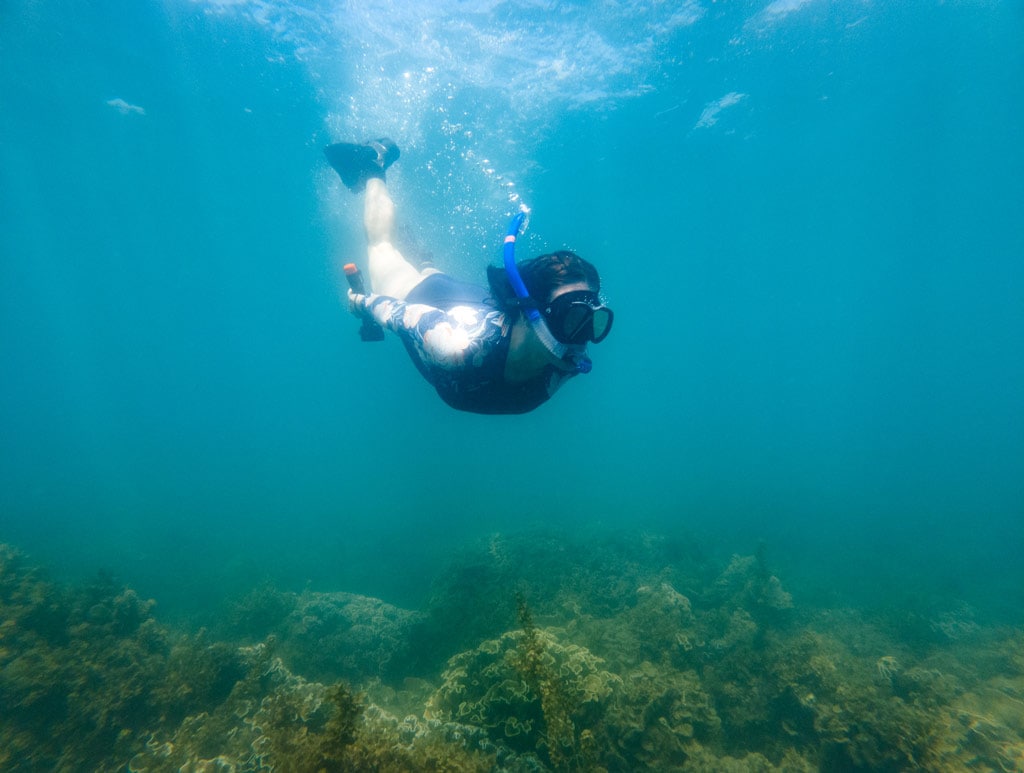
Boasting the fantastic GP2 processor, 1/1.9″ sensor and 8:7 aspect ratio, the latest GoPro HERO12 Black now has HDR video to go along with the expert camera settings.
The massive aspect ratio gives more room to crop, so you can shoot in one perspective and scale later for portrait social media content or landscape YouTube videos.
The camera shoots in 5.3k 60 frames per second, 4k at 120fps and 2.7k at a whopping 240fps (8x slow motion), which also allowing for 27 megapixel screen grabs when using 5.3k on the full 8:7 ratio.
The stabilization is even better with HyperSmooth 6.0 (in-built horizon levelling up to 360 degrees), TimeWarp 4.0 allows to switch between hyper-lapse, real-time and slow-mo recording in the same video with a tap of the screen, and the SuperPhoto has improved HDR abilities.
The screens are still very responsive and look excellent.
SuperPhoto for photographers, in particular, means you can point and shoot, and barely have to edit before uploading to social media. Although we still recommend shooting in RAW for the pros out there.
This article talks more about how to take better GoPro photos, written by a pro.
For the purists out there, the GoPro HERO12 shoots in RAW format for all photo modes.
There is still voice activation and the entire unit is waterproof to 10m, meaning there is no need for a dive housing if you’re not going below that depth.
Also the all-new Night Effects modes are really awesome. Who would have thought you could capture light trails and the Milky Way on such a tiny camera?
For the video gurus out there the HERO12 is a gimbal killer. What does that mean? It means HyperSmooth 6.0 is on another level.
The HERO7 stabilisation was amazing for vlogging and action sports, as was the HERO8 and 9, but after testing the new HERO12, the stabilisation is even better again. Don’t know how they do it, but they do! And it works at 4K at 120fps, TimeWarp and live streaming!
Want slow motion? How does 2.7k at 240FPS sound? Buttery smooth, that’s for sure.
Whereas in previous models they had White, Silver and Black models, the HERO12 only has a Black model.

Canon Powershot SX740HS – The Best Affordable Camera
If you want a dedicated camera that is cheap and still takes decent photos then you really are spoiled for choice.
We’ve personally owned a whole range of different brands in this range, from Canon to Fuji to Olympus to Sony, and with the way the best travel camera market is now if you’re not fussy about the brand you get, then you can’t really go wrong. But let us explain what you’ll need.
You’ll basically be looking for a small point and shoot, something that is foolproof and most importantly quite durable. Having a big zoom range is a big bonus so you can crop right in on different scenes.
The ability to use manual settings will come in handy if you ever want to play around and learn a bit more about how photography works.
And you want something affordable so that you won’t be overly worried if you lose it (just make sure you backup your photos).
The Canon Powershot SX720HS was a hugely successful compact camera, and Canon backed it up with the amazing SX730HS to become the best budget travel camera.
But like all good camera companies, Canon has stepped it up a notch again by bringing out the newest model in the range, the SX740HS .
This great little travel camera does it all, and for the price, it is the best travel zoom camera out there.
40x optical zoom, manual settings, shoots in 4K video, good color grading, and it is one of the better compact cameras out there.
It also has wifi so you can transfer photos straight to your phone or laptop without plugging it in, or control the camera from your phone. Perfect for the general traveler who just wants something to take decent photos with on their trip.
It also has a large articulated screen, so you can angle your shots perfectly, whether you’re shooting from the ground or above the head.
A few more updates over the SX730HS is an improved small sensor, meaning better low light capabilities, and faster burst shooting, cementing its position as the best budget camera for travelling.
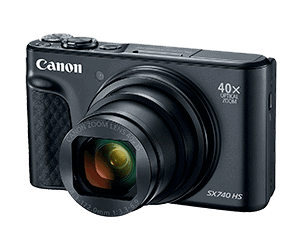
READ MORE: Check out our latest guide on the best camera accessories !
Sony RX100 vii – The Best Compact Camera for Travel
This is the next level up. You still want the portability and benefits of having a point and shoot, but you want to take incredible photos too.
You’re interested in learning about the fundamentals of photography, and perhaps want to one day print your photos or maybe put them up online. Ultimately you’re after the best pocket camera for travel.
Here are the things you’ll need: Full manual control, a decent size sensor, zoom, high-quality video, flip screen (so you can shoot from different angles while still framing your shot), ability to shoot in RAW format, good ISO performance and a wide aperture.
This is the category that most people will be in. So if you’re asking yourself what is the best compact digital camera for traveling, read on…
READ MORE: Check out our comprehensive guide to the best landscape photography tips !
This is, in our opinion, the best point and shoot camera for travel on the market. It does everything you’ll ever need it to do and has incredible image quality in a premium compact size.
Sony have completely revolutionized the market with the RX100 range, and with each update it just gets better and better.
Without a doubt there’s no better option for the best compact camera for travel out there than the Sony RX100 vii right now.
The Mark 7 has a very long zoom range (8.6x optical, up from 3.6x optical, which is like having a 24-200mm lens), an amazing 20mp one-inch sensor to capture huge dynamic range, high quality 4K video and an articulating flip screen.
It’s an expensive camera, yes, but if you want the absolute best quality on the market in a small, compact unit that fits in your pocket, this is the best travel camera out right now.
BONUS TIP – If you want to create travel vlogs and have a decent camera for photography too, this is the model for you!
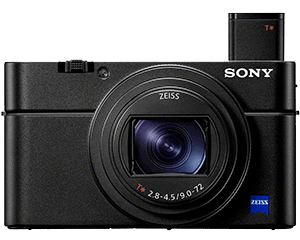
Canon G7X Mark iii – Best Camera for Vlogging
Vlogging is the newest craze, and it’s quite literally taking over as the new digital media of choice for many travelers and influencers.
If making videos is more your style instead of taking photos, then you’re going to want to look at a camera that has a range of specific features.
Most importantly is the ability to shoot in 4K (even if not many people have 4K monitors today, in a few years it will be common and you’re going to want to have footage to match the current standard).
Once you’ve got this another handy feature is an articulated LCD screen that can face you while you’re talking in the lens.
This allows you to frame your shot instead of cutting off half your head. Lastly you’ll want a microphone jack to catch better audio.
Get the camera, start filming and put some great videos up on YouTube ! Sounds easy, right? But what is the best travel camera for vlogging…
We’ve used more vlogging cameras than we can remember, from full-frame setups to GoPros and even putting to the test the brand new Sony ZV-1F .
But what have we settled on?
The Canon G7X Mark ii has always been considered the ultimate travel camera for vlogging, but it fell short in a few different categories.
That’s all changed now with the newest upgrade, the G7X Mark iii .
Shooting fantastic 4k video, this travel camera now has an in-built microphone jack for improved audio, a flip-up touchscreen for keeping your face in frame, and has a faster start-up time than previously.
The image quality is also much better now, and with manual control functions it really is a premium compact travel camera.
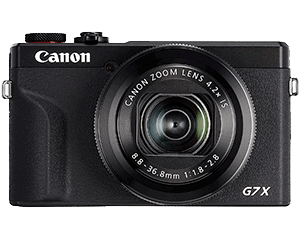
Sony A6600 – Best Mirrorless Camera for Travel
You’ve broken out of the realm of standard point and shoots, and you’re looking for a camera that has interchangeable lenses.
You’re getting into the idea of shooting wide, or perhaps portrait shots. Maybe you really would like to get a longer zoom.
Most of all, you really want to get serious about photography.
In your kit will be a range of lenses for a range of situations. You can look at getting filters to give beautiful effects on your shots. You might even want to start growing your photography portfolio .
A few years ago everyone would have recommended you to get an entry-level DSLR. This is no longer the case.
With the way mirrorless technology has gone DSLRs are losing traction and popularity. Now you can get something with the same image quality for half the size.
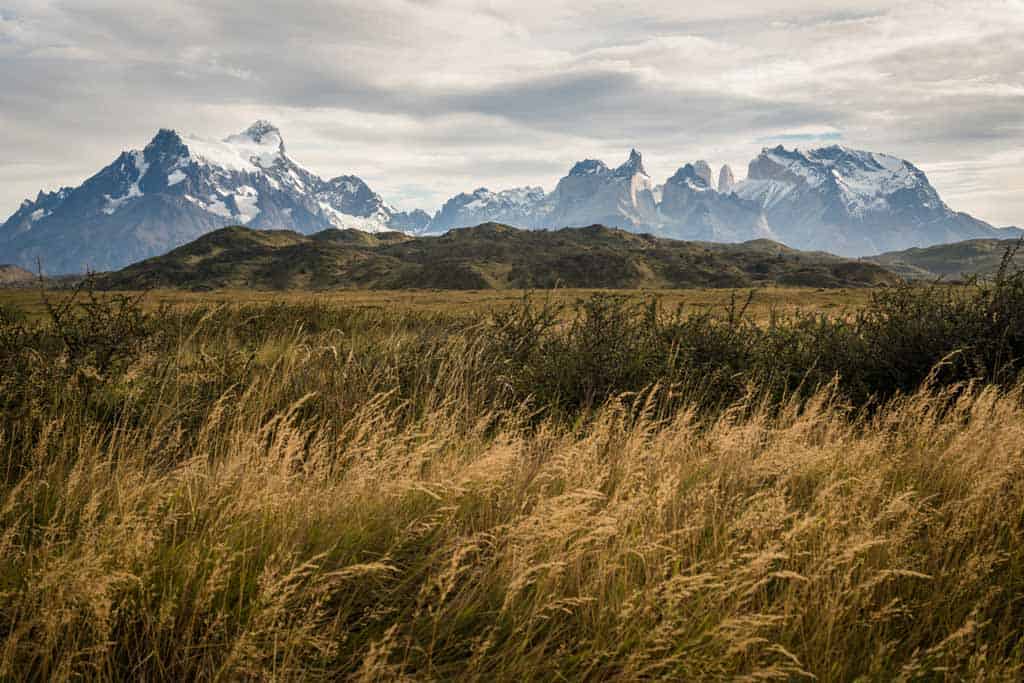
The Sony A6600 is an absolute powerhouse and puts up a good fight for being the ultimate travel camera.
For entry-level mirrorless cameras, Sony broke the mould by introducing the A6000 a few years ago. Since then every model has been lightyears ahead of the competition.
The latest A6600 is their newest offering, and for a compact camera, it is seriously next level.
It boasts one of the fastest autofocus capabilities of any camera on the market, an improved APS-C sensor capable of high-level video and great image quality, a touch-enabled articulating LCD screen and excellent electronic viewfinder.
The range of lenses available for this Sony mirrorless camera is huge, and manages to cover all bases for whether you want to shoot 4K video or take images that you can sell to magazines.
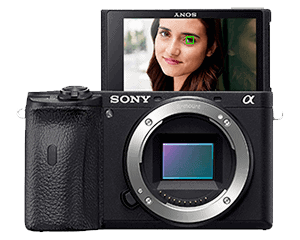
You can really get away with the standard lenses that come in most kits, but there are a couple of exceptions that you could splurge out for.
All Sony E mount lenses will fit onto the Sony A6XXX series (including the spectacular full-frame range, with a crop factor).
So if you are ever considering an upgrade to full frame and want to buy some new lenses for your APS-C sensor, you can fork out the money early and still use your lenses later on.
Best Wide Angle Lens
There’s really only one option in this range, and it’s the brilliant 10-18mm F4 . To this day one of the best photos we’ve seen taken of the Petronas Towers was taken with a Sony A6000 (older model) and this lens.
Best Portrait Lens
The Sony 50mm F1.8 is a great choice for a native portrait lens. It’s light, fast and cheap.
The quality is decent without being amazing, but it definitely does a wonderful job for what you pay for.
Otherwise step up to the FE 55mm F1.8 (read about it below), although this will give you a 85mm perspective on the APS-C sensor.
Best Zoom Lens
Keeping with the affordable and light range that makes for great travel camera lenses, we recommend the Sony 55-210mm f/4.5-6.3 .
For the amateur and hobbyist photographer, this will do just about everything you need and is a solid lens to have in your kit.
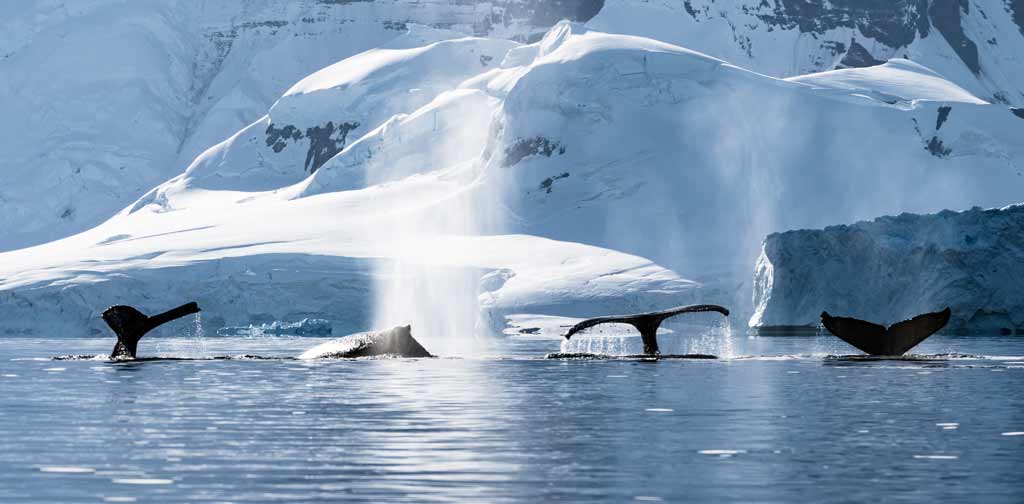
Sony A7iv – Best Professional Camera for Travel Photography
If you’re like us and want to make capturing the absolute best images of your travels a priority, then you’ll be looking at a professional range of travel cameras.
Following on from the discussion on mirrorless vs DSLR above, you’ll get many professional photographers who choose to stick to cameras like the Canon 6D or 5D series, or the Nikon D750 or D810.
These are legendary cameras in the industry, and with the enormous range of lenses available for each one, there’s a reason the best in the business use them.
But, we’re talking about travel cameras. And for this, we recommended sticking to mirrorless.
Full frame DSLRs are big and heavy, whereas their equivalent in mirrorless are a fraction of the size.
If you have decided you want to take the leap to a full frame sensor and want to be rocking the best mirrorless camera for travel, then you have only two choices.
READ MORE: But you need to carry everything, right? Here’s our new expert guide to the best camera backpacks on the market today!
Sony was the first major camera producer to create a full frame mirrorless camera, and while Canon has finally caught up, Sony has years of research and development on their side.
The Sony A7 series is almost flawless. Fantastic image quality, 4K video capabilities (on the A7R, A7S and the A7iv), articulating LCD screens, wifi, light, compact and a whole range of native lenses available for it makes them the absolute best cameras for traveling.
And with the Metabones adaptors you can even use your old Canon, Nikon, Sigma, Samyang or other type of lenses on it.
As of 2024, Sony’s top cameras are the A1, A7iv, A7Siii, A7Rv and the A9ii. Now while the A9ii, A7Rv and A1 are absolute beasts of cameras, the truth is you most likely don’t need all the features they have.
We currently own the A7iv and A7Rv, and for professional travel photography, they are the best on the market.
The image quality is superb and the dynamic range is insane. The low light capabilities are also amazing. Even at ISO 12800, there’s barely any noise that shows up on the shot compared to a compact camera.
We personally recommend the A7iv as the best travel camera out there , as it’s just damn near perfect, especially as a hybrid photo and video camera.
4K video with 60fps, a lightning-fast autofocus system, joystick control, touch screen, fast processor, upgraded full frame sensor and amazing battery life.
If you’re the kind of person that loves to blow up their images for print, or does a lot of cropping when you edit your shots, then that’s the only reason you’ll want to step up to the A7Rv, as it has a 62mp sensor.
But wait – isn’t the brand new Sony A7Rv the best in class right now? Yes, it is. However, while it is absolutely incredible and takes things up another notch, it’s quite expensive and the megapixel count is likely not something you need..
Instead we recommend that you save your money on the body, put what’s left over towards some lenses, and get the A7iv be your go to camera for travel photography.
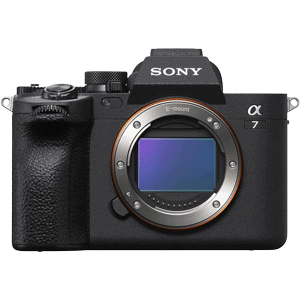
If you’re going for the Sony A7 series, we’ve got some bad news for you. Full frame lenses are expensive.
But if you’re considering turning your photography hobby into a profession, then this is a small sacrifice to make for the quality of photos you’ll be taking.
Trust us, if you’re buying the best camera for travel photography on the market, you’ll want to also have the best lenses to go with it.
The great thing with the Sony Alpha series is that their lenses are all interchangeable, meaning if you start out with a Sony A6600 and eventually upgrade to a Sony A7iv, you can take your old lenses and put them on the new camera (but it will have a crop factor).
Best All-Round Lens
The new FE 24-105mm f4 lens from Sony is pretty much the best all round travel zoom lens for photography.
It’s damn sharp, and with a constant aperture of f4, it means you can get excellent bokeh and decent low-light performance at any focal length.
This lens practically lives on our A7iv, as it’s so versatile, great for video and the image quality is fantastic.
The Sony 16-35mm f2.8 GM lens is one of the best wide angle lenses on the market, and when you throw it on your travel camera, you’re almost guaranteed to get fantastic shots.
Pretty much every review on photography sites raves about it, and having owned it for over three years now, we completely agree.
It’s not cheap, but to have such a fast and wide native lens for the Sony setup is pretty epic! If you want a cheaper alternative, check out the 16-35mm f4 , which is also very good.
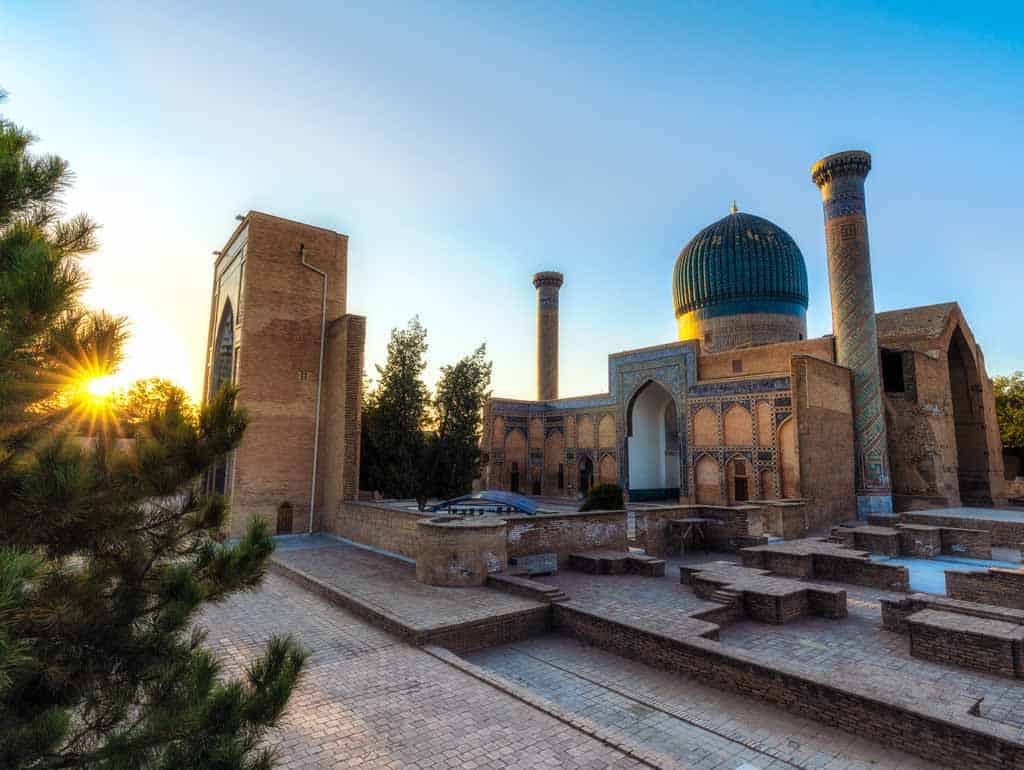
Best Prime Lens
If you are into portrait or street photography make sure you get the FE 55mm F1.8 prime lens.
It’s very fast, very light and very sharp. And with such a good value, it may be the best prime lens that Sony makes (excluding the high-end GM series).
Owning a telephoto lens isn’t just about taking photos of wildlife or zooming in on things that are far away from you. It adds a whole new creative element known as lens compression to your arsenal.
This is the optical illusion that happens when the further you zoom into something, the bigger the background appears.
You start to get this effect from around 100mm and on, so if you’re looking for the best zoom lens to put on your Sony A7iv, consider the 70-200 f2.8 GMii lens, or the 100-400mm GM lens .
We have both of these zoom lenses, and we love love love them!
DJI Mavic Air 2 – The Best Drone for Travel
Aerial photography has gained in popularity over the last two years, and it’s easy to see why.
Not that long ago the only way to get photos from the sky was by taking a chartered flight or helicopter.
But today just about anyone can go out, buy a drone and start taking shots from very unique angles.
The appeal is obvious. Capturing epic photos and video of landscapes from a perspective that few have ever seen before.
From the moment we bought our first drone (a DJI Phantom 4) we fell in love with it.
Good drones up until now have always been quite prohibitive when it comes to travel due to their bulky size.
The DJI Phantom series helped make it more accessible for most people, but even then it was still a commitment to travel with one.
Today the best drone for travel has finally been determined.

The DJI Mavic series is what you should be looking for when considering a travel drone.
With foldable legs and compact size, they tick all the boxes for portability.
There are a few different models to consider, and it really depends on your needs.
If you’re a professional, we recommend the DJI Mavic 2 Pro , thanks to its 1-inch Hasselblad Sensor and 360-degree collision avoidance.
But just announced is the Mavic Air 2 , and with features like 48-megapixel photo mode, panorama capabilities and 4k video, it’s the best option for anybody trying to take travel photos from the air on their next trip.
Its small size and great value makes it perfect for travel, but one thing to consider is the fixed focal length, meaning you can’t zoom in to take photos.
Note – With whatever drone you buy we highly recommend buying extra batteries. You’ll be surprised how quickly you chew through these. Check out the bundle packages from DJI (called ‘Fly More’ on the Mavics).
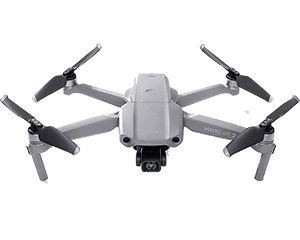
GoPro Max – Best 360 Travel Camera
With virtual reality becoming more and more popular, it might be no surprise that one of the best travel cameras for 2024 is actually a 360-degree camera!
These incredible little devices come with multiple cameras on one piece, managing to capture an entire scene in one shot in both photos and high definition video.
When they first came out they were very poor quality, but now they’ve improved enough that we actually travel with one full-time now.
360 cameras became popular when the Chinese company Insta360 started to bring out their affordable options, but the image quality was always pretty poor.
Then GoPro stepped onto the scene with the Fusion, and it changed the industry forever.
With all the standard great features GoPro is known for, such as being waterproof, having awesome connectivity and packing it all into compact cameras, the Fusion took things to the next level.
It did require a bit of work to use though, and the stitching wasn’t great. Plus with two SD card slots required to save media, it was just that bit too cumbersome for most photographers.
Cue the Max!
The GoPro Max took the best parts of all their cameras and threw it together into one unit with this one.
The Max, with its dual lenses on either side of the body, now uses just one SD card, making storage and management so much easier, and it has a touch LCD screen that can be used on the go.
For people looking for travel cameras that can do it all, it doesn’t just shoot in 360-degree mode.
There is their ultra-wide single perspective, and for having a small sensor, the low light shots are surprisingly good.
If you’re a travel vlogger you’ll be amazed at the quality of this! The inbuilt microphones do a great job at picking up audio while cutting out background noise, and the battery life is great.
It shoots at 5.6k video quality and 30 frames per second. You can change the pitch, yaw, field of view and angles to get the view you desire.
Even more unique, it can create 360 time-lapses and hyper lapses with a simple click. No need to pull it up in a program like Adobe Premiere Pro to make your videos any more!
Best of all it connects seamlessly to your smartphone using the GoPro app, so you can do all your editing, sticking and keyframing on the go.
When it comes to a travel camera that tries to do it all, this one is hard to beat.
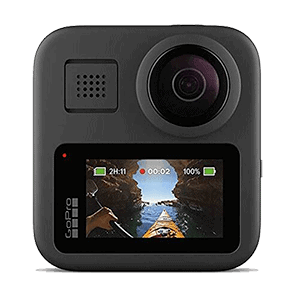
That concludes our list of the best cameras for traveling. Let us know if you have any other recommendations, or if you use any of these cameras while traveling the world!
How to Choose the Best Camera for Travel
No matter what level you are, the first piece of kit you are going to need to buy is the camera.
This can range from a cheap point-and-shoot right up to a top-of-the-line DSLR that can cost as much as a small car.
A quick visit to a camera store can leave you feeling completely overwhelmed with all the choices.
Keep on scrolling to find detailed information about each of these, and why they really are the best cameras for travel.
READ MORE: See what made the cut as the best travel tripod on the market in our expert guide!
What Features to Look for in a Travel Camera
There’s a number of different features that you need to look for when searching for the best travel camera to buy, based on your needs.
The first thing to look out for is how big and heavy a camera is.
When you’re on the road traveling, weight and space is a huge issue to overcome. You don’t want to be lugging around a heavy backpack full of gear if you don’t have to.
If you’re not a pro or a big enthusiast, we recommend checking out a compact camera or mirrorless camera, as they are smaller and more portable, while also providing decent image quality.
One thing that camera companies and salespeople like to preach about is megapixels. But what exactly does that mean?
A pixel is a tiny dot of color that you see on your computer or phone display. A megapixel is 1 million (actually 1,048,576 to be technically correct) of those dots. So ‘24 megapixels’ so about 24 million dots of color
You may hear that more megapixels equal better quality photos, but this isn’t entirely true.
The sensor has more to do with image quality than the resolution does, but it does play a small part.
In short don’t get caught up about more buying a camera with more megapixels, unless you’re planning on printing your images on billboards.
Instead just use this guide to the best travel cameras to find out exactly what is the best choice you can afford.
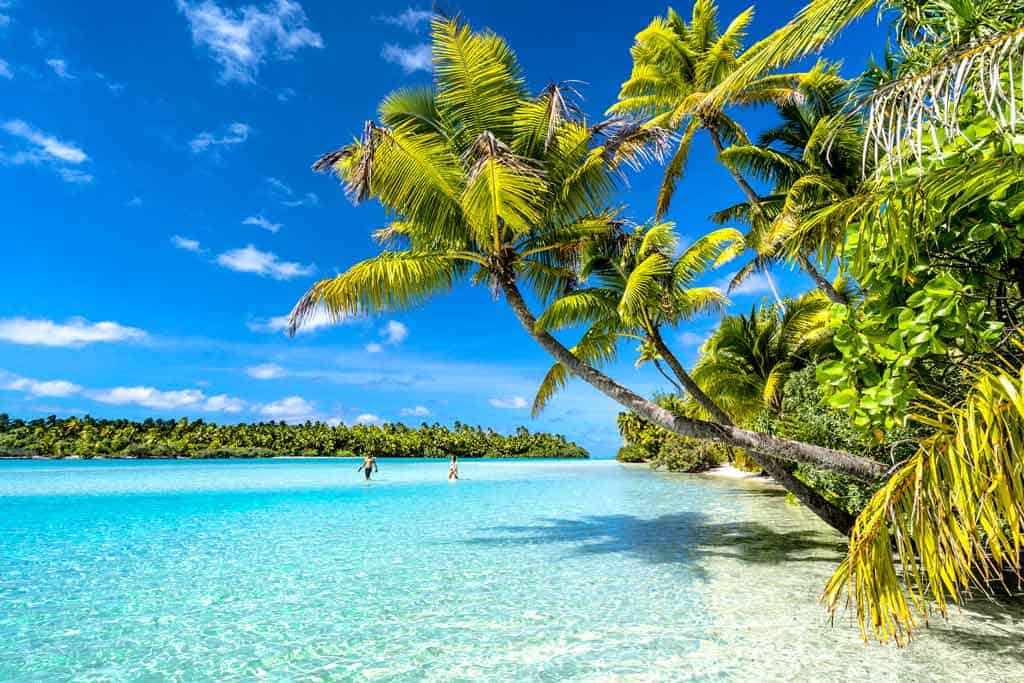
One thing to consider when looking at the best travel camera is whether or not you can change the lens.
The reason this is important is that it gives you more choices down the road if you decide you want to get into different styles of photography.
A compact travel camera is most likely a fixed lens, meaning that whatever zoom range it comes with you can’t change.
A camera that you can change the lens on will let you upgrade to wide-angle lenses, a zoom lens, better maximum aperture options for low light performance, etc.
In general, if you can afford a mirrorless camera or DSLR, it’s worth buying.
A camera that allows you to change the manual settings gives you complete control over things like aperture, ISO and shutter speed.
This opens up a whole new world of creativity, and in our opinion, you shouldn’t consider a camera that doesn’t have this feature.
Luckily every recommendation on this list allows you to control those settings, even the GoPro HERO camera below!
It’s 2024 – make sure you get a camera that can shoot 4K video!
This provides much higher resolution when shooting video, and even if you don’t have a 4K monitor at home, you can always take that clip and watch it in high definition 1080p, or even crop into your footage.
Just beware that 4K video chews up your battery life, so make sure you have some spare ones!
Unless you plan on always being in perfect weather when you travel, it’s a good idea to get a camera that is either waterproof, or has good weather sealing.
Unfortunately you often have to compromise on a waterproof camera or a quality travel camera (unless you buy a GoPro), so we don’t recommend buying a camera that is fully waterproof.
Instead just make sure it has decent sealing, or look at buying an underwater housing if you want to get into underwater photography.
How far you can zoom in on a subject is very important when trying to decide the best travel camera.
If you buy a fixed lens camera, make sure it has a long zoom range, like a Canon Powershot or the Sony RX100vii.
Or if you buy a mirrorless camera or DSLR, you don’t have to worry about this as you can always upgrade later.
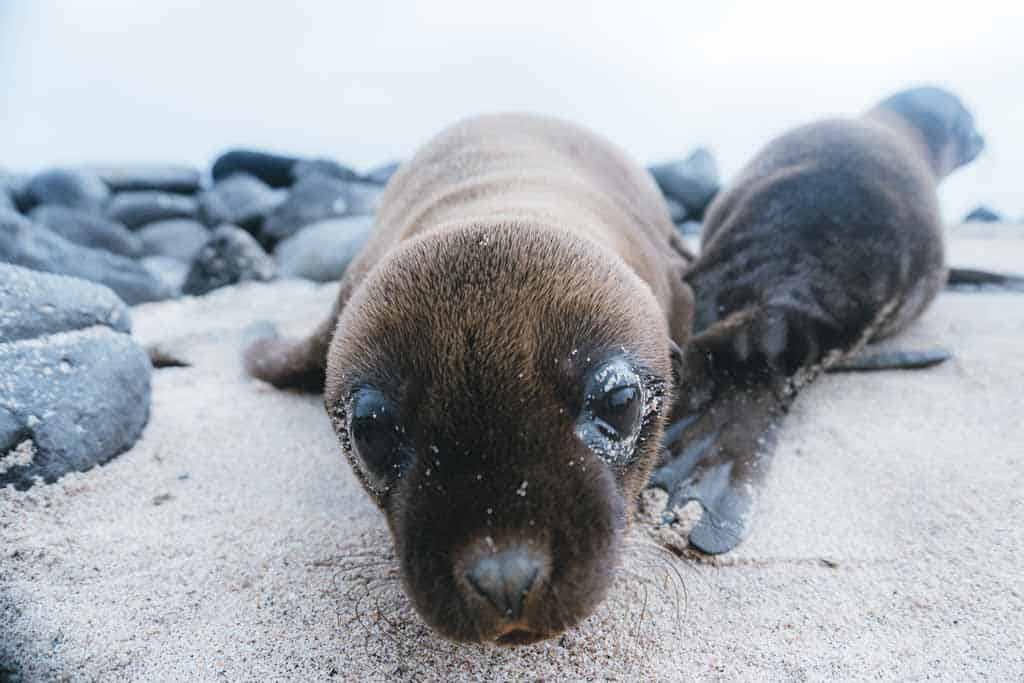
No matter how steady you think you are, you will almost always have a small amount of camera shake when taking handheld photos.
If you’re shooting at fast shutter speeds, this isn’t a problem. But if you’re photographing in low light, you can end up with motion blur.
Look out for cameras that have inbuilt image stabilization to counter this.
A DSLR ( digital single lens reflex ) works by having a mirror inside the camera. When you are looking through the viewfinder the mirror is down, covering the sensor, and you are looking at a reflected scene.
When you push the shutter the mirror flips up mechanically, allowing the image to be exposed onto the sensor, and then onto your SD card. All these moving parts take up room, hence why DSLRs are larger in size.
With mirrorless cameras, there are no moving parts inside. The image comes through the lens and directly onto the sensor.
There is an electronic viewfinder, meaning you are seeing a digital copy of what you’re pointing the camera at, rather than a live view.
So without a mirror constantly flipping, the camera can be made a lot smaller. That’s why mirrorless cameras can be half the size of a DSLR.
When mirrorless cameras first came out the quality wasn’t that great. Now they are just about on par with DSLRs, and the portability means that they are the best cameras for travel photography!
In case you’re not sure what we mean, this article goes into a bit more information, but in short, we recommend getting a mirrorless camera.
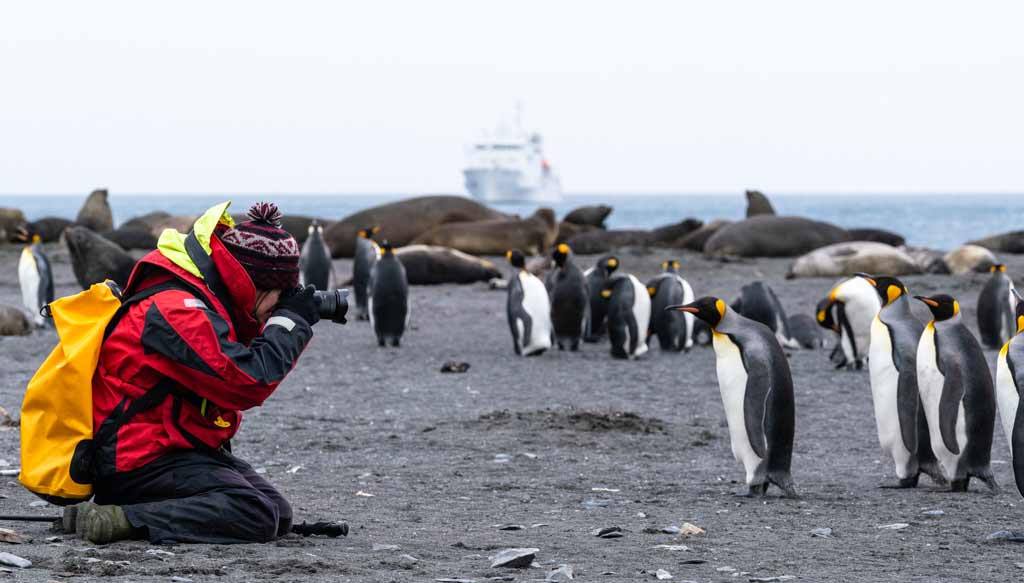
The 3 most popular cameras that pros use are the Canon 5Div, the Nikon D850 and the Sony A7Riv.
For general travel videos, the kind of stuff you would publish on YouTube, we recommend the Sony RX100vii. If you’re looking to create more cinematic videos, the A6600 is the best compact travel camera for videos.
If you need the best small camera for travel, you should buy the Canon SX740HS. Compact, high quality and affordable, this little beast is a fantastic travel camera.
DISCLAIMER: Some of the links in this article are affiliate links, which means if you book accommodation, tours or buy a product, we will receive a small commission at no extra cost to you. These commissions help us keep creating more free travel content to help people plan their holidays and adventures. We only recommend the best accommodations, tours and products that ourselves or our fantastic editorial team have personally experienced, and regularly review these. Thanks for your support, kind friend!
Alesha and Jarryd
Hi, We’re Alesha and Jarryd!

We’ve been traveling the world together since 2008, searching for the planet’s best destinations and adventures.
Love Travel?
Sign up for our free weekly newsletter for the best travel tips, ideas and deals!
We respect your privacy. Unsubscribe at any time.
READ MORE...
Peak Design Travel Backpack Review – Is it Really Worth the Price?
GoPro HERO 12 Review – Is it Worth Buying in 2024?
Sony ZV-1F Review – The Best Entry-Level Vlogging Camera?
Leave a comment Cancel reply
Save my name, email, and website in this browser for the next time I comment.
30 Travel Jobs that You Should Know About
06/14/2022 by Emily Becker Leave a Comment
Now that the world is currently experiencing what experts are calling “the Great Resignation,” more and more people are contemplating quitting their 9-to-5 jobs to go explore the world. With so many incredible places on this planet to visit, can you blame them? Even before the pandemic, remote jobs were becoming increasingly common, only to be propelled forward once global lockdowns began. More people than ever are able to have completely remote careers doing exactly what they were doing before, or even switching their profession entirely.
In case you find yourself looking for a way to travel the world and work while you do it, here are 30 travel jobs that will give your wandering heart a bit of inspiration:
Table of Contents
Travel Jobs that Require Little to No Prior Experience
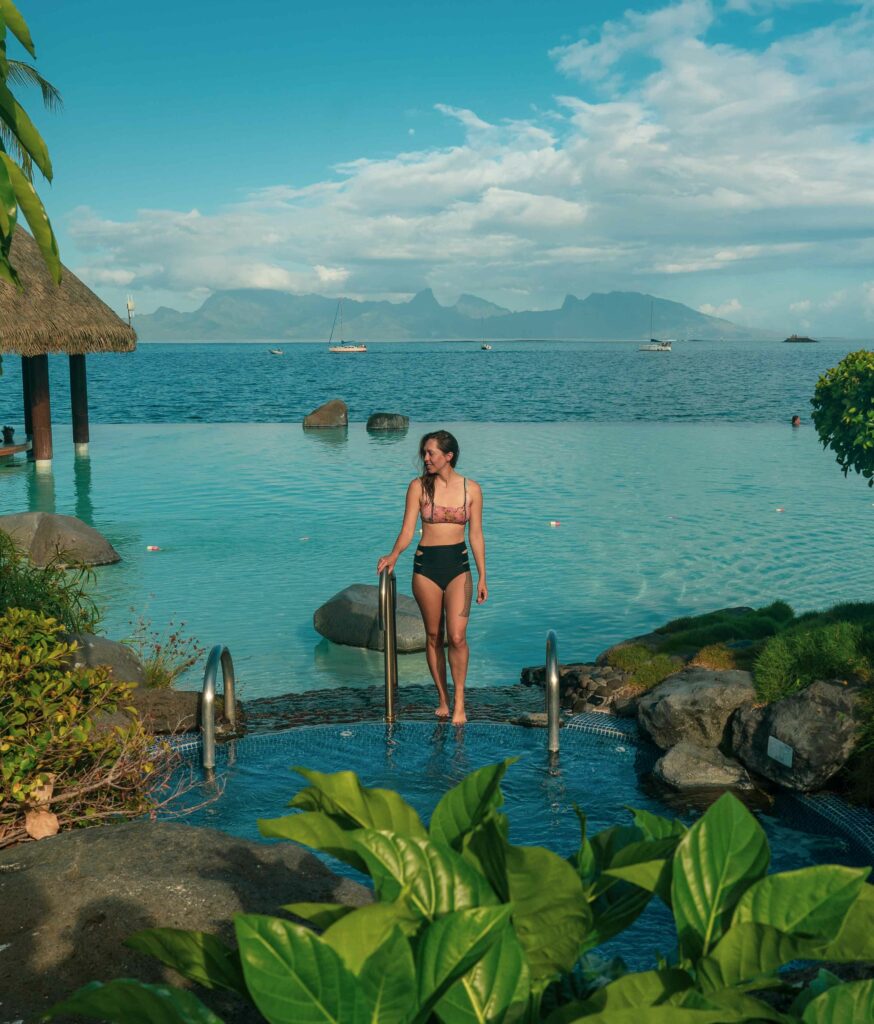
Whether you want to blog about your travel experiences while on the road or find a specific online niche, blogging is a great way to fund your travels, if you play your cards right. It might not be very lucrative at the beginning, while you’re still building your audience, but as time goes on, you can find more and more opportunities for making an income with your blog.
This, of course, requires some writing talent and insight into the kind of blogger you want to be and how you plan to make money doing it. If you’re sure about blogging about your travels, find out how to do it here.
2. Freelance writer

If you have a knack for it, you don’t necessarily need a full portfolio of perfectly polished articles to start freelance writing. You will need samples of your work, but you may be surprised at how little you need to get started.
If you’re serious about freelance writing, I recommend hopping on the Upwork train as soon as possible. When I was first starting out, I found the platform to be helpful for finding new clients. You may feel like you’re shouting into a void when you first start submitting proposals, but eventually you’ll get your groove and hopefully start landing some gigs.
3. Virtual assistant
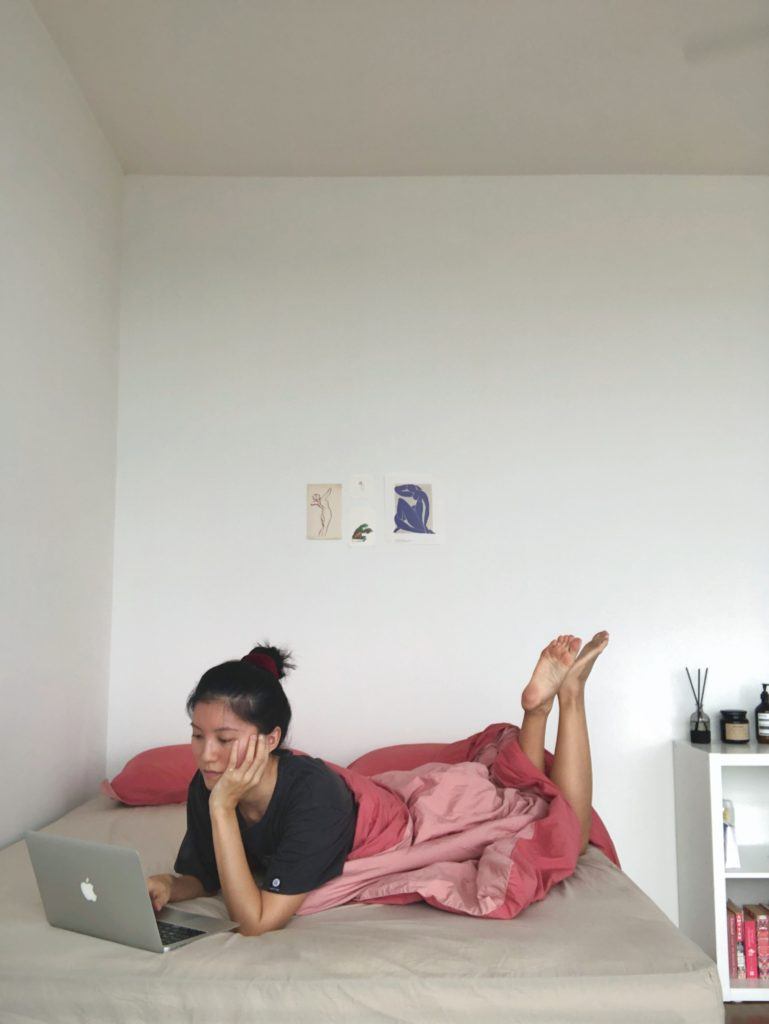
As the labor market becomes more and more digitized, virtual assistants are valued more. Because of this shift, virtual assistants can make a great living while working from anywhere in the world. All you need to get started is a computer, an internet connection, and decent computer and communication skills, depending on the demands of the job.
If you have any extra skills, like coding, accounting, or social media expertise, you are even more qualified to be a virtual assistant. You can find positions on Upwork , Dynamite Jobs , and a variety of other platforms. Find out more about becoming a virtual assistant here .
4. Freelance travel photographer
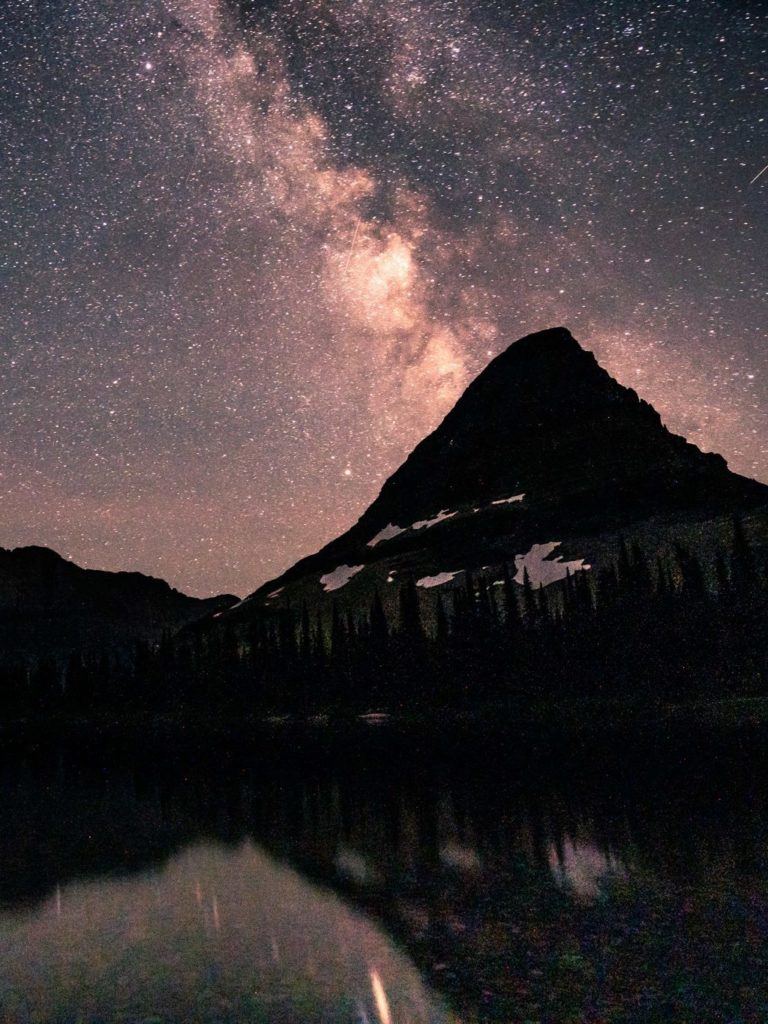
If you have photography skills, a professional camera, and a willingness to learn more along the way, perhaps freelance travel photography is be for you. Whether you decide to work for travel photography companies or try your hand at selling stock photos online , you may be surprised at how lucrative it can actually be.
Curious about taking your own travel photos? Consider taking our Photomuse course to hone your skills.
5. Freelance graphic designer
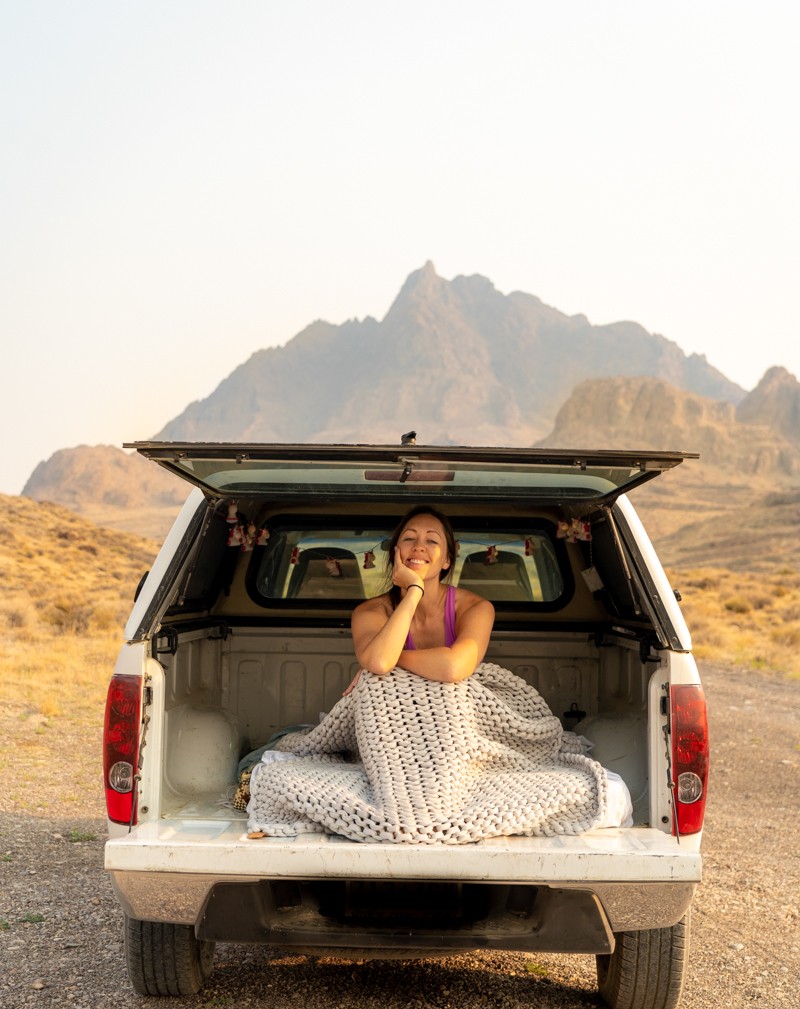
You don’t have to study the profession at a university to get a remote job as a graphic designer. There are tons of courses on Skillshare , Udemy , Domestika , and other platforms on how to create digital art that sells. Once you learn how, you can easily open a profile on Fiverr or Upwork and start looking for clients. It takes time to build your business, but this is one that can become a full-time income after you’ve gained momentum and established yourself in the online space.
6. Travel YouTuber
These days it’s easier than ever to start a YouTube channel and get to pumping out content, another great option for creative travelers who love to document their trips. In order to make money on YouTube, though, you’ll have to build an audience and have plenty of patience. Sometimes creators are at it for years before they begin earning any substantial income from the platform. Once you create a name for yourself on YouTube, however, brand deals and other well-paying opportunities may come your way.
7. Volunteer
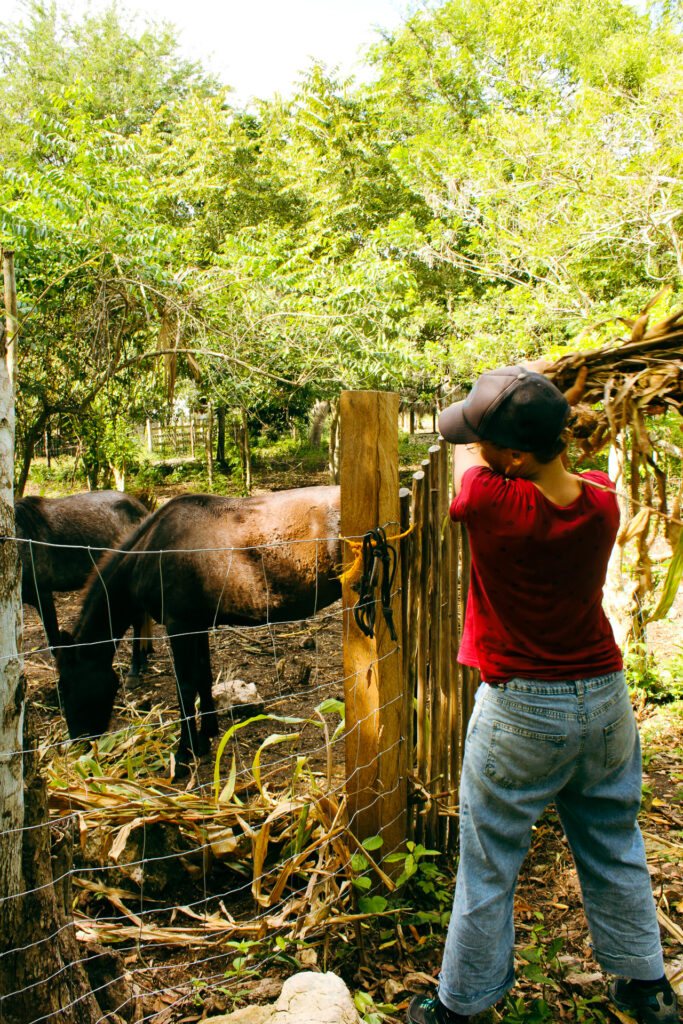
While volunteer programs don’t pay, they can still be a great way to travel on a budget . Some programs offer room and board in exchange for volunteer work, which means you can drastically cut your travel expenses. Plus, you can learn new skills, meet other travelers, and have fun doing it!
A fantastic option for volunteering abroad is signing up for Worldpackers , a platform that connects hosts with volunteers, offering a free place to stay and an immersive travel experience. I was a Worldpacker in the Mayan jungle for a week and had an incredible experience that was way better than I could have imagined.
If you’re considering a more professional, long-term volunteer experience, consider joining the Peace Corps . There’s a 27-month commitment and it’s certainly a huge life decision, but can present a whole host of opportunities for travel jobs abroad in the long run, like joining the foreign service or working for an international NGO once you finish your service. I was a Peace Corps volunteer in Mozambique for two years, and the experience was both beautiful and challenging. It’s not for everybody, but if you’re down to completely immerse yourself in a new culture and get paid (modestly) to do it, the Peace Corps could be a great option.
8. Hostel worker (receptionist, bartender, etc.)
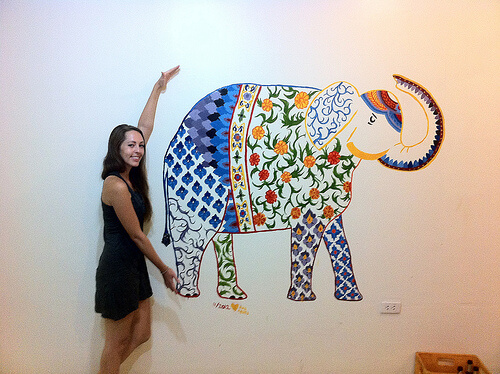
You would be surprised at how easy it is to convince a hostel owner to give you a job. It seems like hostels are always looking for help, both paid and unpaid. Some offer room and board in exchange for reception help, bartending, and other tasks. Worldpackers is a good platform to find these jobs, but you can also wait until you arrive at your destination and ask around. If you do this during peak tourist season, it may be harder to find these positions, because of the number of other travelers also keen for this opportunity.
You can also write to hostels on Instagram or via email before you arrive to see if they are looking for help. Try getting creative, as some places might even let you exchange something like a mural (see the photo above) for a free few nights.
9. Party promoter
If you’re an uber-social traveler and down to help a hostel, bar, or club promote their events, you might be able to make decent money as a party promoter. Sometimes places will require that you have a substantial social media following to consider you influential enough to help them attract more patrons, but it’s not always required.
Some marketing experience may be necessary to get a job as a party promoter , and some skills in the language at your chosen destination will most likely be required. A good place to start looking for such jobs is Stoked Travel , which hires country-specific party promoters and other professionals. Choose your destination wisely, and give it a shot!
10. Festival worker (event staff, food & beverage)
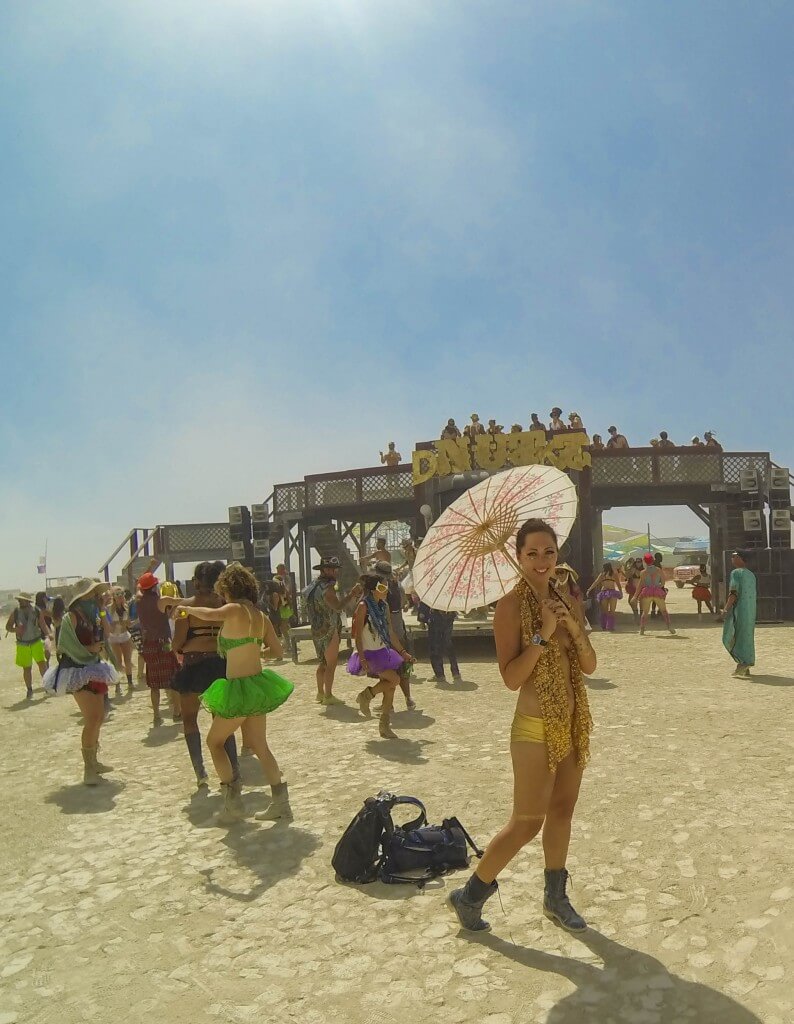
So you’ve already been to dozens of festivals and are in love with the atmosphere. Why not work at one and enjoy the huge perk of being paid to be there, plus getting in for free? Since festivals pop up all around the world, working at them can be a cool way to travel. From audiovisual technicians to graphic designers and everything in between, festival jobs are plentiful and varied. For some, you might need prior experience and/or an appropriate degree, but you may also be able to find less-skilled jobs in food and beverage service as well.
11. Cruise ship worker (tour manager, bartender, etc.)
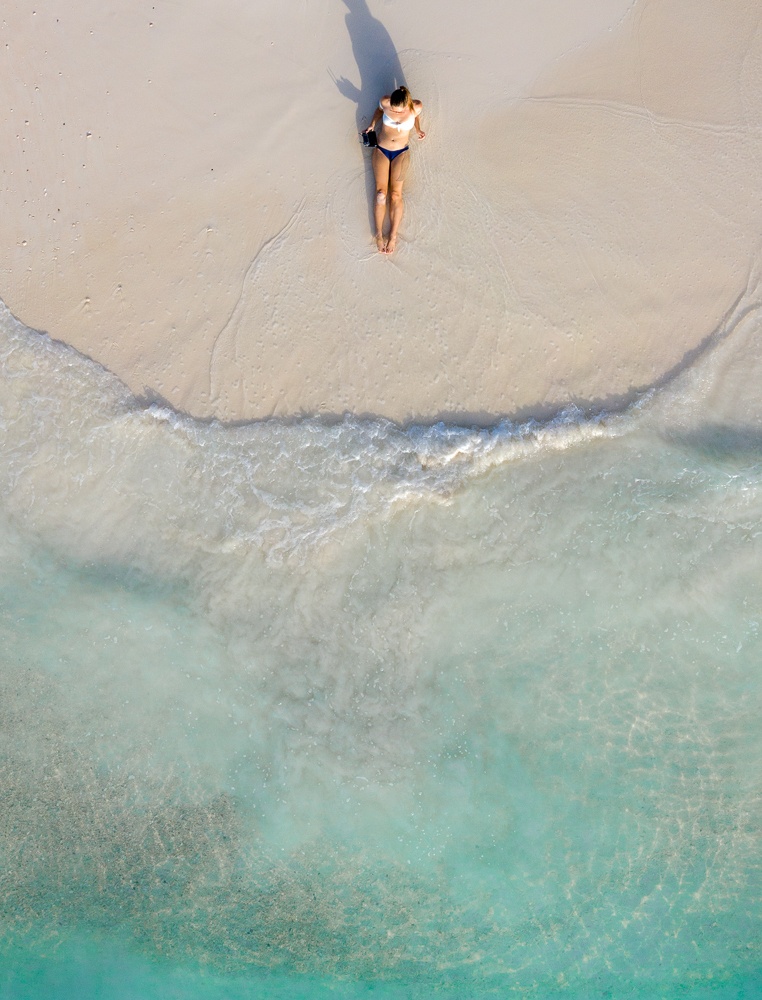
Fancy the idea of getting paid to hop from one place to another on a cruise ship? Depending on your expertise, you can land a job on one in a variety of different roles. From housekeepers to photographers to IT help, cruise companies hire thousands of workers each year to staff their ships. There’s even a specific job board for these roles, which typically provide room and board on top of hourly pay.
12. Online English teacher
If you’ve got teaching experience and a willingness to work extremely early mornings, consider teaching English online with VIPKid, a very popular platform for online English teachers. The clientele are spread across Asia, hence the unconventional schedule (if you’re in the Americas). I worked for VIPKid for a short time pre-pandemic and found the hours challenging, but the students were great. A huge bonus for me was that there’s little to no lesson planning involved, as the company provides all lesson plans for you.
There are other companies out there, like LatinHire , looking for online English teachers, all with varying requirements. Some ask for a TEFL certification, while others don’t. Some require a minimum of 1-2 years of teaching experience instead, but there are others that are more flexible and just happy to have native English speakers.
13. In-person English teacher
Requirements to teach English in person at a school or organization will likely be much more demanding, although this depends on where you want to go. Most schools require a TEFL certificate, which is quite easy to get if you’re serious about becoming a certified teacher. Organizations, especially religious ones, tend to be more flexible about requirements, but either pay very little or not at all.
As a Peace Corps volunteer, I taught English (among other projects) and found it to be fun and challenging at the same time. Not everyone is cut out for teaching, but if you love interacting with students and don’t mind long hours and potentially rowdy classrooms, being an English teacher can be incredibly rewarding. Plus, with a TEFL certification, you can have your pick of countries, as the demand for English teachers is quite high worldwide, especially in Latin America and Asia.
14. Yoga teacher
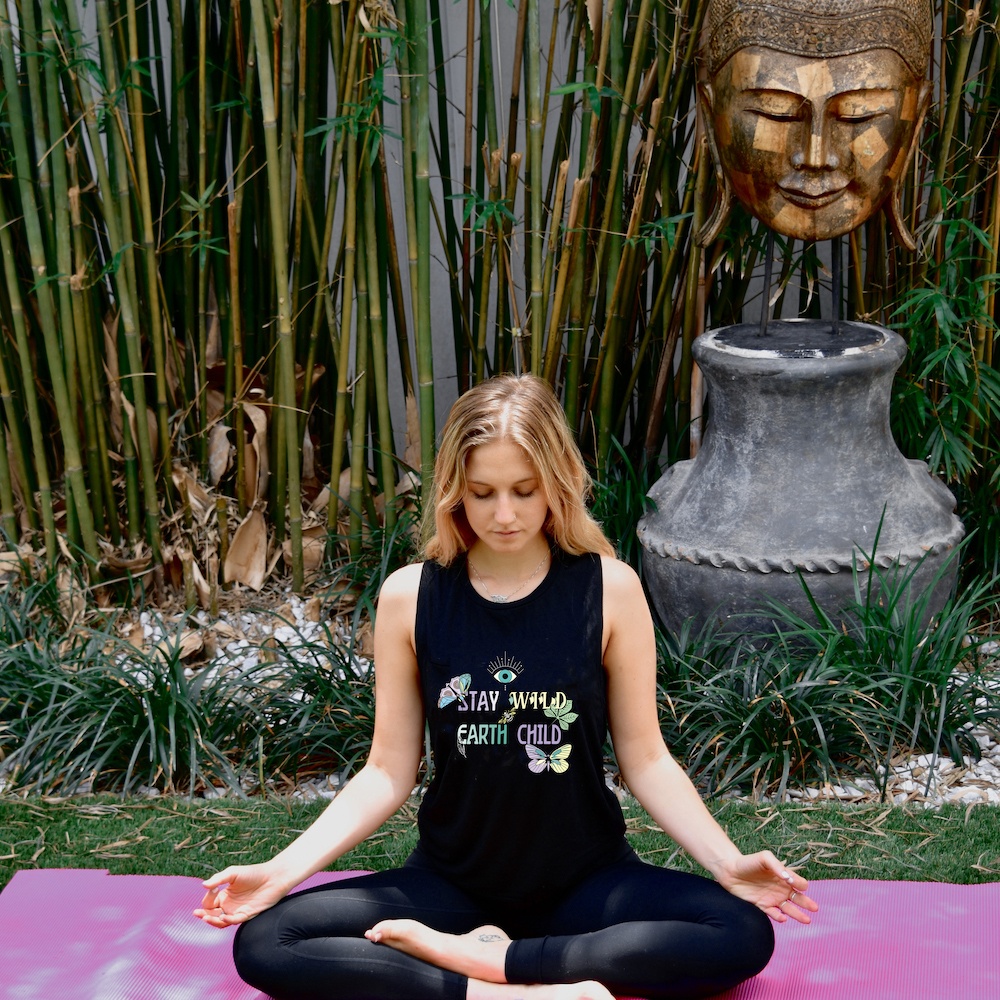
To be a yoga teacher while you travel, you’ll first need to complete a teacher training and maybe have at least a little experience under your belt. If you’re charismatic and good at marketing yourself, you can really teach anywhere you’d like, as long as there are people who want to take yoga classes.
Some traveling yoga teachers look for studios in their chosen destination and ask for a time slot, while others simply find a private space and teach classes. You could even arrange to teach on the beach, if that’s your style.
15. Housesitter
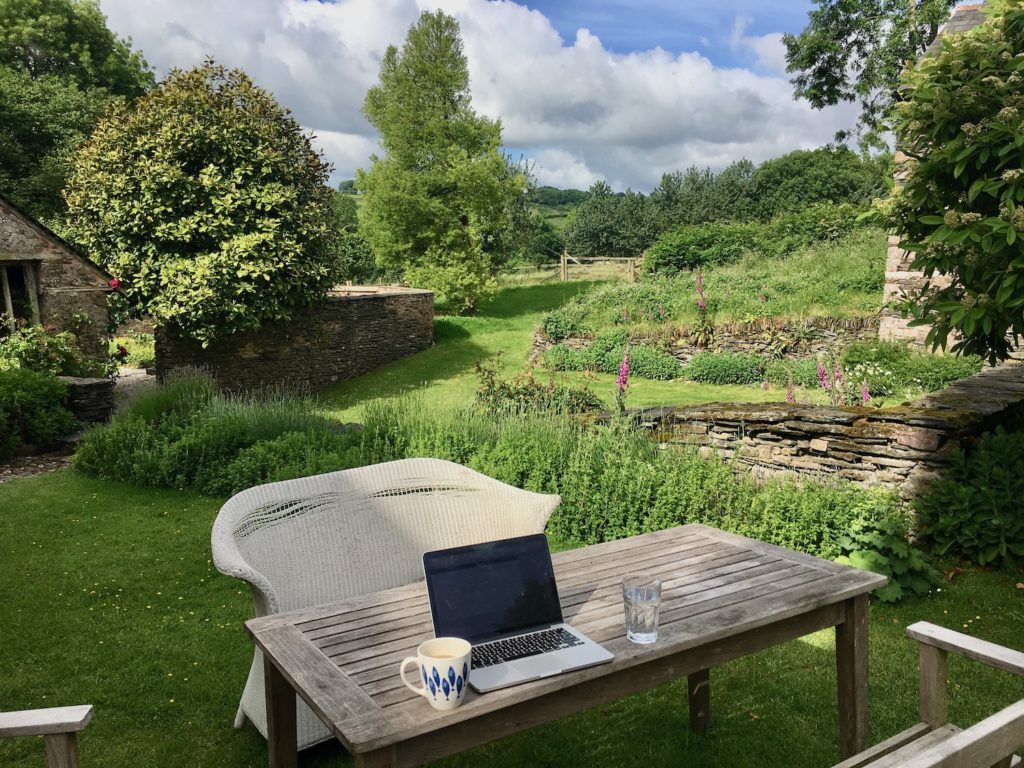
You don’t need any experience to become a traveling housesitter. Websites like Trusted Housesitters allow members to connect with people who need a trustworthy person to stay in their house while they’re away. Sounds pretty simple, right? Some clients also have pets who need looking after, which they will indicate on the platform. These jobs don’t typically pay, but they are a great way to get free accommodation for very little actual work on your end. Clients may ask you to water their plants, collect their mail, or do some light housekeeping while they’re gone, but your main job is simply being there.
The coolest part about this is that people are looking for housesitters all around the world, meaning you can do it almost anywhere, saving a ton of money on accommodation as you move from place to place.
16. Affiliate marketer
Affiliate marketing is essentially when companies use third parties to promote their products and pay a commission to marketers for products purchased using their specific link. This form of passive income requires no experience at all, but you’ll need a bit of insight and possibly a sizable audience to be able to make money from it.
There are a lot of online courses out there that you can take if you’re a complete newbie to affiliate marketing. This one from Udemy covers how to become an affiliate marketer without having your own website.
17. Yacht sailing
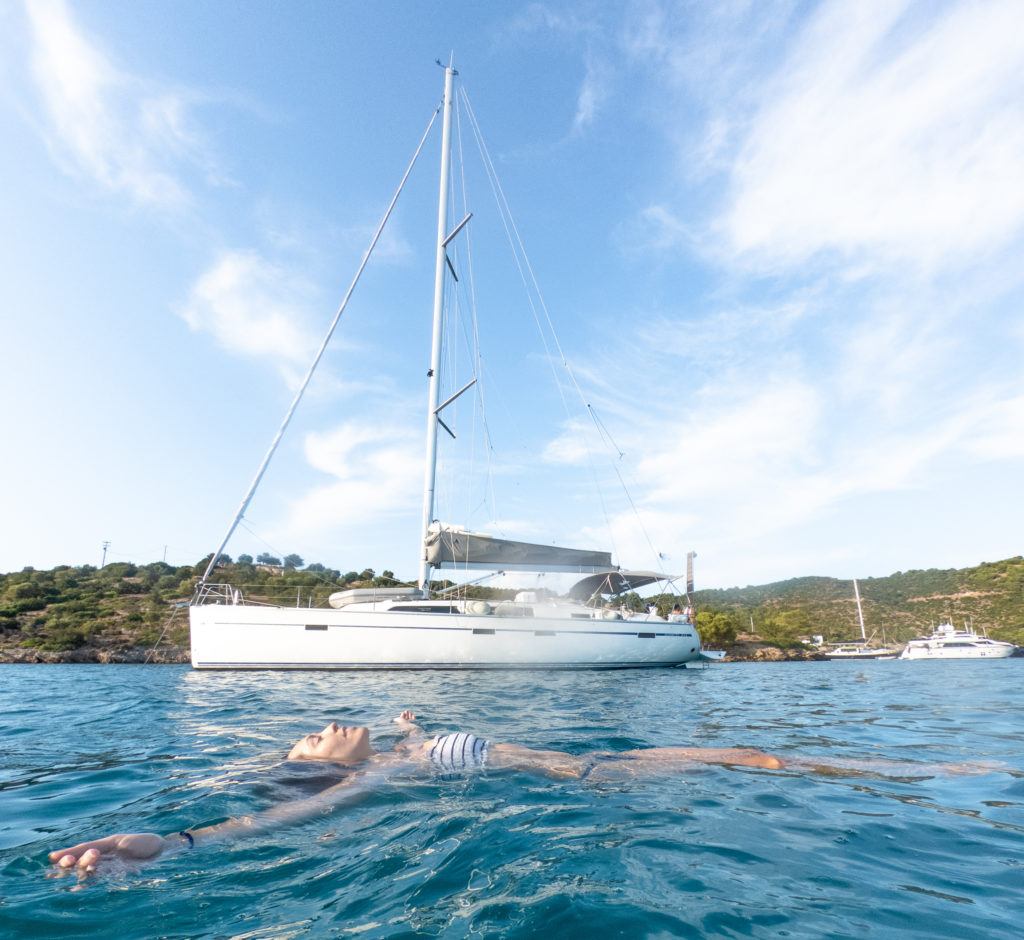
Can you believe that you can actually get paid to sail on a yacht or boat? Fortunately for travelers looking for an adventurous way to earn a buck, you don’t need much experience to get hired as a shiphand. It’s physical labor, but can certainly pay off, as you’ll be drastically cutting your living expenses and possibly earning a decent salary as you sail.
If you’re willing to invest in a course to learn all about how to get hired to work on a yacht, consider this one from Super Yacht School , which breaks down how to do it and what the benefits are.
Travel Jobs that Require More Experience
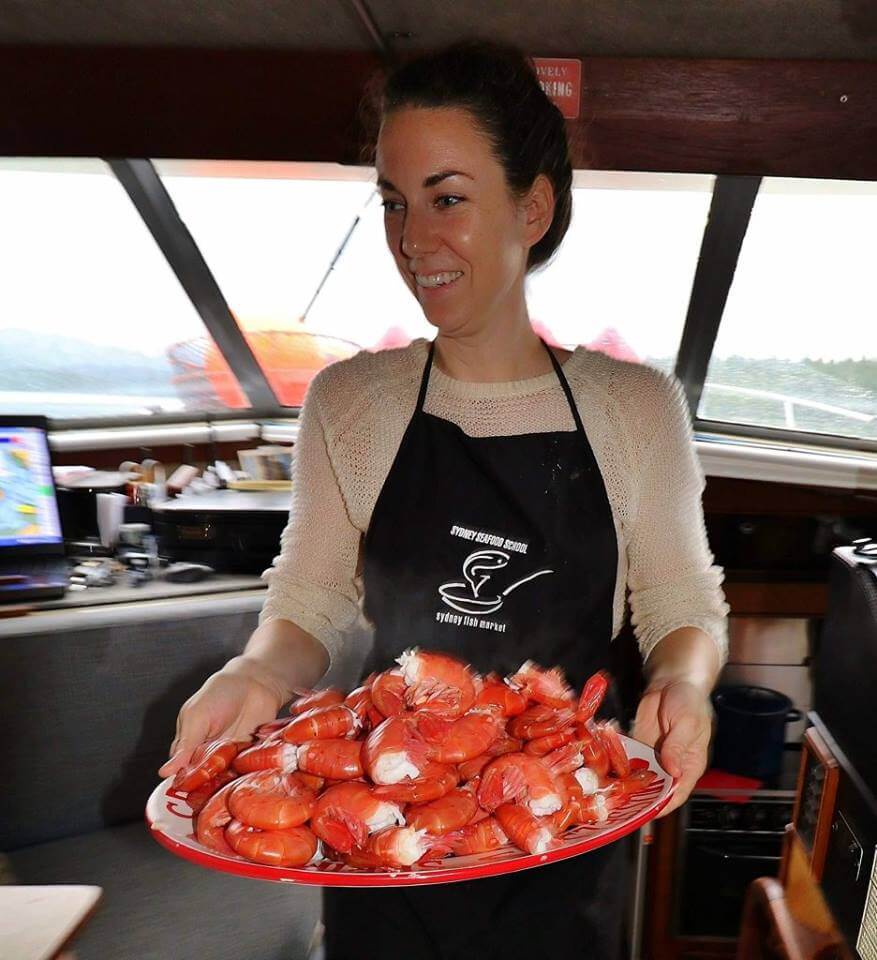
If you’re a chef and want to take your skills on the road, there are ample opportunities to earn money while you travel. From becoming a personal chef for local families to making connections with restaurants, professional chefs are able to bring their lucrative skills with them wherever they go.
19. Artisan
If you make jewelry, art, or anything that you can sell on the road, you can live almost anywhere you please as long as people are willing to purchase your goods. This one is in the “more experience” category because you’ll definitely need some experience with the goods you’re making, but if you’re a quick learner and have a creative outlook, anybody can make and sell handmade goods.
Being an artisan on the road isn’t always lucrative, so consider selling your goods on Etsy in addition to in person. This may limit you to places where you have access to trustworthy shipping options, but these days it’s easier and easier to ship things around the world.
20. Online translator
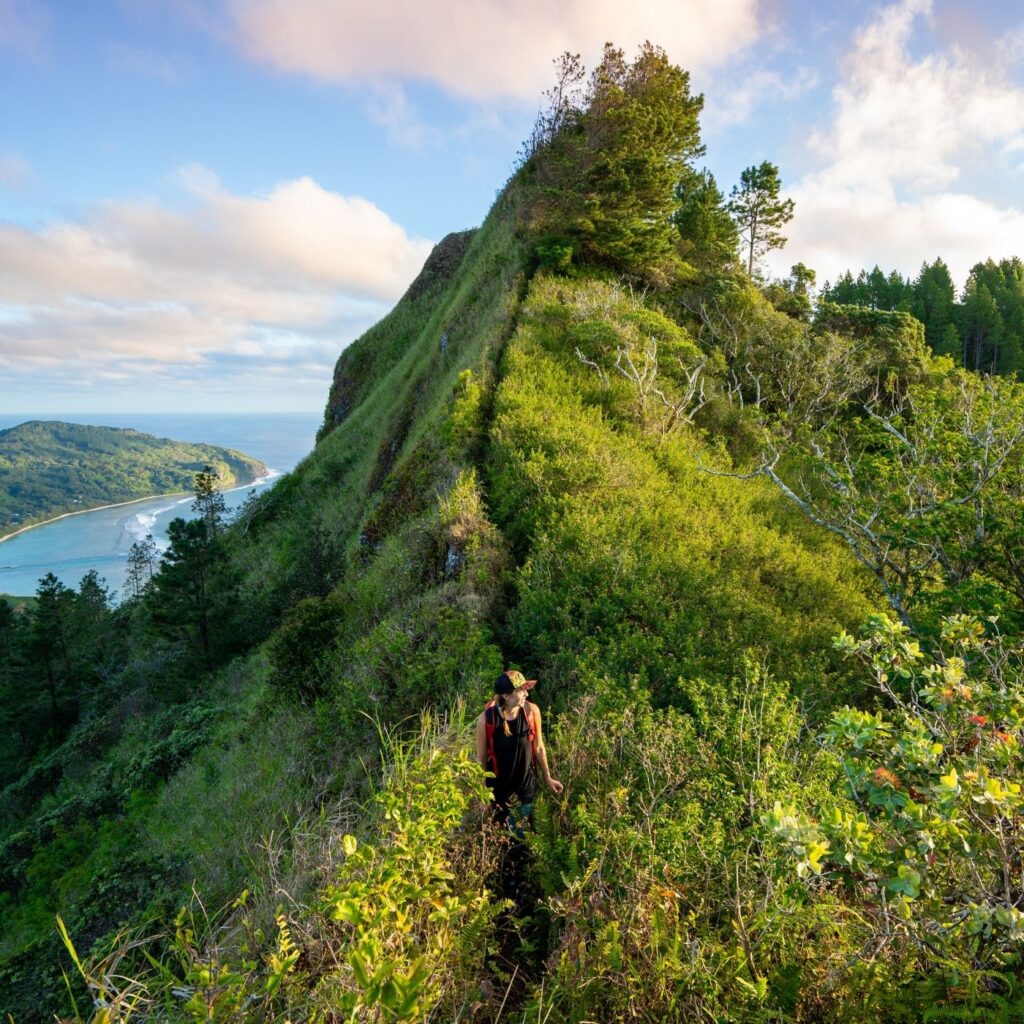
This one, of course, requires that you know at least two languages. On freelancing websites like Upwork and Fiverr, it’s possible to find online translating jobs that allow you to work from anywhere. Most of them require some experience, and often you’ll have to take tests in both your native language and the target language.
Translation companies like Gengo are entirely online, which means you don’t have to sacrifice your travel dreams to be a professional translator.
21. Au pair
While being an au pair doesn’t require a lot of experience, getting a job as one is certainly much easier if you have at least five years of nannying experience. Nowadays the market for au pairs, especially in popular places in Europe like France and England , is much more competitive than it was a decade ago.
Families that are hiring typically look for women aged 18-30 with at least a year of experience taking care of children. Most will provide room and board in addition to modest pay. You can find au pair jobs on AuPair.com or the job board on GoOverseas .
22. Travel nurse
If you are thinking about becoming a nurse or are already working as one, there are travel opportunities for you, too. Traveling nurses work in different locations around the country and even abroad for 13- to 26-week stints. You can usually choose where you want to go, and most of the time the travel and living expenses are taken care of by the employer.
One of the coolest things about being a traveling nurse as opposed to a stationary nurse is that you’re typically paid more. Yep, paid more AND get to travel — sounds like living the dream to me!
23. Travel agent
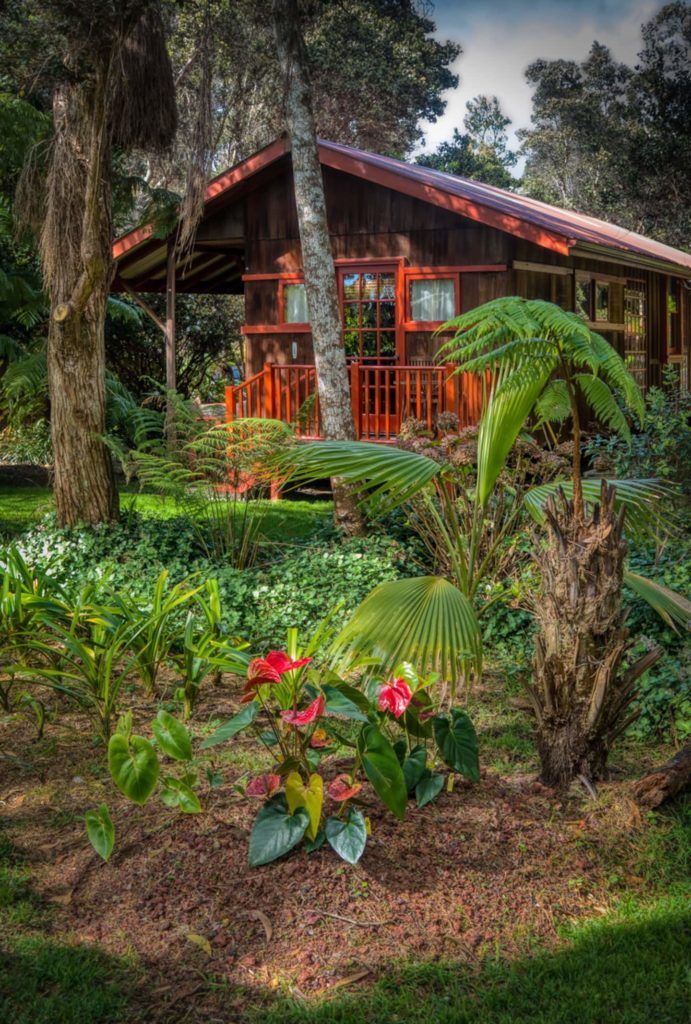
This might be an obvious one, but travel agents are on top of their game as far as finding ways to make travel a priority. You’d typically need to have a few years of experience working for a travel company before setting out on your own and making your journeys into a full-time job. But because travel agents are experts on everything from finding flights to using credit card points for travel, you will earn experience by helping others travel.
24. Tour guide
There are many different types of tour guides out there, from walking tour guides to adventure guides, segway guides, etc. Each of these roles requires a different skill set, with varying degrees of experience necessary. To get a job as an international tour guide, for example, you will likely need a certification. There are many courses available to help you achieve this; Trip School has online courses to help you get started.
Whether you’re into trading cryptocurrency or day trading, you can make some serious money as a trader while working from anywhere in the world with a good internet connection. This can be a difficult role to dive into without any prior experience or knowledge of the stock market, but there are courses out there, like this day trading course from Bear Bull Traders .
26. Scuba diving instructor
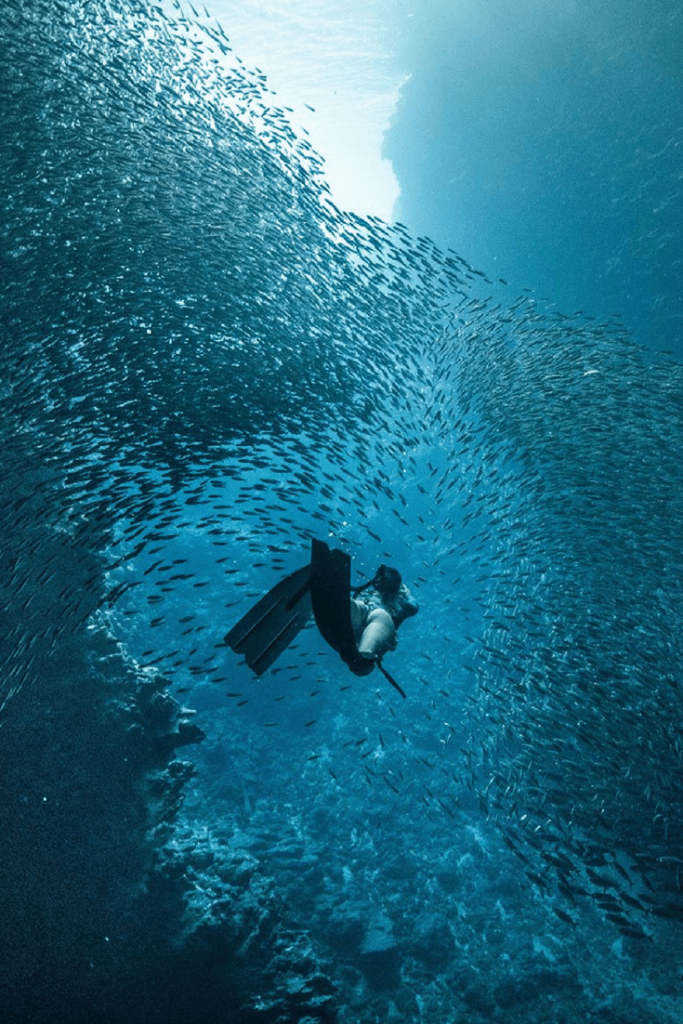
To become a scuba diving instructor, there is certainly a rigorous process involved, plus you need to have a lot of experience as a diver. If you already have the experience, however, getting certified as an instructor might be an incredible way to take your skills and travel the world.
There are a few different options for how to get certified as a scuba instructor, so make sure to check them out on PADI’s website to get started.
27. Flight attendant
Also requiring a significant amount of training, flight attendants are masters of traveling from place to place, as it’s their principal job duty. Different countries have different requirements and training methods for flight attendants, but the general consensus is that you must have at least a bachelor’s degree and pass a series of exams to become certified.
When flight attendants first start out, their schedules and destinations are usually at the mercy of their airline, but as they gain experience, they will have more freedom to choose where they go and when. In any case, they usually are able to spend a day or two seeing the sites in a given destination, but it all depends on the airline.
28. Performer
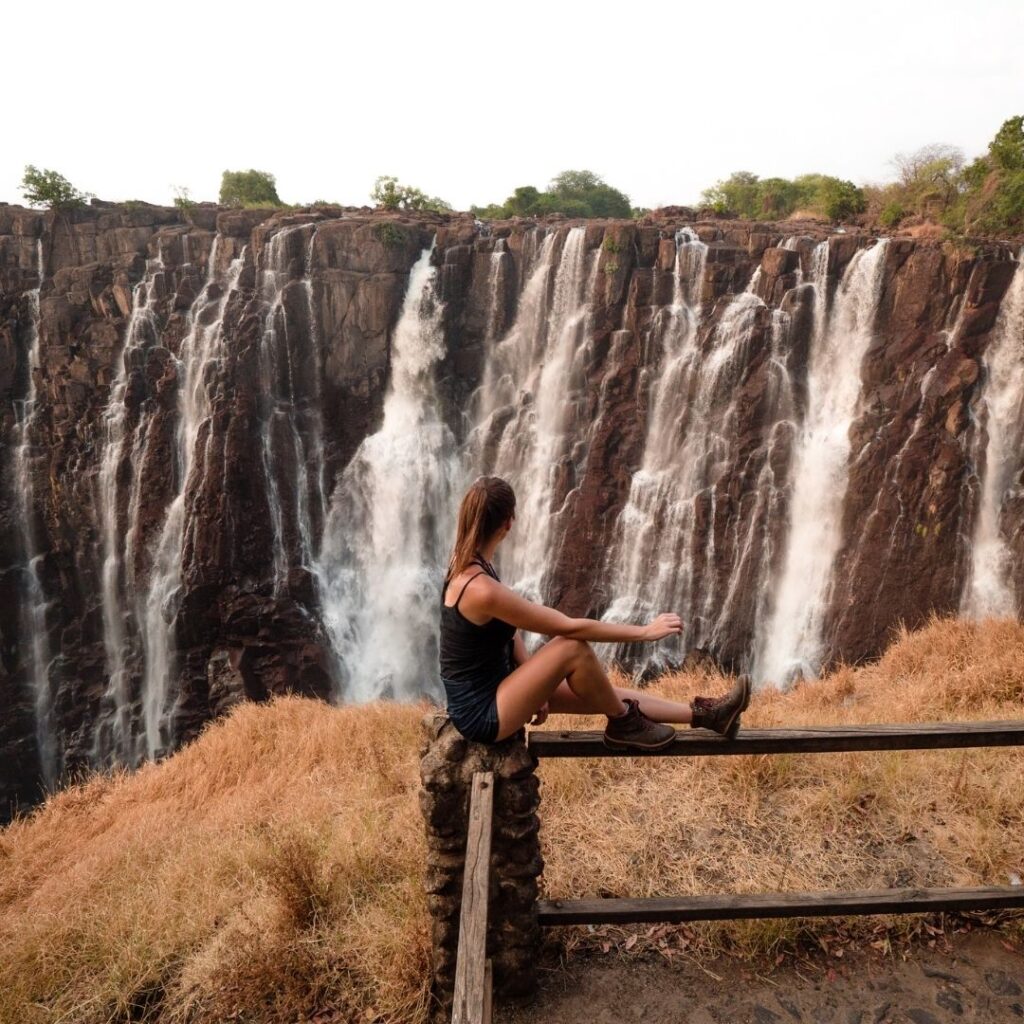
If you have a gift for music, theater, or another type of performance, why not take your talents on the road? Depending on what you specialize in, you might be able to make a living as you travel from place to place, seeking out where you might perform. Living in Mexico, I see people from all over the world pass through, stopping to do shows at local venues before moving on to the next place. This might not make you a whole lot of money, but it may fund your travels at least.
29. Online therapist
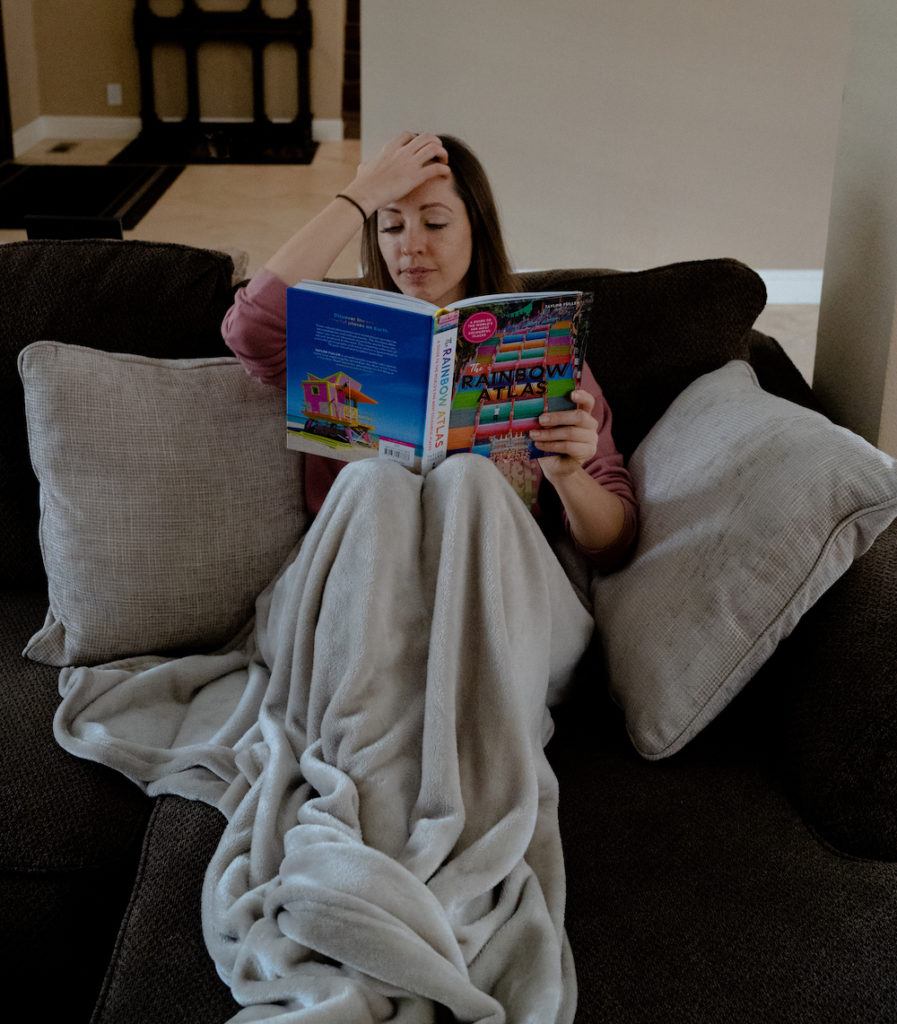
If you are a certified therapist and dreaming of traveling the world, there is certainly a way to do it. Recently, thanks to the popularity of platforms like Better Help, online therapy has become more and more common for those seeking help from a registered psychotherapist.
Whether you keep the same clients and continue supporting them virtually or start working for an online platform, you can easily take your profession remote. As long as you have a strong internet connection for video calls, you can support your clients from virtually anywhere.
30. Remote technician (IT, UX design, etc.)
Have some IT or UX design skills already? Tech is booming right now, and more and more jobs are becoming available by the minute. This means working remotely is more possible than ever, and you can do it from any place you wish (with a good internet connection). Now that Google has opened courses for those interested in learning these skills, virtually anybody can quickly gain the expertise and experience needed to make a generous living in tech, working entirely remotely.
Check out Google’s certification programs to see if you can transform your skills into a lucrative remote career.
Pin me for later:

Ready to take your career on the road? I hope this list provides a bit of hope for anybody stuck in a rut and wanting to travel. Whether you’re fresh out of university or looking for a career change that allows you to travel the world, there’s something for almost anybody on this list.
Which travel job sounds the most enticing to you?
About Emily Becker
Emily Becker is a digital nomad based in Costa Rica. She's been traveling on and off since 2014 and has visited 15 countries—planning to tick many more off her bucket list. In addition to writing for BMTM, she works as a copywriter and project manager.
Leave a Reply Cancel reply
Your email address will not be published. Required fields are marked *
Save my name, email, and website in this browser for the next time I comment.
subscribe to our newsletter
This site uses Akismet to reduce spam. Learn how your comment data is processed .
The 12 Best Cameras for Travel Photography in 2024
A Post By: Matt Murray

This article was updated in February 2024 with contributions from Matt Murray and Jaymes Dempsey.
Need a top-notch travel camera so you can capture gorgeous photos of your next adventure? You’ve come to the right place.
Picking the best camera for travel photography can be hard work, considering the array of options on the market. Fortunately, I’ve spent decades traveling with dozens of cameras (film, instant, and digital), and below, I share my top 12 favorite models.
Note that I’ve offered a variety of choices, including models for beginners, professionals, and everyone in between – as well as cameras at every price point, from affordable point-and-shoot models all the way up to pro-level full-frame cameras. (In other words: No matter your requirements, we’ve got you covered!)
So if you’re ready to find the perfect camera, then let’s dive right in, starting with our top choice:
1. Sony a7C II

The original a7C was an excellent travel photography camera in its own right, thanks to the full-frame sensor and compact body – but the Sony a7C II , which debuted in the fall of 2023, is even better than its predecessor.
Sony’s latest full-frame offering is an all-around great camera, but travel photographers in particular will appreciate the extremely compact body combined with the impressive 33 MP full-frame sensor. Expect outstanding low-light capabilities for interior architecture and nighttime street shots as well as amazing autofocus performance when capturing travel portraits and action scenes. Plus, if you like to do a mix of photo and video shooting while exploring distant countries, you’ll love the beautiful 4K/60p video.
The in-body image stabilization ensures sharper handheld shots when working at slower shutter speeds, such as when shooting at restaurants and in churches (where tripod use is often restricted), and the camera also includes access to a tremendous line of travel photography lenses. My biggest gripe is the lower-resolution electronic viewfinder, which is on par with the old a7C as well as the Sony a7 III. But it’s still highly usable, and for serious travel shooters looking for top-notch image quality in a compact body, the a7C II is a stellar pick.
- Ultra-compact body
- Excellent 33 MP full-frame sensor
- Amazing low-light performance
- In-body image stabilization
- 2.36M-dot electronic viewfinder
- Somewhat pricey
2. Nikon Z fc

Looking for solid image quality in a portable, easy-to-use camera? Then check out the Nikon Z fc , which offers plenty of handy features, not to mention a retro-style, streamlined camera body.
The Z fc boasts a high-quality APS-C sensor , so you’ll have no problem capturing beautiful images of landscapes, cities, and any other subject you might encounter on your travels – yet the camera is relatively small and inconspicuous, so you won’t need to worry when photographing in busy areas or carrying the camera for long hours on buses, planes, or trains.
The film-type dials on the top of the camera promise a tactile shooting experience, and the articulating screen makes it easy to capture photos and videos of all kinds. Speaking of video, the Z fc does offer 4K recording, so if you also like to vlog or shoot cinema-type footage while traveling, you’ll be thoroughly impressed by the results.
And did I mention that you can grab the Z fc for under $1000? In other words, it’s a great option for travel photographers on a budget!
- Great image quality
- Reasonable price
- Beautiful design
- Retro style doesn’t suit all photographers
- Not as small as point-and-shoot options
3. Fujifilm X-T30 II

The X-T30 II is the latest model in Fujifilm’s midrange APS-C lineup, which successfully packs high-level features into smaller, lighter bodies. The X-T30 II boasts a capable 26-megapixel APS-C sensor (so you won’t struggle to capture printable images even in low-light scenarios), and it can shoot up to a whopping 30 frames per second (so you don’t need to worry about capturing those split-second moments on your travels). Like other Fujifilm cameras, the X-T30 II has face- and eye-detection autofocus, which is a big help for travel portraits and street shots . It also includes Fujifilm’s renowned film simulations .
When you buy into the Fujifilm system, you’ll gain access to dozens of great travel photography lenses ; in fact, the hard part is actually deciding which is right for you! My personal go-to lens for travel photography is the XF 18-55mm f/2.8-4 lens . While the X-T30 II doesn’t include in-body image stabilization, the technology is included in several of Fujifilm’s best travel lenses, so as long as you choose your lenses carefully, you won’t have problems handholding indoors or at night.
The X-T30 II offers a uniquely tactile shooting experience thanks to a shutter speed and exposure compensation dial, so if you’re a fan of film-camera ergonomics, this camera will make you feel especially at home. It offers surprisingly great value, too; at the time of writing, you’ll pay just $900 for the camera body (though you will need to buy a lens separately).
- Excellent lens lineup from the affordable XC lenses to enthusiast and professional XF lenses
- Stunning image quality with a range of JPEG film simulations
- Many amazing features
- Not as robust as Fujifilm’s higher-end models
4. Sony RX100 VII

Sony keeps improving the RX100 line, and the RX100 VII is its best model yet. It may have a smaller sensor than the Nikon Z fc featured above, but the RX100 VII is still a powerful performer. It boasts impressive autofocus, a flip-screen for vlogging and selfies, a mic socket, and a huge zoom range (equivalent to 24-200mm in full-frame terms).
The RX100 VII also borrows tech from Sony’s flagship models, which is why it can shoot up to 20 frames per second with no viewfinder blackout.
If you’re a watersports fan, there’s an added bonus: the RX100 has underwater housing available for surfing, diving, and snorkeling photos. At around $1300 USD, the RX100 VII is on the pricier side, but for serious travel photographers, it’s an excellent choice.
- Impressive autofocus
- Handy zoom range
- Up to 20 frames-per-second shooting
- Expensive for a compact camera
- Smaller 1-inch sensor
5. Olympus OM-D E-M10 Mark IV

Olympus may not be the world’s most popular camera brand, but that’s okay – especially if the company continues to develop outstanding models like the OM-D E-M10 Mark IV .
In many ways, the E-M10 Mark IV is an ideal travel photography camera. It offers amazing image quality – thanks to a 20 MP Four-Thirds sensor – yet it’s remarkably compact, so you can literally slip it in your pocket or handbag while traveling and only pull it out as needed. And the lenses are designed with portability in mind, too; a perfect choice for a lightweight setup is the 14-42mm EZ lens , though if you want more range, take a look at the 14-150mm .
Other features include a tilting 3-inch screen (so you can capture low-angle shots as desired), a 2.36M-dot electronic viewfinder (for a DSLR-like shooting experience), and in-body image stabilization (so you can work handheld even in low-light travel scenarios). Plus, the price is incredible; you can grab the E-M10 Mark IV for just $700, and if you want to add a capable kit lens, you’ll pay just $799. How’s that for a bargain travel camera?
- Compact and light
- Excellent image quality
- Good range of lenses
- Smaller sensor
- Lower-resolution EVF
6. Sony a7 IV

If you’re an advanced travel photographer in need of a do-everything camera, consider the Sony a7 IV , a full-frame, pro-level model that combines incredible autofocusing, beautiful image quality, and capable video into one reasonably priced package.
The a7 IV isn’t designed specifically for travel, so while it’s not big , it’s not especially compact, either. But you can comfortably travel with it in a backpack or even around your neck, and for serious shooters, the bevy of top-notch features will make up for the extra bulk.
The a7 IV’s incredible sensor and in-body image stabilization allow you to capture sharp handheld photos indoors (e.g., at museums and churches) and at night. And thanks to the 3.68M-dot electronic viewfinder, you can expect a lifelike shooting experience (along with other cool perks like exposure simulation), while the fully articulating screen makes it easy to create unique low- and high-angle shots of popular landmarks. Finally, the 4K/60p recording capabilities make the camera a top option for hybrid shooters; you can vlog, shoot video, and capture beautiful images all on the same day.
- Astonishingly good image quality
- Great video features
- Fully articulating screen
- Beautiful EVF
- Pricey compared to other models on this list
- Larger than other options
7. Nikon D5600

This next model needs no introduction; Nikon SLRs were favored by many famous travel photographers in the 1980s and beyond. The D5600 is the latest camera in Nikon’s midrange APS-C series, and it’s a perfect choice for beginners and enthusiast photographers alike.
The D5600 boasts Nikon’s excellent ergonomics, and the camera feels reassuringly comfortable in your hand, although it’s not as compact as other models on this list. Image quality is superb and low-light shooting is very impressive. Plus, you get a fully articulating screen (for selfies, vlogging, and tough compositions) along with excellent battery life.
These days, you can purchase a new D5600 for a great price, and it’s even cheaper if you buy it used – so if you’re in need of a reasonably high-level camera with a bargain price tag, it’s definitely a model worth checking out.
- Good ergonomics and handling
- Good battery life
- No 4K video
- On the larger side
8. Ricoh GR III

Ricoh has been producing super-compact GR cameras since the film heydays of the late 1990s. Those classic point-and-shoot GR models were known for their sharp wide-angle lenses and minimalist controls, and the digital line of GR cameras is no different.
The Ricoh GR III is a perfect mix of portability, optical quality, and impressive features. You get a fixed 28mm full-frame equivalent f/2.8 lens capable of producing great images, and four-stop shake reduction that ensures sharp files even in challenging light.
The GR III is often compared to another camera in this list, the Fujifilm X100V, but I’d encourage you to grab the Ricoh if you prefer a smaller camera with a wider angle of view.
- Truly pocketable
- Four-stop shake reduction
- Fantastic wide-angle lens
- The straight-out-of-camera JPEGs are not as good as Fujifilm’s
- Battery life could be better

9. Sony a6700

It’s easy to see why Sony has grabbed a big share of the mirrorless camera market in recent years: The company produces an impressive range of cameras that appeal to professionals and enthusiasts alike.
The Sony a6700 may not have a full-frame sensor like some of its stablemates, but its compact body and impressive specs make it a strong candidate for the best enthusiast travel photography camera on the market. The a6700 features a 26-megapixel APS-C sensor, outstanding autofocusing for photography and video, and five-axis optical image stabilization. The 180-degree flip screen also makes the a6700 handy for vlogging and selfies.
And speaking of vlogging and video: While the a6700’s predecessor, the a6600, only offered 4K/30p, the a6700 now offers 4K/60p and can even capture 4K/120p video (albeit with a heavy crop) for those epic slow-motion travel clips!
I do think the layout and controls could be improved, but it’s one of the only drawbacks to an otherwise excellent product. Quick note: If you like the look of the a6700 but you’re on a tighter budget, also consider the a6400 . It may not be as impressive as the a6700, but it offers excellent value for money.
- Small and light
- Great lens lineup
- Good image quality
- Handling and ergonomics could be improved
10. Olympus Tough TG-6

Going on an extreme adventure? The Olympus Tough TG-6 could be the best travel camera for you. This compact point-and-shoot model can withstand a lot of punishment, thanks to its shockproof, dustproof, and crushproof body.
The TG-6 can also work in temperatures as low as 14 degrees Fahrenheit (-10 degrees Celsius), and it’s fogproof, even during sudden changes in temperature. As I found out on a recent trip to Indonesia – where I was frequently moving from an air-conditioned hotel room to the outside heat and humidity – a foggy camera can be a real inconvenience.
For snorkeling and diving fans, the Tough TG-6 will love being underwater almost as much as you. It’s waterproof up to 49 ft (15 m), and it boasts several nifty underwater modes, including a microscope mode that can focus on objects 0.39 in (1 cm) away.
- Super tough
- Only 12 megapixels
- More suited to adventurers than enthusiast photographers
11. Fujifilm X100V

I’m a huge fan of the Fujifilm X100 series cameras (I’ve owned three of the five models released over the last decade). In fact, many photographers loyal to other brands buy an X100-series camera as their “take-everywhere” body.
The X100V is small and light, yet it boasts an incredible 35mm f/2 fixed lens. Other useful features include its leaf shutter (good for photographing in quieter places like museums and churches ) as well as a built-in neutral density filter (perfect for beautiful long-exposure landscapes and wide-aperture shots in bright light). And of course, you get a range of stunning JPEG film simulations that are ready to go as soon as you turn on the camera.
While the entire X100 series is great, note that the latest model, the X100V, does have an important improvement over its predecessors: it’s weather-resistant. This makes it an excellent choice for photographers who shoot in sand, rain, snow, and more.
- Excellent lens
- Built-in ND filter
- Fujifilm JPEGs
- Weather-resistant
- No in-body image stabilization
- More expensive than its predecessors
12. Canon PowerShot G1 X Mark III

The Canon PowerShot G1 X Mark III is the third iteration of a popular point-and-shoot series from Canon. It’s sleek, it’s stylish, and it almost looks like a mini DSLR.
Many compact cameras have a tiny sensor – one inch or smaller – but the G1 X Mark III is an exception; it boasts an impressive APS-C sensor, which is one of the biggest sensors offered in such a portable camera. It also features a handy zoom range of 24-72mm and an optical stabilizer for shooting in low light, so you’ll be ready to handle any travel photo scenario you encounter.
The G1 X Mark III is easy to use and produces images with high clarity and outstanding colors. The only downside is the price tag: At around $1000 USD, it may be on the high end for some enthusiast photographers, but for intermediate shooters, it’s certainly worth the extra cash.
- Large APS-C sensor
- Compact size
- Articulating screen
- Premium price
What is the best camera for travel photography?
Choosing the perfect travel photography camera is a difficult task, one that depends on many factors. Before you hit that “Buy” button, try to determine what you value most, then evaluate the different cameras I’ve discussed based on those criteria.
So what is the best camera for travel photography? Only you can answer that question! Read my list carefully, think about what matters to you – and, if you’re still struggling, go to a camera shop, where you can talk to the staff and hold each camera in your hands.
Then, when you’re ready, grab a camera and hit the road!
Now over to you:
What travel photography camera do you plan to buy? Share your thoughts in the comments below!

Read more from our Cameras & Equipment category
Matt Murray is a travel, portrait and stock photographer from Brisbane, Australia. Matt publishes Fujifilm X-series body reviews, lens reviews and photo galleries on his website Matt Loves Fuji . Matt also hosts an analogue photography podcast Matt Loves Cameras featuring reviews of classic film and instant cameras.

- Guaranteed for 2 full months
- Pay by PayPal or Credit Card
- Instant Digital Download

- All our best articles for the week
- Fun photographic challenges
- Special offers and discounts


- Working as a Travel Photographer in 2021
- Career Tips
- By Lisa Michele Burns
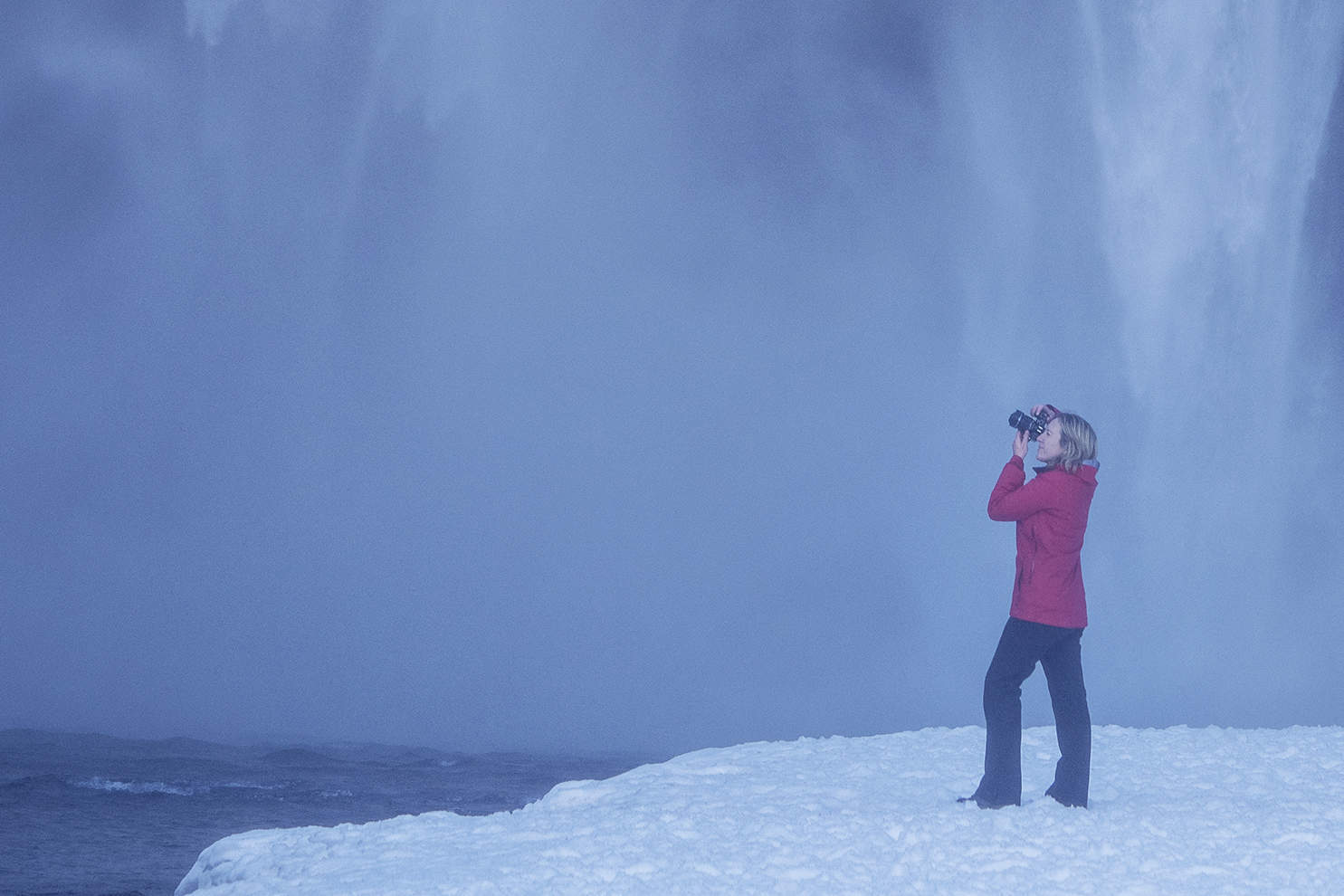
Travel Photography Jobs in 2021 – Let’s start the conversation…
Travel, ah that word conjures up so many butterflies, memories and immediately puts a smile on my face. Unfortunately, most of us didn’t use that word too much in 2020 because Covid-19 came along and made us refer to travel as that impossible adventure instead. Especially when it came to travel photography jobs and opportunities.
Of course, for the safety and health of our loved ones it has been a year in which it’s been best to stay home. While some people are starting to slowly travel again, others are waiting for the right moment especially since changes to restrictions are still ongoing. I’m in the latter camp and won’t be travelling abroad until it’s completely safe to do so.
So, where does that leave those with a job or hoping to have a job in the travel industry? In particular, those hoping to work as a travel photographer in 2021?
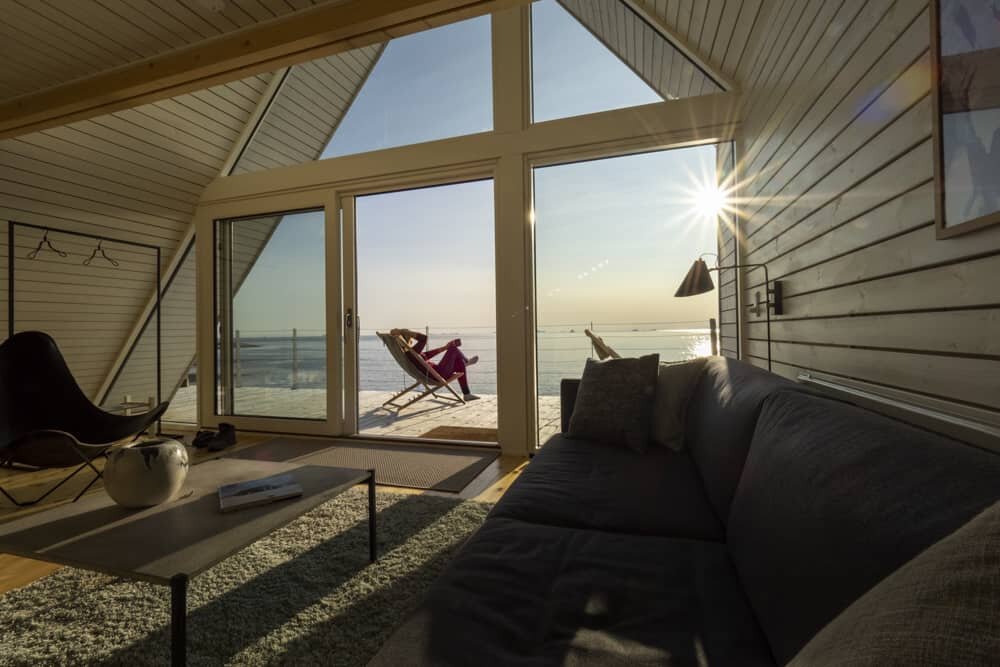
To be honest, in a little bit of limbo but the good kind of limbo. The kind where you bend your back almost too far and think you’re about to fall on your ass…but don’t. The need for constant content, imagery, inspiration and marketing materials is still there, perhaps more than ever since we’re such a visually focused bunch.
If you’ve got dreams of being a travel photographer or were already working in the industry I’m sure you’ve been forced to stop and reassess. Perhaps you’ve been considering other career options or maybe you’re still crossing your fingers and hoping the world will allow it to be a viable career option again very soon.
Whichever way you’re swaying, know that it’s still possible, even though I’m sure there are a few sniggers (I actually wrote snickers first, must be hungry) about my positivity. Sure the road might be a little bumpier than pre-Covid times but there are always pathways to make it happen. It’s all about redefining the term ‘travel photographer’, finding your niche or unique service within the industry and making it work for you.
Let’s explore a little further…

*A little note: I’ll be using the term ‘local’ often as I’m aware that travel may not be possible for all of us so feel free to relate that to your current circumstances and expand further abroad if that’s relevant to you. Hopefully, if we are all photographing locally a little more in 2021 we’ll then be so damn inspired once we can travel further afield that the industry as a collective will be brimming with talent and creative ideas in the near future.
Travel Photography and Covid-19
Now I don’t want to start out all negative but let’s take a quick look at the way Covid-19 has affected travel photographers, then we’ll get on to ways you can still find work.
Like most people working in the travel industry, 2020 wasn’t a great year when it came to campaigns and client work for myself and The Wandering Lens. In fact, it was basically non-existent regarding international travel after March 2020 however there were some local opportunities and the site luckily continued to thrive due to its focus on learning photography. Depending on where you live in the world you will have been impacted differently so please know this article isn’t written without consideration for those still in lockdown.
As we all know, the tourism industry suffered greatly because of the pandemic. For travel photographers this meant some clients no longer have the budgets they once had for imagery and are instead struggling to stay afloat and keep busy themselves. Many travel magazines have stopped publishing, some hotels have been turned into quarantine facilities and tour operators have ceased working due to a lack of tourists. Those with travel blogs or travel related websites will have seen a dramatic dip in traffic since people aren’t currently searching for travel ideas or inspiration.
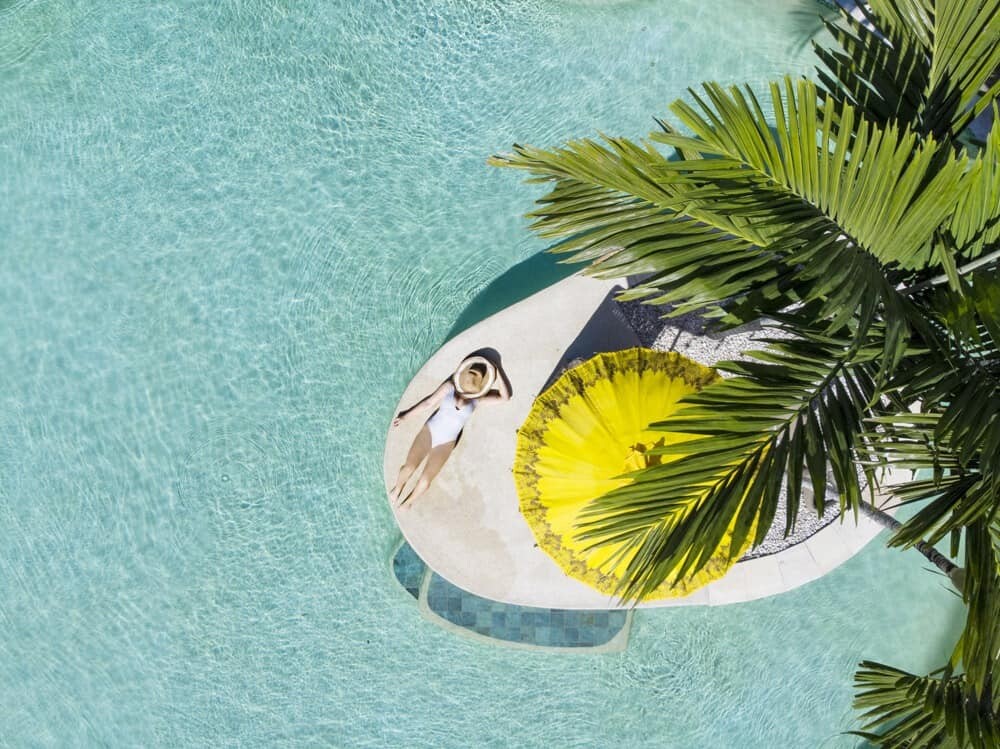
Local tourism boards and operators have been a huge shining light throughout this period, inspiring us to travel closer to home and explore our surroundings. You may have noticed a lot of travel photographers now doing campaigns or working with clients in their home states or countries. It’s these transformations that have seen some of us redefining what it means to be a travel photographer. Does ‘travel’ have to include a trip overseas or even a flight? Heck no! It can be about inspiring others to travel in your home region or even regions you’ve previously visited because there will be people still exploring locally there too.
If you’re keen to share how your photography has been impacted this year you’re more than welcome to leave a comment at the end of this article.
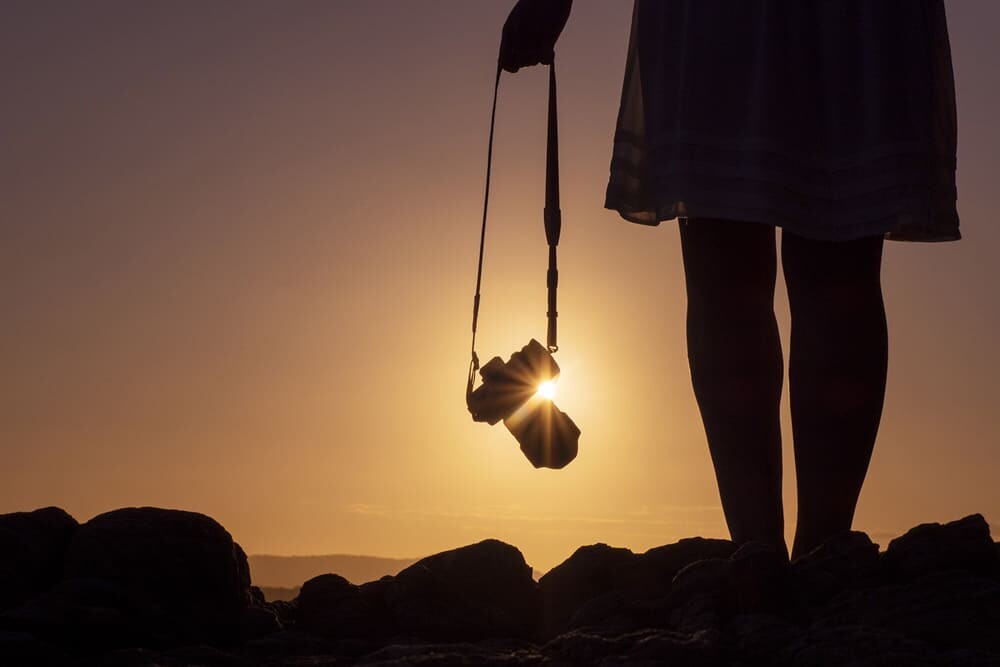
Where will the travel photography jobs be in 2021?
As strange as this sounds, a lot of them will be online or in your local areas. As destinations focus on keeping those travel dreams alive, tourism operators will be turning to content and imagery to showcase their cultural and natural wonders via social media and online materials. If you’ve already got imagery from various destinations that’s of a professional standard and could add value to a potential clients marketing plans then this could be a great path to follow in 2021.
When the pandemic first hit it was news around the world and while it still very much is, have you noticed the shift in focus for travel related businesses and organisations? Back in March and April 2020 they had to manage cancellations then reassure and rest a little on their brand messaging. The later part of 2020 saw many travel companies back to showcasing their offerings and the opportunities and experiences that exist once we’re able to travel again.
Instead of seeking out the job title of ‘ Travel Photographer ’, delve deep into the forums or job websites looking for roles that require content creation or destination marketing for businesses or projects within the travel industry. If it were as easy as searching for ‘travel photographer’ then I’d hate to see how much competition there was for each advertised role.
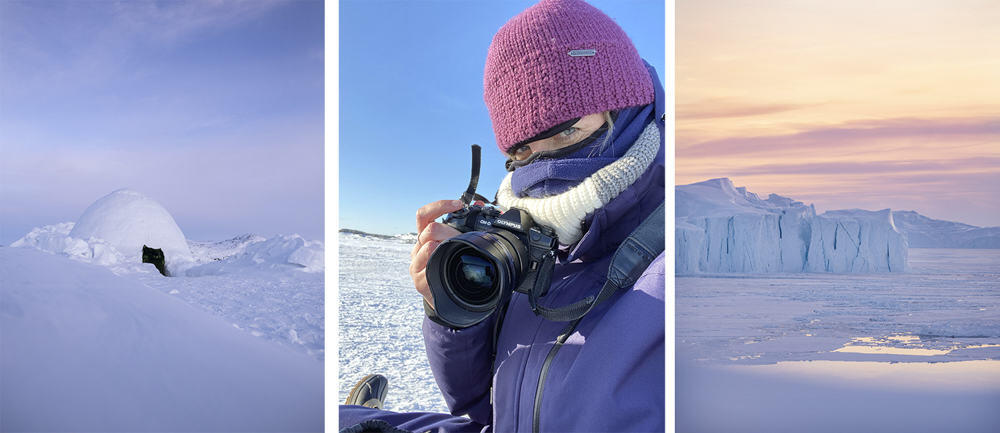
Where to look for travel photography jobs and opportunities –
Networking or Direct Contact: Rather than waiting for the dream job or opportunity to appear, why not create it? You could approach a local tour operator about photographing some of their experiences and developing a media library for them or even pitch the concept of photographing their clients during tours or similar in return for a daily fee? Ideas like this need to benefit both parties but if you can prove that by adding your services as a photographer it will help to boost their business and/or add profit to it then it’ll be hard to turn down. Being proactive and creating your own career is one of the best ways to approach working as a travel or freelance photographer!
Government and Local Tourism Organisations: Even if roles aren’t advertised, there is usually information about their annual focus or reports available on their tourism sector. Take a peek at your local government tourism website and see what you can find then write down ways in which you believe your photography could play a part.
Social Media: Follow your local tourism board, tour operators that exist within your area and stay in the loop about their locations and products. You never know when your skills might align with their strategy! Engage and be genuine about your interest in their posts so if you do eventually reach out and enquire about photographing for them, they’ll know who you are. Read here about using relevant hashtags on Instagram to increase your chances of visibility.
Also on social media, particularly on Facebook are a number of creative groups that share opportunities to members. You can start by searching ‘Creatives in {insert your location}’ or browse the many travel photography and travel industry groups that exist and sometimes share opportunities.
Job Directories : Here in Australia we have seek.com.au that’s the go to place for finding work regardless of what industry you’re in. As I mentioned before, don’t just seek out ‘travel photographer’ or even solely ‘photographer’, also look for the positions that involve creative content, content creation or marketing within a travel focused business.
LinkedIn: This is a relatively new addition to my research roster but there is A LOT of information and opportunities to be discovered via LinkedIn . Not only can you find out the best person to speak to at companies you wish to approach or work for but you can browse job ads, follow people of influence within the photography community and start to piece together a little web of information. More often than not the opportunities you’re after won’t be advertised and instead are all about networking and pitching to the right people. Also within LinkedIn there are a number of interest groups like ‘International Freelance Photographers’, ‘Photography Industry Professionals’, ‘Media & Marketing Professionals’, ‘Travel & Tourism Industry Professionals’…there are so many, it’s worth having a browse and see which ones you’d be interested in joining in order to see if any opportunities arise!
Lastly, look no further than your own abilities: To be a successful travel photographer you don’t have to work for anyone, work for yourself! Create your own business whether it’s selling travel prints, publishing your own blog or magazine, starting up a media library or content creation business. It is TOTALLY POSSIBLE and the rewards you get from working for yourself far outweigh any of the doubt or difficulties that come with starting a new business.
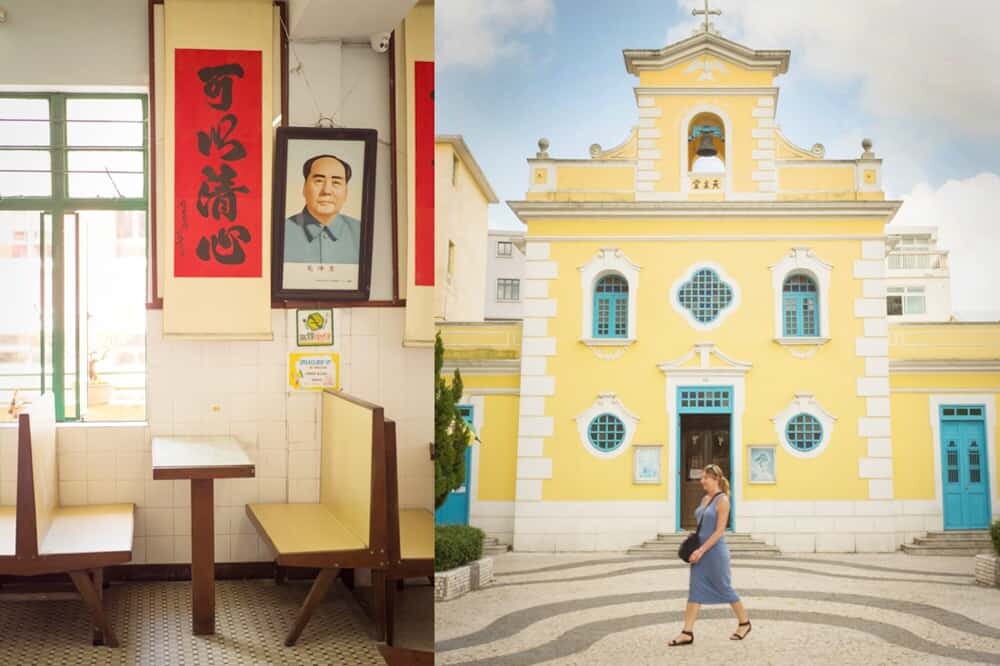
Working as a Freelance Photographer in 2021
Those with portfolio of work should put together a presentation PDF (there’s an eBook on this coming soon) and ensure their online portfolio is up to date with your available imagery in order to start approaching potential clients and selling your images.
Always research what’s being shared, what’s on trend and what potential clients are looking to focus on in the coming months rather than looking back. Keep in mind seasonal trends too, if you’ve got a great collection of imagery from a particular season you think could work for the 2021 season, package it up so it creates the possibility of an easy yes!
While a lot of travel publications have ceased operation for the foreseeable future, there are still plenty of opportunities to contribute as a freelancer to both print and online publications. Spend some time venturing down the Google rabbit hole and explore just how many are out there, it’ll probably surprise you! Focus on magazines or websites that cover regions or topics that you’ve already got experience or images on so you can put together a pitch that’s interesting for the editor and almost ready to go. You want to do all the work on your end so when they read your pitch, it’s an easy yes or no as to whether it fits their upcoming editions…don’t be disheartened if you get a lot of no’s, it’s completely normal when working as a freelancer!
I’m always so impressed at how many beautiful travel photography magazines are out there; Take a peek at the inspiring travel focused editorials in SUITCASE (which makes such a beautiful coffee table read!), GetLost , Cereal , Lodestars Anthology , Sidetracked and one of my absolute favourites Tiny Atlas Quarterly …their website is an explorer and design lover’s dream.
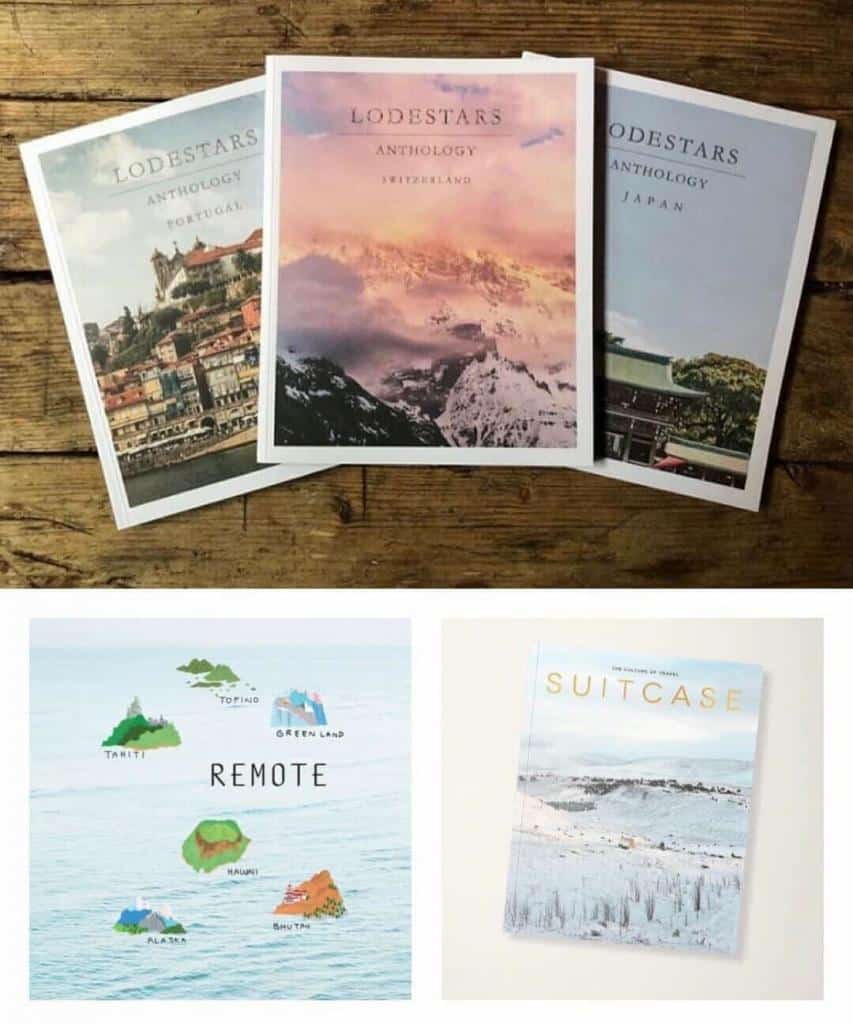
When you think of travel photography, what part of it attracts you most as a future career? If it’s the jet setting and posing in different locations for Instagram you could be in for a bit of a wait before this can happen freely again. If however you’re intrigued by telling stories of cultures, places or projects, there are ways you can start to pave a career for yourself as a freelancer without applying for jobs or venturing too far in the near future.
Documenting conservation, environmental or humanitarian projects are great ways to carve a portfolio and highlight important issues facing the world while at the same time showcasing your creative abilities. It’s the National Geographic, reportage style of travel photography that requires research and a bit of hustle along with a real interest in your subject. Using 2021 to photograph NGOs (Non-Governmental Organisations) or local projects could be an incredibly rewarding and inspiring way to build a reputation in the freelance world. Not only to the organisations usually need imagery to share their message but you can also use the images to get published by helping to tell their story or document their work.
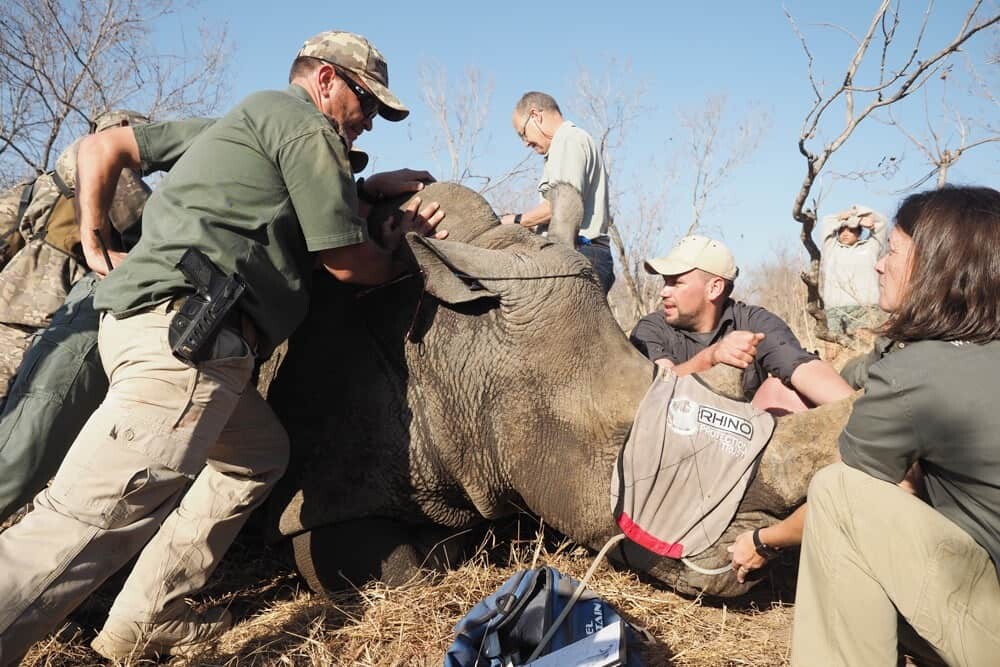
Exploring Stock Photography
As companies look to advertise and continue focusing on travel experiences, they may be looking to stock libraries for content to fulfil the constant need for something new.
I’ve always had a bit of a love/hate relationship with stock libraries, some pay next to nothing to photographers and help to reduce the overall worth of photography, whereas others are taking amazing leaps forward to ensure the growth of the industry.
Adobe Stock and Shutterstock are two I recommend looking into if you’ve got a library of travel photographs (or lifestyle imagery etc.) and want to see if they’ll generate income via stock sites. Shutterstock has a handy page called ‘ The Shot List ‘ that’s updated monthly and lets photographers and creators know what people are actively seeking. For example, in January 2021 the main content relates to Black History Month, Health-conscious imagery, hospital interiors and aerial drone footage.
It’s not a guaranteed huge income earner but you do hear of success stories via stock photography all the time and if you’ve got travel images you’re not using just sitting on a hard drive, why not give it a go? You may need to provide exclusive rights to selling your images via certain stock libraries so just be sure to read the fine print before signing up and make sure you’re comfortable with the agreement.

Committing to Improving your Photography
All this time at home has allowed many of us to take a closer look at our photography. If you’ve read other articles on The Wandering Lens or attended one of my courses you’ll know that I’m always rambling on about being open to always learning and improving your craft . I LOVE discovering a new technique, setting (not even professionals have it all worked out!), location or inspiration.
Take a peek at this guide to ‘ How to Learn Photography – 8 Learning Styles, find what suits you! ‘
Whether you’re just starting out as a photographer or have been working professionally for years, there is always something you can do to improve your photography and build upon your skills. Always! Those who settle in their current skill set will get left behind as other creatives build upon their talent and incorporate both modern technology and concepts.
One of the best things you can do to improve your chances of success within the industry is to spend time developing your own style. Creating a unique vision in which you capture scenes with a refreshing approach, allowing yourself to stand out from the crowd when approaching clients! What makes your work different from the next photographer? Learn more here.
Maybe you’re great at landscapes but have you ever tried incorporating a new element like water into your shots? Perhaps you enjoy photographing people but have you used foreground features to add colourful bokeh around your subject? These are two very simple examples but once you start exploring new ideas for your photography the sky (preferably a pastel sunset sky) really is the limit.
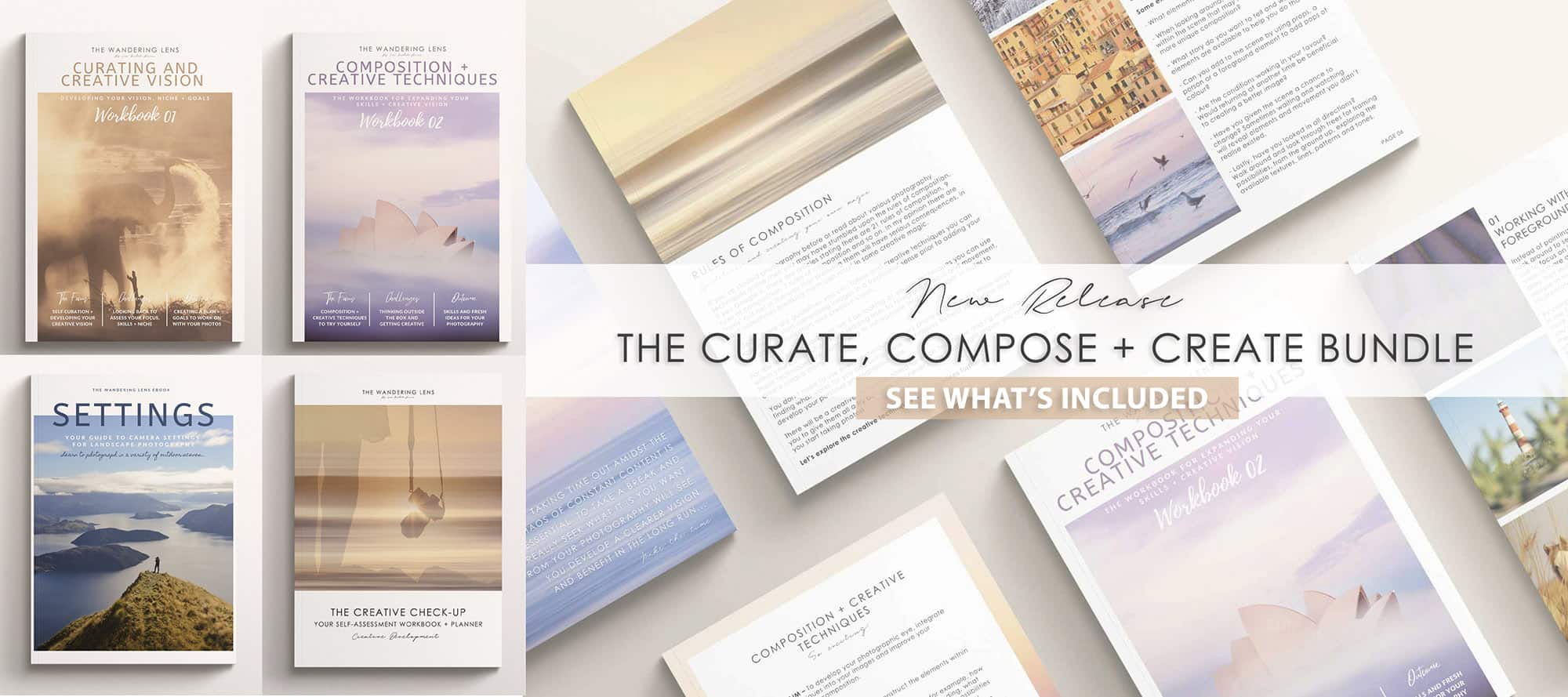
For a lot of photographers, it can be hard to stay motivated, especially if you’ve been approaching potential clients or pitching ideas to editors/brands and are continually get told no thanks. We’ve all been there!
The, ‘thanks, but no thanks’ reply can hit you in the jugular but sometimes it’s just not meant to be. It may not be a reflection of your work, your professionalism or you as a person, it may just not be a good fit for that client at that time. On the flip side (not to be a downer) it could be that your work wasn’t presented in the best light, perhaps your website wasn’t user friendly or the images you shared weren’t relatable to that particular client.
Knowing how to approach clients to improve your chances of a positive reply requires even more effort than actually taking and editing your photos. Most successful photographers will agree that the photography part of a travel photography or freelance photography career only takes up about 10-20% sometimes even less, the rest of the time you’re putting on hats relating to marketing, business and self-promotion among others.

When it comes to improving your photography, it’s not solely about taking photos, it’s about creating a plan for showcasing your work, knowing how to promote it and developing a plan alongside some goals for your work.
If you’re still keen to work as a travel photographer in the future but are spending more time at home over the coming months, why not use this time to invest in your career? I’m teaching how to develop a creative vision, build a portfolio and work towards a career in the industry via The Creative Photography Course . It’s a six-month online program that’s completely self-paced so you can download the workbooks each month and work on them in your own time. The third round started on August 1st with the next course start date being March 1st, 2022. Ensure you’re on the newsletter list to be the first to know when registrations open!

Things you can do to benefit your future photography career path:
- Define your creative vision ( I’ve written an eBook on this here )
- Decide on the areas you’re keen to work; is it travel portraits, hotel marketing, influencer work, selling landscape prints, conservation/environmental projects?
- Create or redesign your online website/portfolio to ensure it’s showcasing your work in the best possible light that’s easy to browse and understand. ( Read about using Wix , just one of the many platforms you can use, I’ll share a Squarespace review soon also because I LOVE their page layouts and design features)
- Spend time learning about SEO to help boost traffic to your online portfolio
- Create a list and research potential clients and the best contacts to reach out to
- Curate and do a self-assessment of your portfolio. Are there improvements you can make? Things you need to learn in terms of the technical side of photography?
- Work on posting via social media regularly in a way that stays true to your future photography goals. Develop stories, behind the scenes videos and posts that relate to how you want to work as a photographer. For example, if you want to only focus on landscapes and outdoor experiences, only showcase these and the stories behind your work so people don’t get confused about who you are as a photographer.
- Be open to exploring new opportunities, it may not always be your dream gig but can it lead to other openings or add to your CV or portfolio in a positive way?
I love seeing new photographers developing their career so feel free to leave a link to your portfolio or Instagram account in the comments below so myself and others can follow your adventures!
To read more about a career in travel photography you can read the following free articles on The Wandering Lens –
How to Become a Travel Photographer (written pre-Covid)
Curating Your Social Media for Photographers
How to Stand Out as a Photographer Today
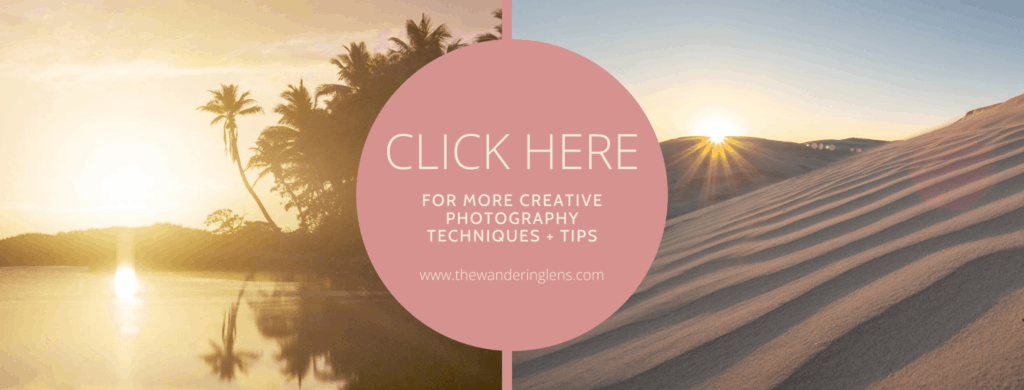
Hello! I’m the founder and photographer behind The Wandering Lens. With 17+yrs experience as a professional travel and landscape photographer, all advice found on this site is from my personal experience on the road. I hope it’s useful for your own travels and would love to hear in the comments about your trips and experiences around the world.
Enjoyed reading? Share the article!
Keep Reading...
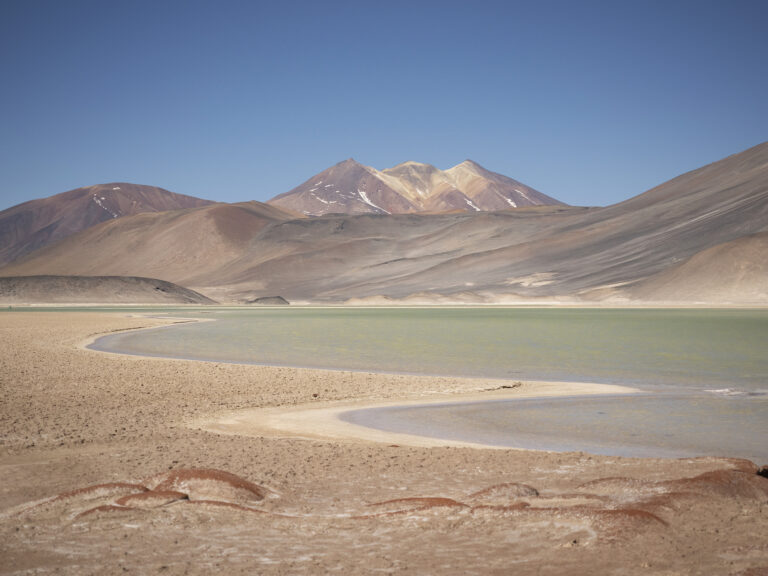
Capturing High Resolution Images of the Andean Altiplano with the OM-1
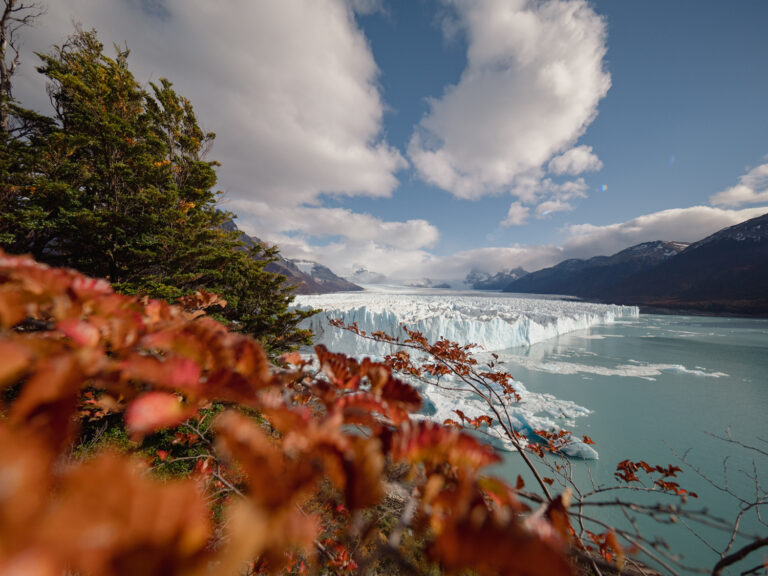
Behind the Lens – Visiting Perito Moreno Glacier, Patagonia
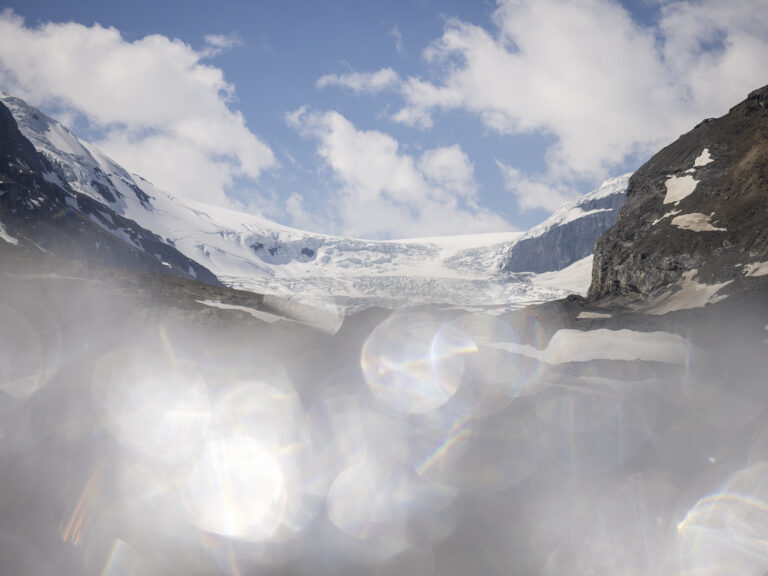
Columbia Icefields – Hiking on the Athabasca Glacier with IceWalks
Blog comments.
January 3, 2021 at 8:50 pm
Great post Lisa!. Good and helpful tips to help travel photographers go through this crisis in travel photography. I’m following you creative photography course and I’m really enjoying it. Keep up the good work!
January 11, 2021 at 11:27 am
Wow Lisa, this was so helpful, thanks for writing it! I am so excited to be diving into a career in travel photography and writing and learning from the best, of course 🙂
Leave a Comment Cancel Comment
Looking for something….

Work at Travelxp
We are building the world’s largest media-tech company.
Vision Statement: Travelxp was set up with the vision of creating one world with no boundaries . Therefore, the overarching aim of Travelxp remains to facilitate the removal of barriers to opportunities, exposure, learning, growth using travel as the all-encompassing, powerful medium. Here at Travelxp, we envision a world where travel is synonymous with exploration, cultural sensitivity, learning and the unity of the human race. Travel for us is the only medium to the end of human prosperity and growth.
What working with us looks like..
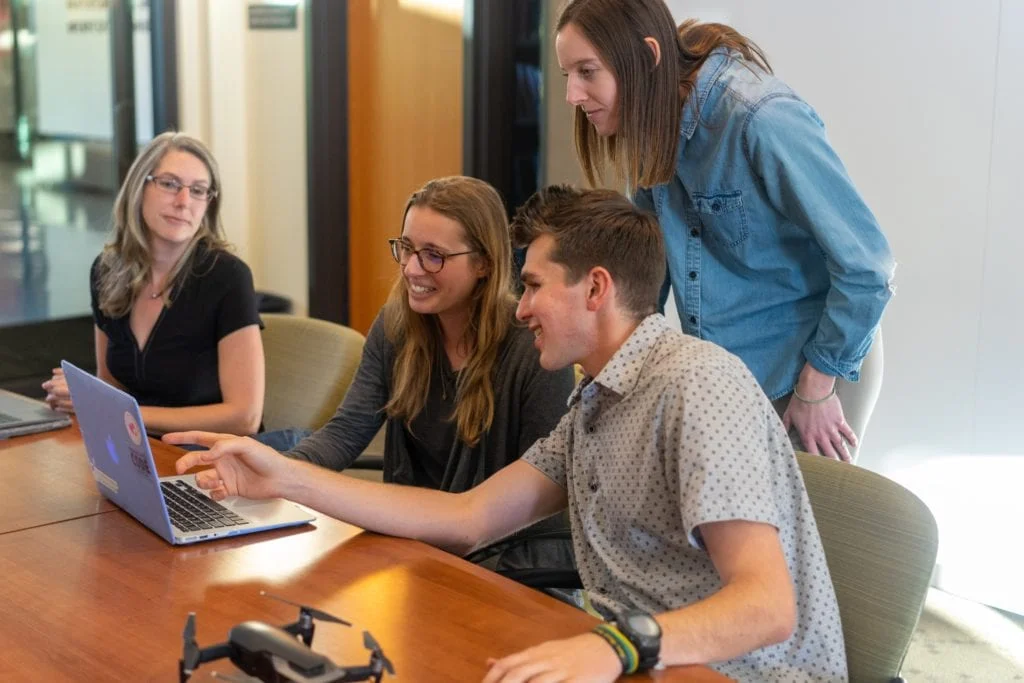
Inter-team projects
We believe that every great product is a result of collaboration of multiple elements. Inter-team projects give a great opportunity to learn collaborate & execute them a scale.
Work with the best

Youth leadership
As one of the world’s fastest growing media-tech brands, the constantly changing dynamics of the industry ensure that we always think on our toes and adapt quickly. We welcome ideas that are out-of-the box and infusion of youth talent plays a major role in getting the execution prompt and right!
Think you can change the way the world travels?
Full Name *
Contact No.*
Current Location *
Programs * Select Internship Program Sales Program Executive Trainee
Availability * Winter (Nov – Dec)
College /Institute *
Degree Pursuing *
Graduation Date *
SOP * (Max in 500 Words)
Upload CV *
Recent Posts
- Indiaekehsaas
- Episode 8: How To Charge More
Recent Comments
- tamoxifen evaluation of medication effectiveness on Episode 8: How To Charge More
- lisinopril 80 mg daily on Episode 8: How To Charge More
- what is cephalexin 500 mg used for on Episode 8: How To Charge More
- is pregabalin a narcotic on Episode 8: How To Charge More
- amoxicillin 400 mg/5 ml susp dosage for child on Episode 8: How To Charge More
- January 2021
- December 2020
- August 2020
- October 2019
- September 2019
- September 2018
- Business Broadcast
- Press Release
- The Designer Show
- Uncategorized
- Yoga For Beginners
- Entries feed
- Comments feed
- WordPress.org
- Reviews TV REVIEWS v1.11 HEADPHONES REVIEWS v1.7 MONITOR REVIEWS v2.0 SOUNDBAR REVIEWS v1.3 MOUSE REVIEWS v1.5 KEYBOARD REVIEWS v1.3.1 PRINTER REVIEWS v1.2 VACUUM REVIEWS v1.3 KEYBOARD SWITCH REVIEWS v1.0 AIR PURIFIER REVIEWS v1.0 DEHUMIDIFIER REVIEWS v1.0 MICROWAVE REVIEWS v1.0 BLENDER REVIEWS v1.0 TOASTER REVIEWS v1.0 ROUTER REVIEWS v0.8 PROJECTOR REVIEWS v0.9 SPEAKER REVIEWS v0.8 CAMERA REVIEWS v0.12.1 LAPTOP REVIEWS v0.8.2
- What's New COMPUTER Monitors, Mice, Keyboards, Printers, Routers, Keyboard Switches, and Laptops HOME ENTERTAINMENT TVs, Soundbars, and Projectors AUDIO Headphones and Speakers HOME Vacuums, Dehumidifiers, and Air Purifiers PHOTO & VIDEO Cameras KITCHEN Toasters, Blenders, and Microwaves REVIEW PIPELINE See upcoming reviews, cast your vote, and suggest products
- Newsletters
- Table of Contents
- Best Camera
- Best Full Frame
- Best Mid-Range
- Best Budget
- Best Point-And-Shoot
- Best Vlogging
Notable Mentions
Recent updates, all reviews, the 6 best travel cameras - summer 2024 reviews.

A good camera can be an indispensable travel companion, letting you capture your adventures abroad to share with friends and family. For many, the best digital camera for travel is the one you've already got in your pocket—your smartphone. If you want to step up your photography game, however, there are plenty of great cameras out there that won't take up too much space in your luggage. While it can be hard to narrow them down, it's important to consider things like portability, battery life, build quality, your own ergonomic preferences, and, of course, your budget.
We've bought over 105 cameras, and below, you'll find the best travel cameras we've tested. If you're specifically looking for a point-and-shoot camera, check out the best compact cameras for travel instead. Or, if you're interested in capturing beautiful landscapes on your travels, the best cameras for landscape photography might also be of interest. Travel vloggers can also look at our top vlogging picks .
Best Camera For Travel

The OM SYSTEM OM-5 is the best digital camera for travel that you can get. As part of the Micro Four Thirds (MFT) system, it offers a balanced mix of portability, ruggedness, and image quality. Though it isn't as heavy-duty as higher-end models like the OM SYSTEM OM-1 Mark II or the older Olympus OM-D E-M1 Mark III , it has a more compact body that makes it better for travel. Plus, it's compatible with a wide selection of portable MFT lenses that will keep the overall size of your kit down.
Beyond its relatively small size, the camera is weather-sealed and feels well-built overall. It has an excellent five-axis in-body image stabilization (IBIS) system, which can help you get steadier shots at slower shutter speeds or while recording vlogs. That said, the OM-5 doesn't have the longest battery life, so you might have to pick up a spare battery for long days on the go, but overall, this is an excellent travel camera for the price. If you want to save even more money, the older Olympus OM-D E-M5 Mark III is nearly identical and can be found for less if you buy used, though it uses an older processor and lacks some extra features like 'Live ND' mode.
See our review
Best Full Frame Camera For Travel

If image quality is your top priority, the Sony α7C II is one of the best cameras for travel photography you can buy. It's one of the few full-frame cameras on the market that boasts such a compact size. While it's still the largest option on this list, and full-frame lenses are typically larger, it's impressive how compact Sony made this camera while including features like IBIS and a fully articulated screen.
The real star here, of course, is the camera's high-resolution full-frame sensor, which has plenty of dynamic range and great noise handling in trickier lighting conditions. On top of that, the camera has a fantastic battery life and a sturdy, weather-sealed body. That said, its ergonomics leave a little to be desired, particularly when shooting through the tiny viewfinder. If you want to save some money, the original Sony α7C is practically a bargain now, though the new model is more well-rounded, with better video features and a higher-resolution sensor.
Best Mid-Range Camera For Travel

If you can do without IBIS and want something a bit more affordable, the Fujifilm X-T30 II is a great mid-range option. It uses an APS-C sensor and has a portable, lightweight body that's ideal for traveling. While it lacks more premium features like weather-sealing and advanced video specs, it's still a relatively sturdy camera, and its dedicated exposure dials give you more hands-on control over camera settings.
Aside from its portability, the X-T30 II uses a relatively high-resolution APS-C sensor that delivers excellent image quality straight out of the camera. Film simulation profiles make the camera a blast to shoot with and let you change up the look of your photos without having to do any post-processing. On top of that, the camera has a decent autofocus system and a relatively long-lasting battery, making it an excellent travel camera for the price. If you can stretch your budget, its successor, the Fujifilm X-T50 , offers better video features, IBIS, and a higher-resolution sensor, but it's also significantly more expensive.
Best Budget Camera For Travel

The Olympus OM-D E-M10 Mark IV is one of the best budget cameras we've tested for travel. Like the higher-end OM SYSTEM OM-5 above, it uses a Micro Four Thirds sensor, making for a remarkably portable camera kit with plenty of lightweight and affordable lens options. It's also a great choice for beginners, thanks to simple controls and easy-to-use creative shooting modes.
This is also one of the only cameras at this price point to feature IBIS, which can help capture handheld images at slower shutter speeds and comes in handy for stabilizing videos and vlogs. That said, this is still an entry-level model, so it doesn't have the greatest build quality. Its autofocus system can also be sluggish with faster subjects. If you'd prefer a camera with a more reliable autofocus system, the Canon EOS R50 is an amazing alternative and comes a bit cheaper. However, its lens options are more limited, and it's less portable overall.
Best Point-And-Shoot Camera For Travel

A premium point-and-shoot is the way to go if you need something compact but more capable than your smartphone camera. The Sony RX100 VII has been going strong for several iterations, and for good reason. This latest model uses a stacked 1-inch sensor, so image quality is very solid for its class. It's also one of the few cameras that's actually pocketable, so you can bring it with you wherever your travels take you, and its built-in lens has a fairly long zoom range that's great for travel snapshots of everything from landscapes to far-away subjects.
Be aware that compact cameras like this have a limited battery life, though you can always bring a spare battery or a portable battery pack to charge it on the go. The RICOH GR III is a great alternative if you want a more minimalist camera. It doesn't have a viewfinder, and its fixed focal length lens is less versatile than the zoom lens on the Sony. However, it has a larger APS-C sensor that delivers excellent image quality and is better suited to low-light situations. On the other hand, if you're looking for something cheaper, you can still find older generations of the RX100 on eBay and other used camera retailers.
Best Vlogging Camera For Travel

If you prefer to vlog about your travels rather than photograph them, try the Sony ZV-1. Like the Sony RX100 VII above, it uses a 1-inch type sensor, performing similarly when it comes to image quality and autofocus, but it has a different design, with no viewfinder and a shorter zoom range. On the flip side, it's one of the only compact cameras to feature a fully articulated screen that's ideal for recording yourself. Plus, it has a better built-in mic than most point-and-shoots, complete with a detachable windscreen to cut down on wind noise while recording.
If you prefer a wider field of view, consider getting the newer Sony ZV-1 II , which has a new wide-angle lens that's a good fit for walk-and-talk vlogs. The camera performs similarly otherwise, but Sony also removed optical stabilization from its lens. For that reason, and because of its price, the original ZV-1 is a better deal for most travel vloggers and one of the best video cameras for travel if you need something compact.
- Fujifilm X100VI: The Fujifilm X100VI is one of the best point-and-shoot cameras on the market, with a larger APS-C sensor that captures excellent images. However, it's less portable, more expensive, and a bit more niche than the Sony RX100 VII, with a fixed focal length that's less versatile for everyday travel photos. See our review
- Nikon Z f: The Nikon Z f is an excellent full-frame option for travel, particularly if you like vintage-style cameras. It has a retro-inspired and relatively portable design but isn't as compact as the Sony α7C II. See our review
- RICOH GR IIIx: Like the RICOH GR III, the RICOH GR IIIx is a great alternative to the Sony RX100 VII. It's nearly identical to the GR III but features a 40mm focal length lens instead of the wider 28mm focal length on the GR III. The Sony is still more versatile for most travelers thanks to its zoom lens, better autofocus, and 4k video capability. See our review
- Sony ZV-E1: The Sony ZV-E1 is a full-frame camera that's even more compact than the Sony α7C II. It's a great choice for high-quality travel videos, with a sensor optimized for low light. However, it lacks a viewfinder and is generally less versatile for photographers and hybrid shooters. See our review
Aug 29, 2024: We replaced the Fujifilm X100V with the Fujifilm X100VI as a Notable Mention and added a comparison to the Fujifilm X-T50 in our discussion of the Fujifilm X-T30 II.
Jul 04, 2024: We added the RICOH GR IIIx to the Notable Mentions as another option for those looking for a minimalist compact camera.
Jun 04, 2024: We brushed up some of the text in the article for clarity and reviewed the picks to ensure they're still current.
May 08, 2024: We reviewed the cameras included in the article, including their price and availability, to ensure the article is up to date and adequately meets user needs.
Apr 10, 2024: We've replaced the Sony α7C with the Sony α7C II because it's more widely available and offers some advantages for video work. We also removed the Sony ZV-1 from the Notable Mentions, making it the 'Best Vlogging Camera For Travel.' Finally, we added the Nikon Z f to the Notable Mentions.
Our recommendations above are what we think are currently the top travel cameras for most people, according to their needs. We factor in the price, feedback from our visitors, and availability (no cameras that are difficult to find or almost out of stock in the U.S.).
If you'd like to choose for yourself, here's the list of all of our camera reviews, ranked by their suitability for travel photography. Be careful not to get caught up in the details. There is no single perfect camera. Personal taste, preference, and shooting habits will matter more in your selection.
The leading authority in photography and camera gear.
Become a better photographer.
12.9 Million
Annual Readers
Newsletter Subscribers
Featured Photographers
Photography Guides & Gear Reviews

Travel Photography Tips, Ideas, Examples & Jobs
Have a passion for travel photography but not sure how to take it further? This post covers careers, what gear is best, and tips for improving!
Learn | Photography Guides | By Ashley Darrow
Shotkit may earn a commission on affiliate links. Learn more.
Travel photography is one of the most exciting styles of photography, but it can also be one of the most intimidating to get started with.
I’m at my most inspired as a photographer when I’m on the road.
Even when I’m not headed to an exciting new location, I’ve started to think about all of my photography from the standpoint of travel.
This guide is going to give you everything you need to know to get started with travel photography.
I’ll be covering everything from the basics, to the equipment you need, to 20 travel photography tips that will improve how you approach taking photos.
When you’re ready to hit the road, we’ll start our adventure with some travel photography 101.
Table of Contents
What Is Travel Photography?
Defining travel photography can be a little bit challenging as this is one of the most open and free categories of photography.
In general, travel photography involves documenting people, landscapes, and cultures anywhere in the world.
Your travel photography counts whether you have to hike for thousands of miles or you took a 10-minute bus ride from your home.
Travel photography can be done by career professionals working for major magazines like National Geographic or it can be done as part-time freelance work.
Many travel photographers make their money by taking contract work from tourism departments or brands looking for product photography shot on location.
Travel photographers often find themselves working in challenging conditions. There’s a good chance that you’re going to be snapping pics in low light conditions , rough weather, or even half a world away from the comfort of your own bed.
- Related: 77 useful travel tips for photographers
What Does Travel Photography Include?
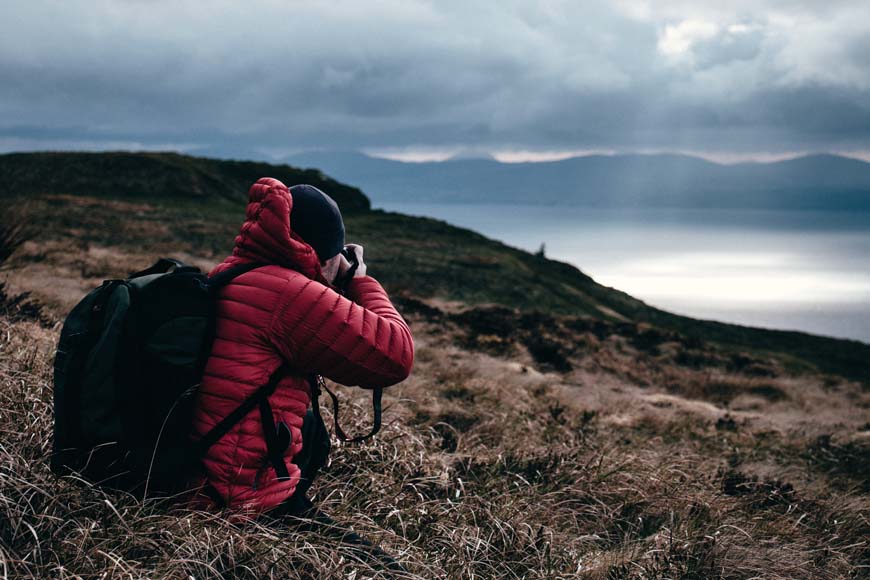
Image Credit: Sam Forson
Travel photography incorporates countless different styles.
Travel photographers often take landscape photographs, architectural photographs , as well as street photography. It’s also common to see food photography and documentary work being done by travel photographers.
As a travel photographer, your goal is to capture and express the story of a particular time and place. You’ll be giving people a taste of what’s happening in the moment while you’re in a particular location.
How Much Do Travel Photographers Make?
Travel photography is made up of a wide range of styles, but it’s also made up of a wide range of pay rates.
If you’re lucky enough to land a staff photography job with a major magazine, you could wind up with a six-figure salary. However, freelance travel photographers can make as little as around $18,000 a year.
Beginner travel photographers often make even less than that as they start to piece together their career.
Part of your pay as a travel photographer will come in the form of comped travel expenses. It’s pretty common for travel photographers to take a job with a tourism department that includes free transportation and lodging as part of their payment.
Is travel photography in demand?
Travel photography is in high demand.
How Much Do You REALLY Know About Photography?! 🤔
Test your photography knowledge with this quick quiz!
See how much you really know about photography...

Your answer:
Correct answer:
SHARE YOUR RESULTS
Your Answers
This demand is being driven by tourism departments, brands looking for more engaged lifestyle photography , and the rise of social media making travel photography a viable path for a content creator.
There are more people taking travel photos than ever before which means that you’re also going to have a lot more competition despite there being more job openings.
How Do I Become a Travel Photographer?
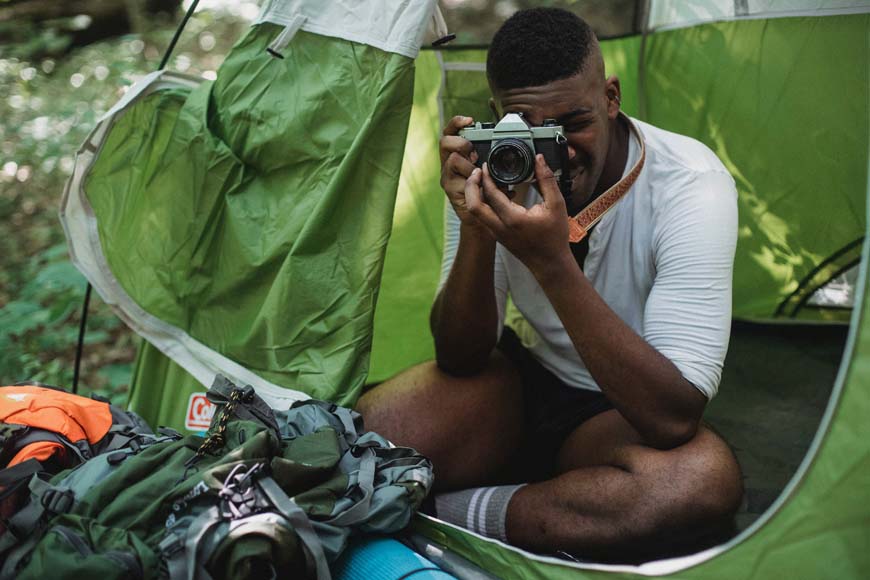
Image Credit: Kamaji Ogino
Becoming a travel photographer is pretty similar to how you would start up almost any photography career.
If you’re a total beginner, you want to start by mastering the craft of working behind the camera. This means learning how to stay in control of your exposure, frame captivating shots, and just get comfortable taking pictures wherever you go.
Here’s a basic outline of the steps you’ll take to start your travel photography career.
- Learn your photography basics
- Identify your travel photography niches
- Build your portfolio
- Grow a social media presence
- Begin reaching out to clients
- Publish your photography
- Grow your business by reaching out to bigger clients
- Continue to promote your work
- Have fun traveling!
I should note that plenty of travel photographers also crowdfund parts of their career.
Building a presence on social media sites like YouTube and connecting that to your crowdfunding platform of choice is a great way to bring in some additional money.
- Related: 10 Unique Ways to Photography Famous Landmarks
What Equipment is Needed for Travel Photography?
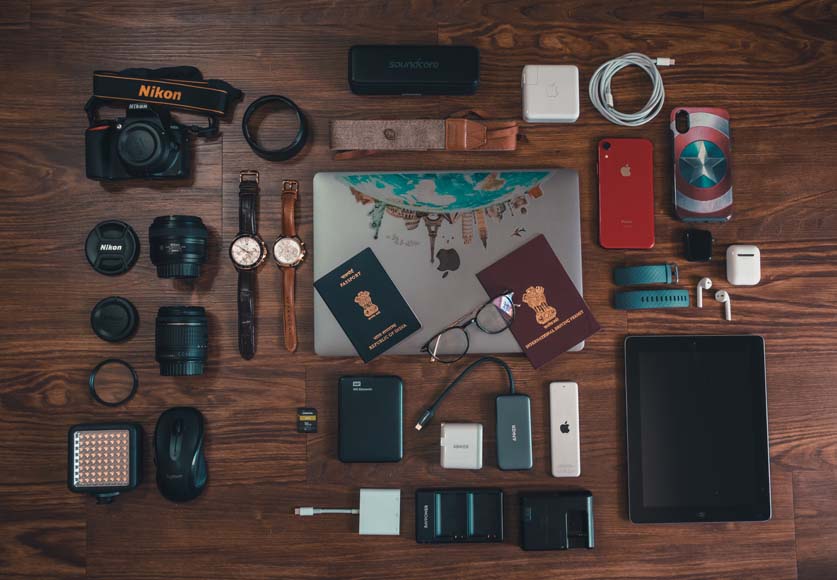
Image Credit: Hiren Lad
In all my years of photography, the one thing I’ve learned is that if there’s anything photographers love nearly as much as taking pictures, it’s talking about their gear.
Whether you see this equipment as the tools of your trade or the raw materials of your art, you’re going to need some equipment to get started with travel photography.
I’m going to cover the standard gear that most travel photographers will gravitate towards, but I’ll also be talking about different setups for film photographers and mobile photography.
I’m going to kick things off with the absolute must: a camera.
You’re not going to get very far in your career as a Travel Photographer without a camera. I’m being a little silly here, but it’s not just as simple as picking up any random mirrorless camera for travel blogging .
So, what camera is best for travel photography?
The absolute best cameras for travel photography are going to be, no surprises here, the latest mirrorless releases from the big-name brands like Sony, Camera, and Nikon.
Those cameras are packed full of the latest features and offer some of the best image quality.
You can also get amazing results, and save money, by picking up older cameras. My Sony a7s II is still my main camera body and my Canon 5D Classic, which was released way back in 2005, still takes pictures that get people asking me “How did you do that?”
You don’t need to spend a lot of money on your travel photography camera. A skilled photographer will be able to take amazing pictures using a point and shoot digital camera from the 90s. It’s craft that makes the photographer, not gear.
Travel photography can also be done with your smartphone. There are plenty of professional photographers out there primarily shooting on smartphones.
I also want to highlight film cameras. Film is the historic origin of our art form. Any film camera from a toy lomography camera to a professional large format camera can help us see our travels in a new way.
With all of that said, there are a few important features that you should look for in a travel photography camera.
- Weather sealed designs are much more important when you’re trekking through unknown territory than when you’re at home in the studio
- Your camera should also be ready for the road. Just like your car, you should take your camera in for a tune-up before a long trip
- Double-check for the specs that matter most to you. For me, that’s low-light performance and color science
Your camera is only half the equation which means we need to take a look at the lenses that will be going on this journey with you.
- Related: How to choose a camera and what is the best camera for travel photography?
I bet you’re wondering which lens is best for travel photography? You don’t need to worry, I’ll walk you through my top pics for a travel lens whether you’re shooting on a brand-new Sony mirrorless camera or you plan on taking a Canon 5D Classic on the road.
The first place you need to start is by asking yourself the most essential question in photography: What types of pictures do I plan on taking?
Here’s a quick breakdown of my recommendations for travel photography lenses based on my experience for a variety of photographic styles and budgets.
- Standard Zoom Lens —A standard zoom lens like the classic 24 to 70mm is the go-to travel lens for so many photographers I know. This lens easily handles street photographs, landscapes, and portraits. Pick this to make a flexible one-lens kit
- Wide Angle Zoom Lens —Wide angle zooms are better suited for photographers who know they’ll be shooting landscapes and architecture. If your wide angle zoom goes up to 35mm, then you can even get away with using that as your every-day lens
- Wide to Telephoto —These lenses have focal length ranges like 24 to 105mm. They are usually affordable alternatives to pro-level lenses that can still capture stunning images. You’ll want this lens if your main concerns are budget and stylistic flexibility
- Telephoto Zoom Lenses —These massive lenses typically top out at 200mm or 400mm focal lengths and are ideal for wildlife, bird, and sports photography. Their size, weight, and cost make them less flexible than other options, but these lenses are a must-have for photographers interested in the styles I just mentioned
- Pancakes and Nifty Fifties —Pancakes lenses have such a small profile they double as a body cap while the iconic Nifty Fifty is a budget 50mm with a huge fanbase. These lenses are perfect for photogs who want to stay ultralight or for anyone who wants an emergency backup lens.
- THAT lens —We all have a lens that, despite never getting much use, we just can’t seem to leave at home. Mine is the Helios 44-2. I take that lens on pretty much every trip even if it doesn’t get much use. Allow yourself a little room for that “fun” lens and you might be surprised by how much use it gets over time
I always have at least two lenses on me when I’m traveling—just in case.
I once dropped an expensive prime lens and watched it roll off the edge of a mountain in the desert. Luckily, I had a pancake lens in my bag so the photography trip wasn’t a total loss.
Ever since then, not only do I treat each of my lenses with the utmost care, but I also make sure but I’ve got backup options on hand.
- Related: How to choose a camera lens and best lenses for travel photography .
Travel Photography Bag
Just like with lenses and camera bodies, you have a few options to consider when it comes to picking the right travel bag for your next adventure.
Before I get too far into talking about camera bags, here’s the five things I always consider when I’m packing a bag for my next trip.
- Camera Bag Size —Size is one of the most important things to look at when shopping for a new travel photography bag. You want to find a bag that’s going to comfortably fit all of your equipment without causing too much strain on your back. Sling bags are great for days out in the city with light gear, but you should look for a comfortable backpack if you plan on covering some serious distance with your gear
- Pack Weight —Here’s a quick piece of advice I picked up from hiking. Your maximum pack weight should only ever be 20% of your total body weight. This means that if you weigh 200 lb, the heaviest your camera bag should ever be is 40 lb. The lighter, the better
- Features —There are some features that I consider an absolute must have in any of my travel camera bags including rugged build quality, plenty of padding and protection for my gear, and easy access to at least my main camera body and lens so I can shoot on the fly
- Style —You could buy the most technically perfect travel camera bag, but if you don’t actually like the way it looks you’re never going to take it on a trip. I definitely believe that form should be second to function when it comes to camera bags, but I’d also be lying if I said it wasn’t a huge factor in my camera bag purchasing decisions
- Your Gear —Your gear is actually going to dictate the type of bag that you’ll be looking for. A travel photographer shooting on a Leica Q2 can get away with a much smaller bag than a photographer shooting with a Canon 1DX
I also typically bring a packable backpack with me as part of my kit. This could be a really lightweight sling bag or something like the Lowepro Runabout.
This lets me leave the bulk of my gear at my hotel when I just want to have a quick trip around a new city taking pictures.
- Related: How to choose a camera bag
Tripods for Travel Photography
Tripods are an interesting—and somewhat contested—piece of the travel photography puzzle. I never used to take a tripod with me while traveling and that’s because most of my photography was shot street style which means lightweight and handheld.
However, the more I get into film photography and more interesting exposures, the more I find myself relying on my travel tripod.
My absolute number one pick for an adventure tripod would have to be the Peak Design Travel Tripod . It’s fairly lightweight, intelligently designed, and packs down small enough to fit in most of my bags.
Depending on the type of photography you’re looking to capture, you can also use tripods like a gorilla pod or even just take the tripod you have—even though it might be a little larger and heavier than would be ideal for travel.
This roundup of the 7 best travel tripods is a great place to get started if you’re shopping for something designed for the road.
Do I Need a Tripod for Travel Photography?
I’m going to dig into this mild controversy for just a moment. The question of whether or not you need a travel tripod to begin with is the source of some debate for photographers.
Honestly, the answer is maybe. It really depends on the type of pictures that you’re hoping to capture and your personal style as a photographer.
If you like to run and gun while capturing slices of life on busy city streets, you probably don’t need to bring a tripod with you.
Styles of photography that are highly mobile and rely on fast composition changes typically ditch the added stabilization that a tripod brings because it just slows them down too much.
Tripods might also not work for certain events and organizations. Trying to set up a tripod during a rock concert is a recipe for disaster and some museums won’t even let you bring in a tripod unless you pay their professional photography fees.
Then again, there are a few types of photography that absolutely need a tripod in order to work. Long exposures, shooting in dimly lit situations, and using some telephoto zoom lenses pretty much mandate shooting on a tripod.
The long and short of this is that owning a tripod and learning how to use it will make you a better photographer, but it’s not quite a mandatory piece of your travel photography kit.
The Camera Accessories I Always Forget for Travel Photography!
There are so many small accessories that are vital for digital photography that I find myself constantly forgetting. Far from being little odds and ends, these are essential parts of my kit that I’ve started to just leave in my travel bag so I never have to worry about packing them.
I’m talking about SD cards , microfiber cloths, sensor cleaning kits, and all those other little things that you might not miss until you’re in the field and you’ve got a speck of sand on your sensor ruining your shots.
I’ve started making a checklist that contains all these little items before I pack out. There’s nothing more defeating than being in some beautiful destination and realizing you only have enough space on your memory card for a few dozen more shots.
This is the checklist that I use for your average trip. Feel free to adjust things based on the gear that you use.
- Sensor cleaning swab x 2
- Lens cleaning Spray
- Microfiber cloth
- Spare camera batteries for each camera
- Memory cards—one in each camera, extra in the bag
- External SSD if I’ll need to backup files while traveling
- iPad for editing, emailing, and posting pics on socials
- Camera strap
- Camera body cap and rear lens cap
- Remote shutter release
- Chargers and cables
Lighting for Travel Photography
Lighting is a bit of an interesting topic when it comes to travel photography. We don’t often associate this incredibly mobile genre of photography with the piece of equipment that defines studio work, but there’s some great reasons to take some lights with you on your next trip.
Photographers like Briscoe Park are doing incredible work mixing bold, almost giallo, lighting styles with travel photography. There’s also a wealth of photographers using the dark nights of remote locations as canvases for their light paintings.
I started taking a few small lights with me when I hit the road and it’s definitely pushing my abilities behind the camera.
Lights like the Aputure MC and MC Pro are great for adding lights to portraits, throwing splashes of color into images, or creating other-worldly scenes. The Infinibar or MT Pro, also from Aputure, are solid choices for light painting .
Even something small like the Lume Cube can help gain control over lighting while away from the studio. Just don’t try to haul around your old tungsten lights on your next trip!
Mobile Travel Photography Gear
Before you start thinking travel photography requires a mountain of expensive equipment, you might be reading this article on the only device you need to get started with travel photography.
That’s right, smartphone cameras have come a long way and they are perfectly capable of being your main camera body for traveling adventure photography .
Even though your smartphone is essentially a pocket camera that can surf the internet and make phone calls, you still might want to add some extra gear to make the most out of being a mobile travel photographer.
My biggest recommendation would be to pick up a Moment smartphone case and a few Moment lenses.
These lenses will dramatically change your composition and help make your images look a bit more professional and a bit less like a quick shot on a smartphone.
A lightweight Gorillapod, a photo editing app like Lightroom mobile, and a power bank to keep you charged are a few must-haves.
This might sound a little unconventional, but my smartphone is one of the cameras I use the most. It’s lightweight, can take high quality pictures, and it can be a great budget alternative to expensive cameras because you probably already own one.
I almost never leave the house without throwing one or two Moment lenses in my bag. This is true whether I’m going on a 10-minute walk to the store or I’m about to hop on a 10-hour flight.
Travel Film Photography Gear
Is there any sound more relaxing than the shutter of a film camera when you’re deep in the woods or on top of a mountain ridgeline?
I don’t think so and that’s one of the reasons why I tend to travel with film photography equipment.
Film photography is almost a completely different animal than digital photography. You have to be much more engaged with your subject, composition, and exposure since you only have a few frames before your roll is spent.
Here’s a quick list of the film photography gear that I travel with. Just as a quick note, I’m leaving out things like tripods and camera bags that overlap with digital photography.
- Gallon zip-top bag to store film
- Permanent marker to jot notes on the side of a film canister
- Light meter
- Film (I always try to bring one more roll than I think I’ll need—just in case)
Read our guide to film photography for more tips.
20 Tips to Help You Improve Your Travel Photography
Want to improve your travel photography? I’ve put together 20 travel photography tips to help you up your game the next time you take your camera on vacation.
These tips are going to cover everything from advice for total beginners to some really interesting things that caught me by surprise while I’ve been on tour with my camera.
Tip 1—Get Comfortable With Your Gear Before You Travel
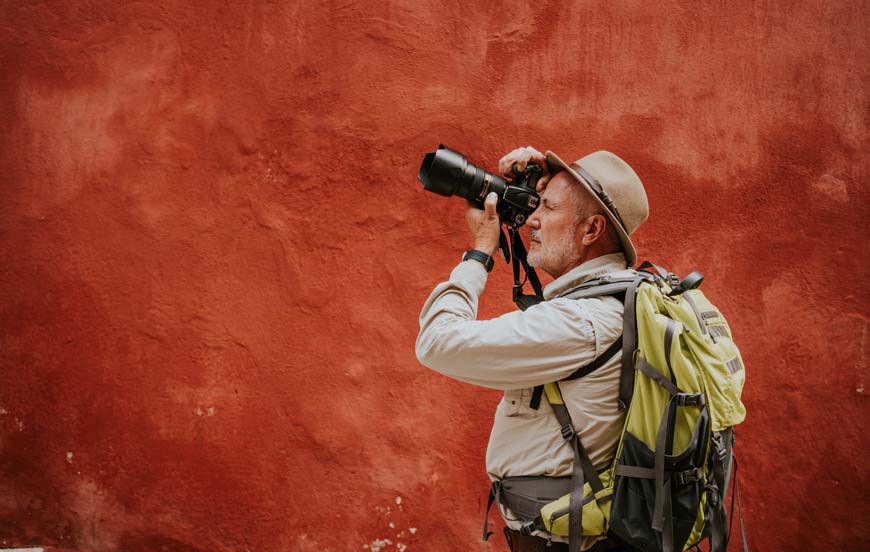
Image Credit: Amar Preciado
This is my number one tip for travel photography because it applies to experienced photographers as well as beginners. Before you head out on your big trip, take some time to get comfortable with your equipment.
This means packing your camera bag just like you’re going to for your travel photography trip and wearing it around your home city or just walking around your neighborhood.
There’s nothing worse than being hundreds, or thousands, of miles from home only to find out that you actually don’t like that brand new camera bag you bought.
Giving all of your gear a comfortable trial run ahead of time ensures that you don’t run into any sudden surprises while you’re traveling.
I’ve started doing this with all of my travel photography gear and it’s hard to express just how much it’s helped me. Most of the time I’m just adjusting my backpack to make sure it’s got a comfortable fit for a long day of hiking, but there have also been times where I realized that piece of my equipment just wasn’t right for me.
This will also help make things easier when you’re out there taking pictures.
It can be a little stressful to try and line up the right composition in a busy downtown neighborhood of a foreign city. Knowing your gear inside and out will give you a huge confidence boost when you need it the most.
Tip 2—Set Your Travel Photography Intentions
This might seem like a silly question to ask, but why do you want to do travel photography?
Setting some intentions and being aware of your goals ahead of time is going to help improve your career as a photographer.
If you need some inspiration for your goals, here’s a few that I’ve used in the past.
- Have at least 5 new pictures that I can turn into prints once I’m home
- Spend two days on location, day one focuses on lifestyle photography while day two is all about landscapes
- Get out of my comfort zone and network with other travel photographers shooting the same location
Remember that goals are a lot like onions. They have layers.
Your ultimate goal might be to become a world famous travel photographer with National Geographic calling you every day, but you’ve got to start somewhere.
Let’s say that your goal is to start getting freelance travel photography contracts with tourism departments. You can start from scratch by pretending that you’re on contract to take photos of a particular location.
This will help you with your future goals as well as allow you to build your portfolio in the now.
Tip 3—Always Bring (Your) Camera
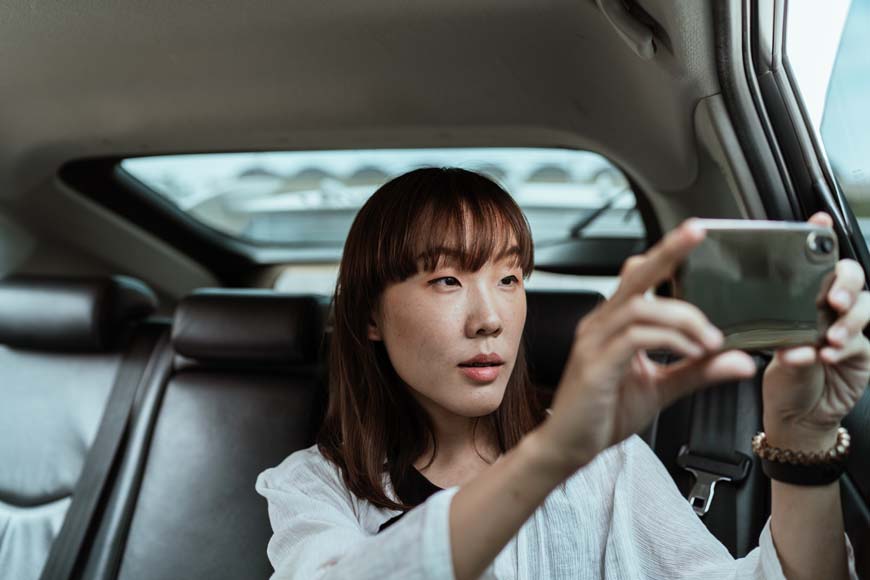
Image Credit: Ketut Subiyanto
Everything starts with the ABCs and for travel photographers this means to Always Bring (your) Camera and always be taking pictures.
You really never know when the right moment is going to strike for your photography. There have been countless moments where I wish I would have had a camera on me to capture a moment that was either beautiful or could have even been historic.
Whether you’re carrying your main camera body, a pocket camera, or even your smartphone, you should always have a camera on you when you’re traveling. Be ready to start snapping pics at a moment’s notice if you spot something that catches your eye.
Worst case scenario, you’ve got another few hundred pictures to sort through when you get home. Best case scenario, you’ve caught the once-in-a-lifetime shot that you might have otherwise missed.
Tip 4—Be Patient with Your Shots
Here’s something that’s happened to me nearly every single time I’ve gone on a travel photography trip.
I’ll be at a historic ruin or in a national park with the perfect shot framed only for there to be dozens of other tourists cluttering up my shot.
When I first started with photography, I didn’t have enough patience just to wait it out. I thought that I would have to spend hours standing at a particular spot waiting for people to disperse.
As it turns out, the longest I’ve really ever had to wait for a shot to clear up has been about a half hour. If you’ve got someone to talk to or a book to read, that’s no time at all.
Don’t pass up on the shots that you want to capture just because there’s something cluttering your frame. Patients will reward photographers every single time.
Pro travel photography tip: Using an ND filter on your camera can let you lower your shutter speed which will cause fast-moving cars and people to “vanish” from your shots!
Tip 5—Learn How to Photograph People
This travel photography tip can be one of the most challenging to incorporate. Getting comfortable cold approaching strangers takes a lot of social energy.
I know extroverted photographers that have a dozen model release forms printed and ready to go in their backpack. They have no problem chatting up strangers, but it took me some time to build up that confidence.
Here’s a quick template that you can use for approaching strangers for portraits.
Be cheerful and open about being a photographer. You can say something like “I’m a photographer taking portraits today in [Location] and I’d love to take your picture.”
If you’re on a freelance contract or working for a client, feel free to name drop them to give yourself some added credibility.
After snapping their pic, I like to give people my business card, email, or Instagram handle so they can contact me later if they’d like a copy of their photo.
If they say no photos, that’s just business.
It also really helps if you can speak just a little bit of the local language. You’ll be shocked how much more accommodating people can be if you can handle a few lines of the local tongue.
Tip 6—Study Local Laws and Customs
Photography laws and customs are different the world over. As a travel photographer, you’re going to need to familiarize yourself with local laws and customs—especially when you’re traveling abroad.
Remember that the letter of the law and the local customs might not necessarily be a one-to-one match.
I’m based in the United States and here it’s perfectly legal to take pictures of strangers as long as you’re in a public location. However, social customs dictate that it’s considered rude to take someone’s picture without asking their permission first.
When in doubt, always default to asking permission first. This means asking someone’s permission before taking their portrait or asking permission before taking pictures at a historic site or museum.
Tip 7—Get in Frame
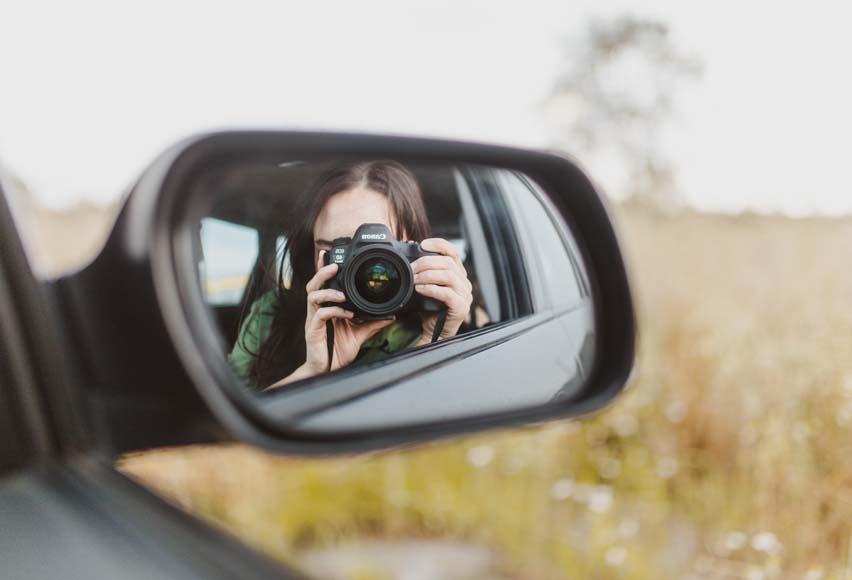
Image Credit: Dominika Roseclay
This is something I’m still working on becoming more comfortable with.
When I’m in the studio, I’ve got no problem hopping in front of the lens and doing some self-portraiture. However, once I’m out in the field I’m a little bit reluctant to stand in as my own model.
Travel photography is about telling your story. This means that you’re going to need to get in frame for some of your photographs.
Even if it’s just a few shots of you setting up, traveling to your destination, or getting dinner after a long day of shooting, people want to see the photographer behind the camera.
If you’re traveling with other photographers, why not consider making this a game? Challenge each other to see who can take the most interesting photos of your fellow photographers.
You can even take some quick selfies on location to contrast your professional photography. This will make your self-portraiture a little more intimate and warm while your travel photos show off your full talent.
Tip 8—Scout Travel Photography Locations with Your Smartphone
A great way to dramatically improve your travel photography is to scout your locations ahead of time. Before you haul all of your gear on a quest for the perfect photo, go out there with just a day pack and walk around soaking up the scenery.
Location scouting gives you a strong understanding of what speaks to you as a photographer about this location before you even start pressing the shutter button.
I recommend carrying your smartphone or a point-and-shoot camera when you’re out scouting locations.
This lets you take some test shots of a travel location before bringing all your gear out.
Tip 9—How to Always Pack the Right Lenses
I used to be so worried about not bringing the right lenses on a trip, but it’s been years since I’ve felt like I picked the wrong lens for the job.
Part of this is knowing your lenses inside and out. You should learn the basics of your lenses like aperture, how their focal length compresses an image, and which focal lengths are ideal for different styles of photography.
Lenses like the Sony FE 24-70mm f/2.8 make a great choice for travel. The focal length options on that lens easily handle majestic landscape panoramas and street photography portraiture.
I also recommend taking at least two lenses with you for most travel photography trips. I’ll take one primary lens with me that I plan on doing most of my shooting with and a secondary lens for those “just in case” moments.
Tip 10—Staying Safe While Traveling with Camera Gear
Being a tourist always carries some risk when it comes to crime. Being a tourist that happens to be carrying $3,000 in photography equipment carries a little bit more risk.
Here’s a few tips that I stick with when it comes to staying safe while shooting with expensive camera equipment.
If you can, try to do your travel photography with a group. Even if you have one other person traveling with you, that company is usually more than enough to deter most would-be thieves.
This might seem a little obvious, but you always want to keep your gear in sight. Unless I know I’m alone in the wilderness, my camera bag is never further than an arm’s reach away.
I’ve got a tip for you that I don’t see a lot of people talking about when it comes to traveling safely with your camera equipment. I like to stay discreet when I’m traveling with my camera gear.
This means I leave the branded Sony strap at home and opt for a much more neutral Peak Design strap . I also throw a velcro patch over things like the LowePro logo on my backpack that might otherwise announce that there’s some expensive camera equipment in there.
If you stay smart and aware of your surroundings, your odds of having an unfortunate encounter while carrying camera equipment will be greatly reduced.
Tip 11—Shoot Some Short Format Video
We’re all photographers here. This means I can be a little honest with you about shooting short form video.
It might not be your main stay, but social media platforms are putting a lot of emphasis on TikTok style videos. If you can incorporate a little short form videography into your travel photography routine, you’ll have that much better performance online.
There are countless ways that you can build short form video production into your photography routine. You could record a 60 second video demonstrating your setup for the shot or even just an interesting voice over on top of a still image.
Shooting short videos can also be fun. Building this into your photography routine is a great way to improve your skill set while you’re also increasing your social media following.
Tip 12—Find Your Voice by Getting Lost
Some of the best travel photography stories happen because you get lost. Getting turned around is a great way to change your perspective on things and improve you or travel photography.
This is easily one of the most underrated travel photography tips. Best of all, you can do this from the comfort of your hometown.
Try getting lost on purpose by walking through a neighborhood you don’t usually go to or checking out a city that you might have otherwise overlooked.
While all the other travel photographers are gathered at the tourist traps we’ve all seen a thousand times on Instagram, you’ll be exploring something new while catching refreshing pictures of your travels.
Tip 13—How to Fly With Film
If you plan on doing some film photography while you’re traveling, you’re going to need to know how to transport your film while traversing through airports safely.
The x-rays used in airport security scanners can damage undeveloped photographic film. The more x-rays undeveloped film is exposed to, the more haze and distortion starts to pop up on the final image.
Film with an ISO 800 and above can be damaged by any airport X-ray machine. Expired and experimental films can also be damaged by x-ray equipment.
Some airports now use more powerful CT scanners. These are often used for checked baggage, but they can also be used for carry-on as well.
CT scanners put out enough x-ray radiation to damage film of any ISO. You should always bring your film with your carry-on luggage in its own zip-top bag.
When you’re traveling through security at an airport, you can ask the security personnel for a hand examination of your photographic film. In my experience, they almost always say yes no matter how busy the airport is.
However, it is at the discretion of airport security and I have had them turn down a hand examination of my film. One trip through an X-ray scanner won’t damage your film, but multiple trips will.
This is why I recommend buying film on location if possible. You can also have film mailed to your hotel or to a friend’s address who lives near where you’re traveling.
Tip 14—Become a Traveler at Home
Traveling is expensive and it’s not always available for us. However, this doesn’t mean that you have to stop your travel photography plans.
If you’re looking for the true zero-budget way of starting a travel photography career, you have to start in your home city.
While this might not seem exciting at first, keep in mind that the city that you live in is an exotic travel destination for someone else.
Try using all of the travel photography tips and tricks I’ve talked about in this article while taking pictures of your home city. Even if you live in a sleepy little town, there are compelling stories that you can tell by documenting the life and history of the place you live.
Tip 15—How to Find Travel Photography Inspiration
No matter what style of photography you’re in, it’s easy to get stuck in a rut. What should you do if you’re running out of inspiration before your next big travel photography trip?
Here are five quick ways I stay inspired and motivated as a photographer.
- Start following more photographers on social media to see what other people are doing
- Research historic photographers and get inspired by how they were shooting when our medium was still new
- Check out international photographers to see how people are shooting across the world
- Get experimental by looking into the weirder side of photography with things like film soup or databending
- When I’m heading to a new location, I like to look at the history, upcoming events, and what photographers are shooting for that local
Tip 16—Turn Regular Trips into Travel Photography Trips
If you’ve always got your camera with you, and you’re always shooting, every trip you go on is a travel photography trip.
A great way to stay active as a travel photographer who has yet to break into the full-time business is to transform every trip you go on into an opportunity for travel photography.
Whether you’re heading across town for a family dinner or going on a work trip, you’ve got an opportunity to do some trouble photography.
Not everything has to be a grand adventure. You could use that trip across town as an excuse to work on catching shots of yourself in transit, for example.
Tip 17—Becoming a Better Photographer
Every photographer has an area that they can improve on. Whether you’ve always wanted to be one of those photographers who only ever shoots on full manual mode or you’ve been hoping to add sports photography to your travel routine, now’s the time to start working on those skills.
Skills building exercises can be a great activity during your travel photography downtime. You’re not always going to be on the road to an exotic destination and that time in between trips is vital to your success.
Even if you’ve been a professional photographer for decades, there’s still countless things about this art form that you can learn.
Tip 18—Get Your Photos Seen
Now that you’ve got a portfolio of travel photography images, how do you get people to see them?
As with most freelancing gigs, the name of the game is networking. Here’s a few tips for getting your pics in front of more eyes.
- Be more consistent with social media by posting regularly and using hashtags strategically
- Enter into photography competitions
- Ask local shops if you can display your work
- Get your photos published
- Reach out to travel agencies, tourism boards, and parks departments for freelance work or partnerships
- Network with other photographers
As the old saying goes: It’s not what you know, it’s who you know.
Tip 19— Travel Photographer Tips for The Business Side of Things
Making it as a working travel photographer has gotten harder in recent years, but it’s not out of reach. Here’s a few business tips to help you stay on top of your budding photography career.
Always try reaching out to new clients. Keep in mind that bigger clients are harder to land, but there are plenty of smaller travel destinations that are ideal for a beginner photographer.
You should create a budget for your travel photography work. If you’re just starting out, you don’t need a fancy app. A simple spreadsheet is more than enough for you to stay on top of your money.
You can also try becoming a content creator while you’re working on landing clients. Building up a social media following and generating some income through a site like Patreon can help you stay on the road longer.
Tip 20—How to Tell Your Travel Photography Story

Image Credit: Ena Marinkovic
You’ve reached the end of my travel photography tips. The last tip, and the most important one, that I’m going to give you is some advice on how you can tell your story.
Travel photography is all about storytelling. This means documenting your journey, engaging your audience, and finding your voice.
Taking captivating pictures without context isn’t enough. Your travel photography needs to speak to people on a deeper level and communicate something yet untold about the experiences behind your journeys.
It’s going to take time to figure out how you want to represent your adventures. The best thing you can do is get started today.
Even if you’re just taking travel photos a few blocks from your home, you’ll be breaking the ice and taking those important steps in finding your voice as a storyteller.
What is the purpose of travel photography?
The purpose of travel photography is to share your journey with the world. Travel photographers help to tell the story of not only their adventures, but also the people and places they encounter whether they are traveling around the world or within a few miles of where they grew up.
Is travel photography a good career?
Travel photography can be an amazing career that is rewarding and potentially very lucrative. It can be challenging to get started, but there are countless photographers who do travel photography as both their main job as well as a side gig.
What is the single best lens for travel photography?
The single best lens for travel photography is the wide angle to telephoto zoom like the Sony FE 24-105mm f/4 G OSS Lens. This lens allows you to capture everything from sweeping landscape panoramas to sports and wildlife photography .
Is travel photography a job?
Travel photography can absolutely be a job. You can make money as a travel photographer by freelancing for clients, photographing destination weddings , or working as a photojournalist.
Is GoPro good for travel photography?
A GoPro can be great for travel photography especially if you’re interested in capturing video and using stills from that footage for your photography.
Even though a GoPro is a good choice for travel photography, you’re probably going to be better served by a dedicated camera if your main goal is photo rather than video.
Final Words
I hope this guide gives you everything you need to hit the ground running with travel photography. If you’re an experienced travel photographer, I hope you’ve picked up a few new tricks that can help improve your next adventure.
I’ve tried to cover travel photography from nose to tail in this blog, but I’m sure I left a few things out.
I want to hear your travel photography tips, tricks, and experiences in the comments. If you like this article, make sure to check out my other photography blogs .

Check out these 8 essential tools to help you succeed as a professional photographer.
Includes limited-time discounts.

Ashley is a photographer, writer, and film critic. When Ashley’s not writing essays on photography, cinema, and theory, he’s out taking pictures with retro film cameras.
Unlock Your Creative Potential in San Miguel de Allende! Calling all shutterbugs, aspiring photographers, and adventure seekers! Join us for an unforgettable photography workshop in the vibrant heart of Mexico’s cultural gem, San Miguel de Allende. Immerse yourself in the enchanting streets, colorful markets, and breathtaking landscapes of this UNESCO World Heritage city as you hone your photography skills under the guidance of seasoned professionals. Whether you’re an amateur photographer looking to capture stunning images, a photography enthusiast eager to refine your technique, or a traveler yearning for a truly immersive cultural experience, this workshop is tailor-made for you. Discover hidden gems, uncover unique perspectives, and unleash your creativity against the backdrop of San Miguel’s rich history and vibrant culture. From sunrise strolls through cobblestone streets to golden hour shoots overlooking panoramic vistas, every moment promises inspiration and discovery. Don’t miss this opportunity to elevate your photography skills while immersing yourself in the beauty and charm of San Miguel de Allende. Secure your spot today and embark on a journey that will not only transform your photography but also leave you with unforgettable memories to cherish for a lifetime.
https://www.shewanders.com/creative-courses/sma
Keep Sharing more impressive blogs.
Leave a Comment Cancel Reply
👋 WELCOME TO SHOTKIT!

🔥 Popular NOW:

Unlock the EXACT blueprint to capture breathtaking iPhone photos!

Mobile Navigation

See your career take off
Other employment opportunities.
www.hudsongroup.com/careers
For more info - foodtravelexperts.com and to apply hrjobcenter.com/sspcareers
Did you receive STAR Customer Service at St. Pete-Clearwater International Airport (PIE)?
How was your airport experience? We want your feedback! Did you receive STAR customer service? Click here to Share Your Story . Thank you for visiting PIE!
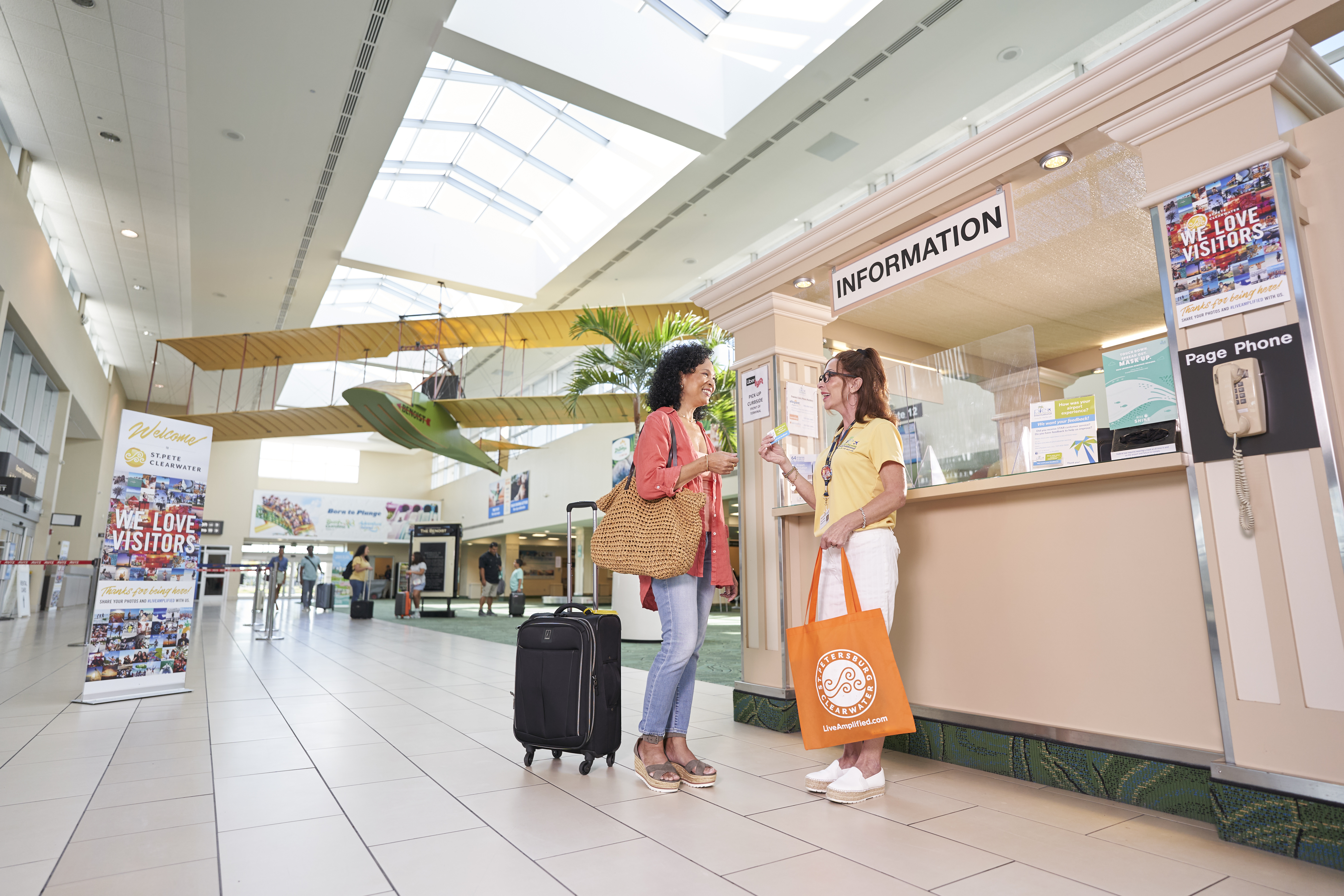
- Quick Facts
- Sights & Attractions
- Tsarskoe Selo
- Oranienbaum
- Foreign St. Petersburg
- Restaurants & Bars
- Accommodation Guide
- St. Petersburg Hotels
- Serviced Apartments
- Bed and Breakfasts
- Private & Group Transfers
- Airport Transfers
- Concierge Service
- Russian Visa Guide
- Request Visa Support
- Walking Tours
- River Entertainment
- Public Transportation
- Travel Cards
- Essential Shopping Selection
- Business Directory
- Photo Gallery
- Video Gallery
- 360° Panoramas
- Moscow Hotels
- Moscow.Info
- Partnership
If you would like to work with Saint-Petersburg.com, we are always interested to hear from you, particularly if you are interested in writing about St. Petersburg, Moscow, or elsewhere in Russia for inbound travelers. Send your CV and a sample of your work to mail@saint-petersburg.com .
Saint Petersburg.com is currently recruiting for the following positions:
Travel Sales and Customer Support Representative
Job obligations will include: providing telephone assistance to English-speaking customers traveling to Russia, corresponding with private and corporate customers, interaction with partner companies regarding travel sales, and more.
A successful candidate should meet the following requirements:
Previous experience in travel is a plus.
English-language copywriter
Job obligations will include: research, producing content to deadlines, copy editing, and search engine optimization.
Previous experience in content writing or travel writing is a plus.
Please supply samples of published work along with your resume.
Advertising Sales Manager.
Job obligations will include: attracting new clients, supervising contracts, providing customer support, account management, and more.
Previous experience in sales is essential.
Competitive salary is offered (to be determined according applicants' qualifications, prior experience and the result of interview)
Please send CV/resume to mail@saint-petersburg.com or call +7 (812) 380-2478 (Mon-Fri 15:00-20:00) and ask Dmitry to set an interview.
We can help you make the right choice from hundreds of St. Petersburg hotels and hostels.
Live like a local in self-catering apartments at convenient locations in St. Petersburg.
Comprehensive solutions for those who relocate to St. Petersburg to live, work or study.
Maximize your time in St. Petersburg with tours expertly tailored to your interests.
Get around in comfort with a chauffeured car or van to suit your budget and requirements.
Book a comfortable, well-maintained bus or a van with professional driver for your group.
Navigate St. Petersburg’s dining scene and find restaurants to remember.
Need tickets for the Mariinsky, the Hermitage, a football game or any event? We can help.
Get our help and advice choosing services and options to plan a prefect train journey.
Let our meeting and events experts help you organize a superb event in St. Petersburg.
We can find you a suitable interpreter for your negotiations, research or other needs.
Get translations for all purposes from recommended professional translators.

IMAGES
VIDEO
COMMENTS
Though hotel chains say they'll continue to operate normally, travelers could see disruptions as 1,100 employees walked off the job. Here's what to know. By Derek M. Norman Nearly 1,100 front ...
Man Asleep In Car In Travel Lane In Spring Valley, Wakes Up, Crashes Into Cars: Police Aman who was allegedly asleep behind the wheel of his car on a roadway in the Hudson Valley woke up when police arrived, crashed into numerous vehicles, and attempted to flee, injuring several people. A Yonkers man is in the hospital for evaluation after ...
Extensive travel in the US and abroad is an essential part of the job. Key Responsibilities: · Work with director and/or director of photography to determine all aspects of shots · Provide practical and creative input into scene set-up and filming · Transport, assemble and position production gear, including lighting, cameras, mics, etc.
19,121 Travel Camera jobs available on Indeed.com. Apply to Content Producer, Personal Assistant, Solar Technician and more!
849 Traveling Camera jobs available on Indeed.com. Apply to Auto Appraiser, Sales Representative, Videographer and more!
Firstly, a few tips for getting a travel photography job -. Create an online portfolio/website of your work. Learn photography and develop a style that's uniquely yours (read more here on how to stand out as a photographer) Don't undersell yourself or your photography and be confident in your ability. Find a niche or specialty.
163 Travel Camera Crew jobs available on Indeed.com. Apply to Technician, Surveillance Operator, Camera Operator and more!
The Traveling Security Technician is responsible for the installing, service, testing and inspection of a wide range of access control and IP Camera products… Posted Posted 30+ days ago · More... View all Unlimited Technology jobs in Las Vegas, NV - Las Vegas jobs - Security Specialist jobs in Las Vegas, NV
Travel Camera Technician jobs. Sort by: relevance - date. 700+ jobs. Low Voltage Technician. Per Mar Security Services 2.8. Minocqua, WI 54548. $18 - $35 an hour. Full-time. Easily apply. Must be able to travel, as needed.
Mighty Media Studios. Hybrid work in Bellevue, WA 98007. Typically responds within 1 day. $95,000 - $125,000 a year. Full-time. Weekends as needed + 2. Easily apply. This position requires flexibility to work remotely and on-site in the Greater Seattle Area, accommodating varying schedules, including weekends and travel, as…. Active 23 days ago.
6 Top Careers in Travel Photography. By Rosana Beechum. Travel photography offers a wide range of potential career options, where you can head off for countless worldwide adventures around the world. Whether you want to capture photos of happy families at resorts or onboard cruise ships or follow a path as a photojournalist, there are several ...
Looking for Filming Travel Camera Jobs near you? Discover 34 job openings and easily apply with just one click. Don't miss your next opportunity.
As of 2024, Sony's top cameras are the A1, A7iv, A7Siii, A7Rv and the A9ii. Now while the A9ii, A7Rv and A1 are absolute beasts of cameras, the truth is you most likely don't need all the features they have. We currently own the A7iv and A7Rv, and for professional travel photography, they are the best on the market.
Travel Jobs that Require Little to No Prior Experience. 1. Blogger. Whether you want to blog about your travel experiences while on the road or find a specific online niche, blogging is a great way to fund your travels, if you play your cards right. It might not be very lucrative at the beginning, while you're still building your audience ...
1. Sony a7C II. The original a7C was an excellent travel photography camera in its own right, thanks to the full-frame sensor and compact body - but the Sony a7C II, which debuted in the fall of 2023, is even better than its predecessor. Sony's latest full-frame offering is an all-around great camera, but travel photographers in particular ...
Travel photography could be a career option for many aspiring photographers and it promises adventure, travel and independence. Apart from essential photography skills, travel photography jobs require additional soft and hard skills to succeed. If you are looking for a travel photography job, consider developing these competencies: Planning
It's the National Geographic, reportage style of travel photography that requires research and a bit of hustle along with a real interest in your subject. Using 2021 to photograph NGOs (Non-Governmental Organisations) or local projects could be an incredibly rewarding and inspiring way to build a reputation in the freelance world.
We are building the World's Largest Media-Tech Company. Vision Statement: Travelxp was set up with the vision of creating one world with no boundaries. Therefore, the overarching aim of Travelxp remains to facilitate the removal of barriers to opportunities, exposure, learning, growth using travel as the all-encompassing, powerful medium.
5.9. Body Type SLR-Style. Mirrorless Yes. Sensor Size 4/3 (MFT) See all our test results. The OM SYSTEM OM-5 is the best digital camera for travel that you can get. As part of the Micro Four Thirds (MFT) system, it offers a balanced mix of portability, ruggedness, and image quality. Though it isn't as heavy-duty as higher-end models like the OM ...
Travel photography incorporates countless different styles. Travel photographers often take landscape photographs, architectural photographs, as well as street photography. It's also common to see food photography and documentary work being done by travel photographers. As a travel photographer, your goal is to capture and express the story ...
Car Electronics Installer. Best Buy. Tampa, FL 33625. $15.00 - $19.48 an hour. Full-time. Prior experience installing car electronics. Install standard mobile electronic solutions including T-harness remote starts, speakers, dash cameras, backup…. Posted 4 days ago ·. More...
Get a fresh start at St. Pete-Clearwater International, whether you're employed with the airport or one of the businesses or airlines at the airport. Please note that the airport is owned and operated by Pinellas County Government. Therefore, employees are Pinellas County government employees and are subject to all the rules and regulations ...
Please send CV/resume to [email protected] or call +7 (812) 380-2478 (Mon-Fri 15:00-20:00) and ask Dmitry to set an interview. Check here for vacancies with Saint-Petersburg.com, a top online resource for travelers to St Petersburg, Russia.
Consultative Sales -Small Business Consulting -Extensive Travel. Global Resources, LLC4.1. Tampa, FL. $105,000 - $525,000 a year. Full-time. Monday to Friday +3. Easily apply. This position requires extensive travel from Sunday evening through Friday afternoon, on a regular basis, but home every weekend. Active 3 days ago.